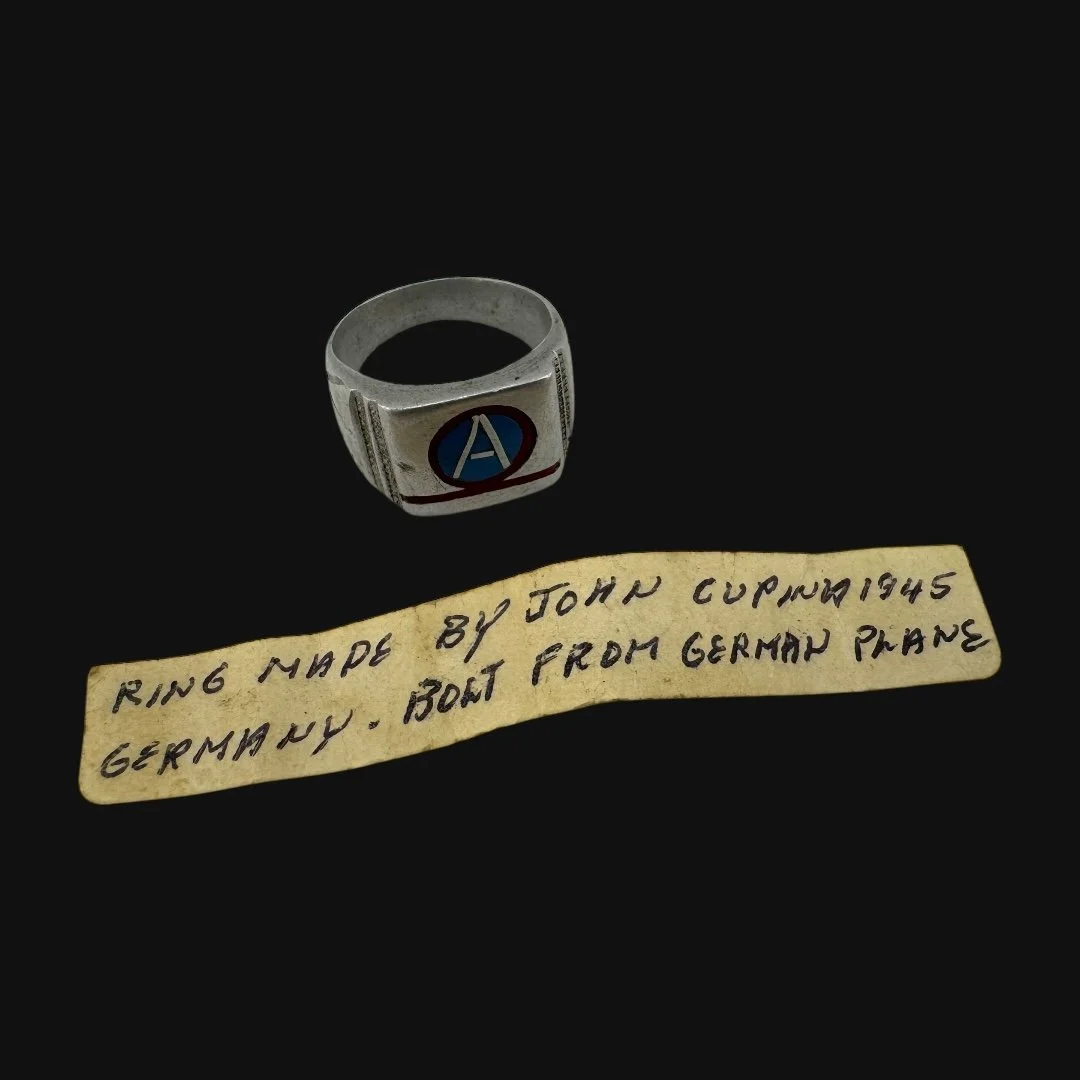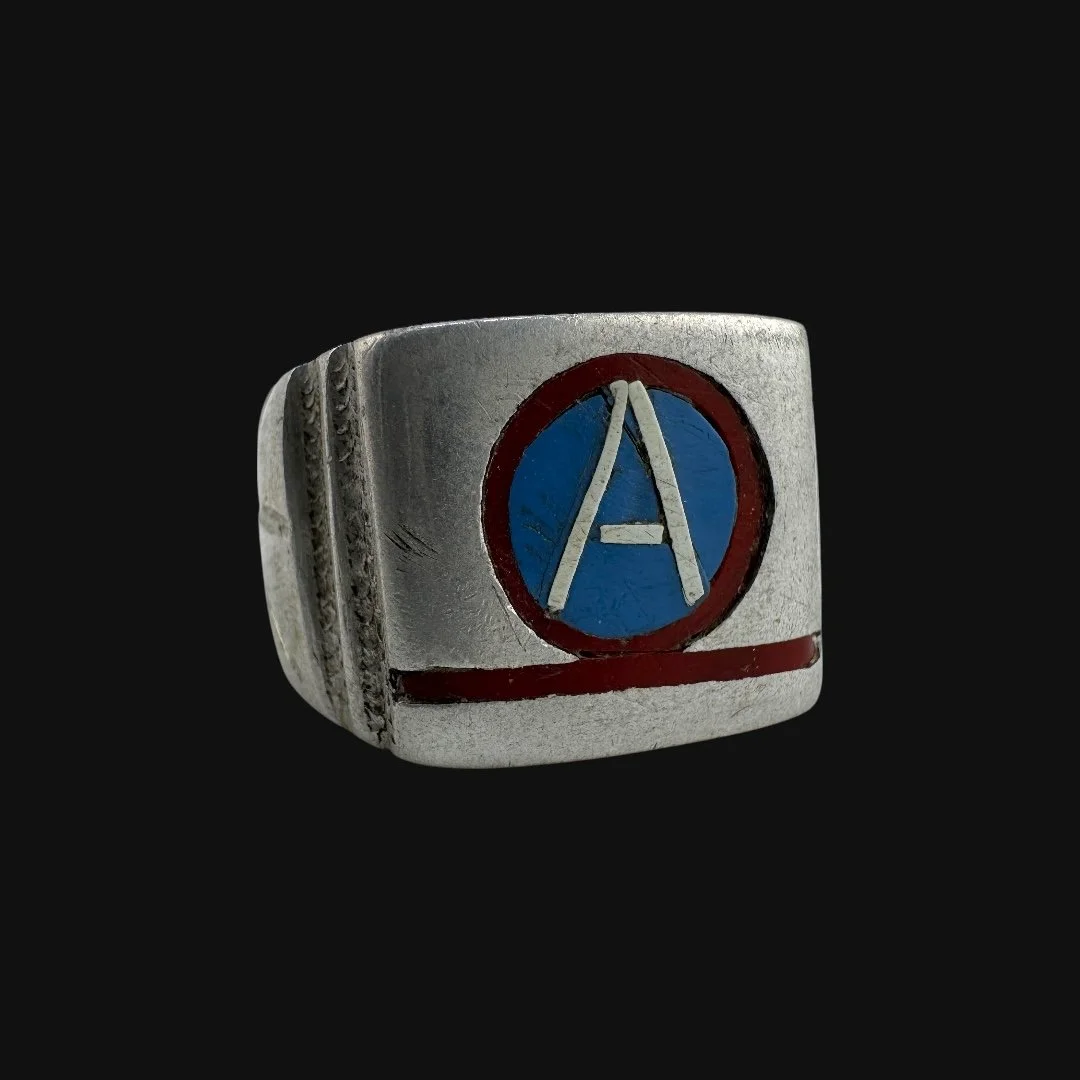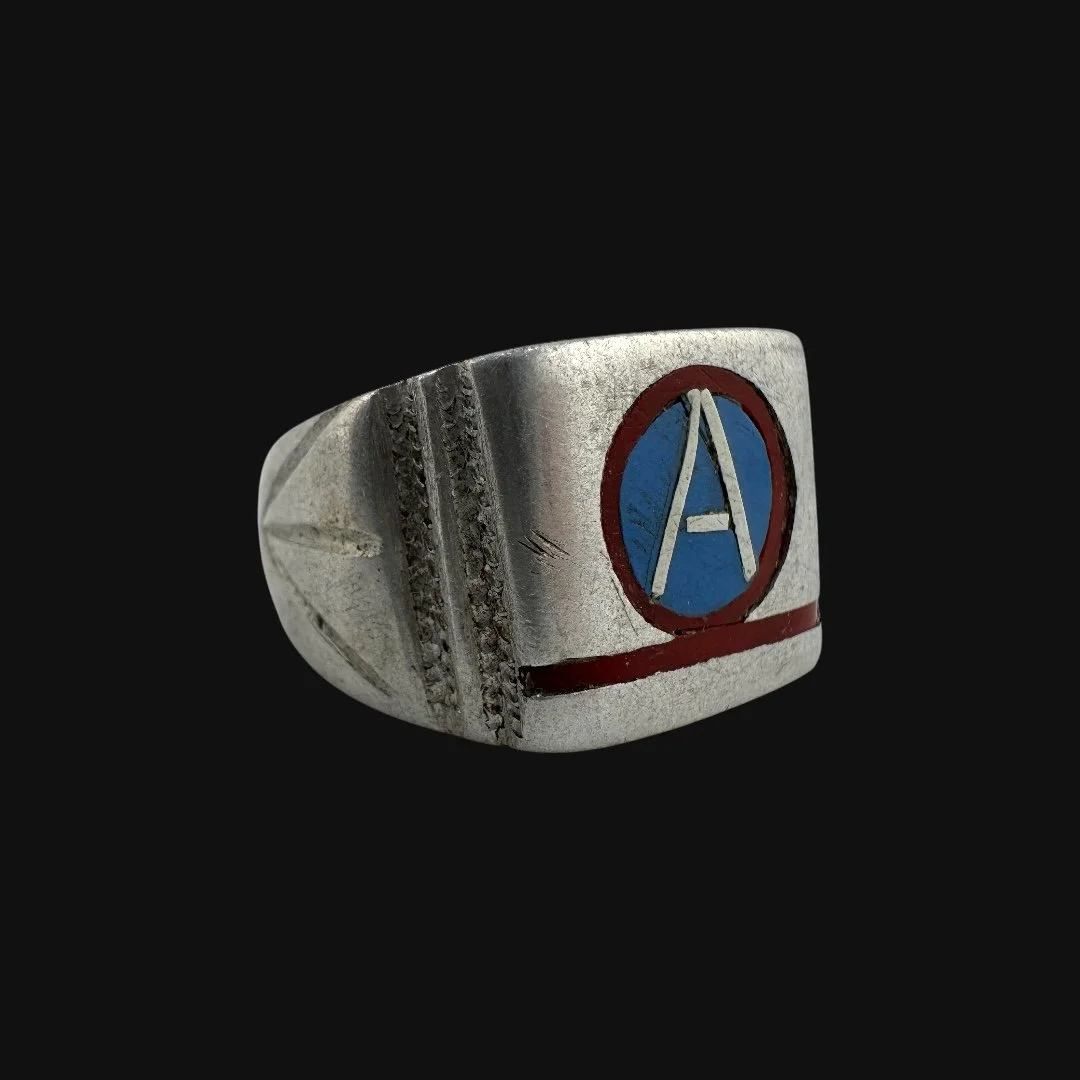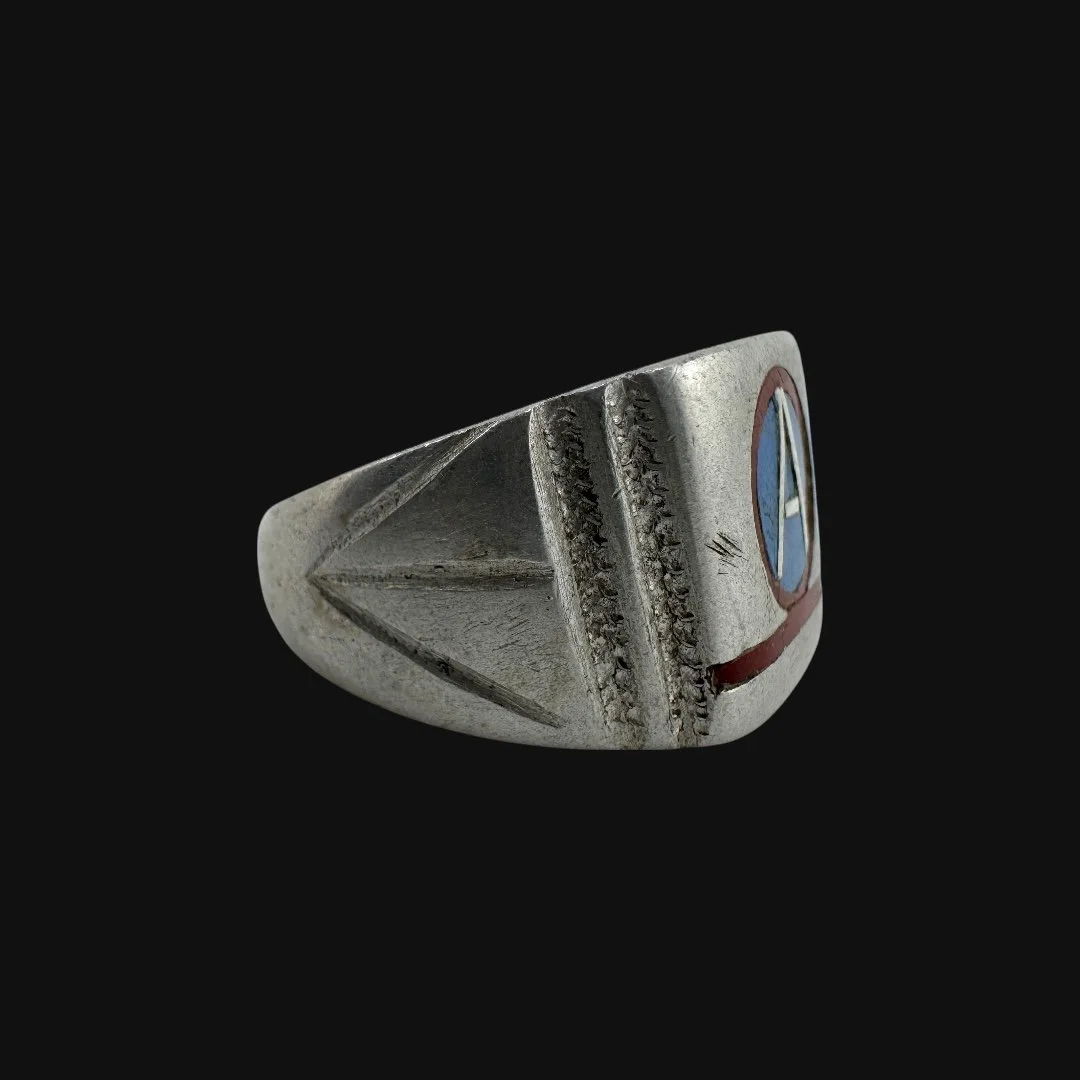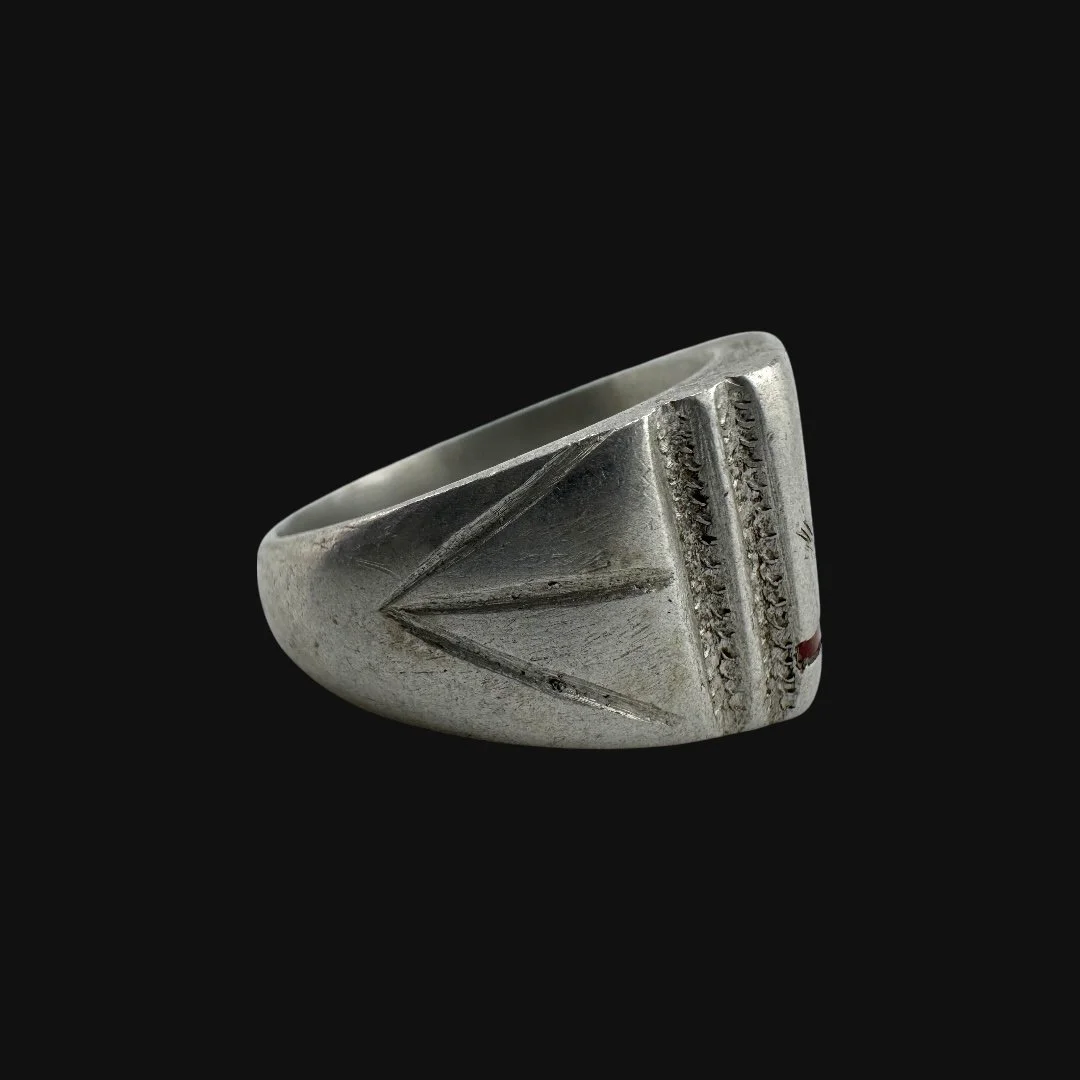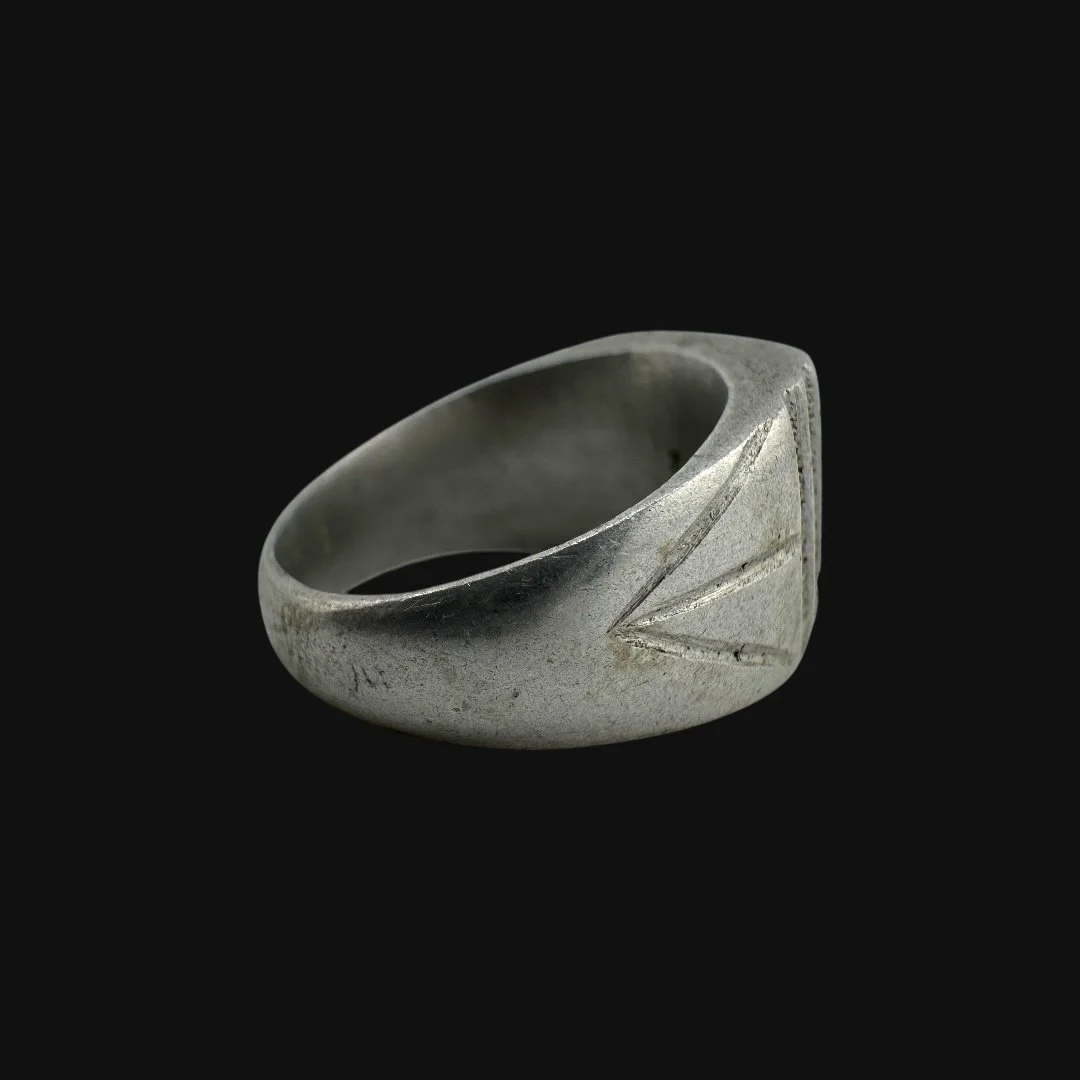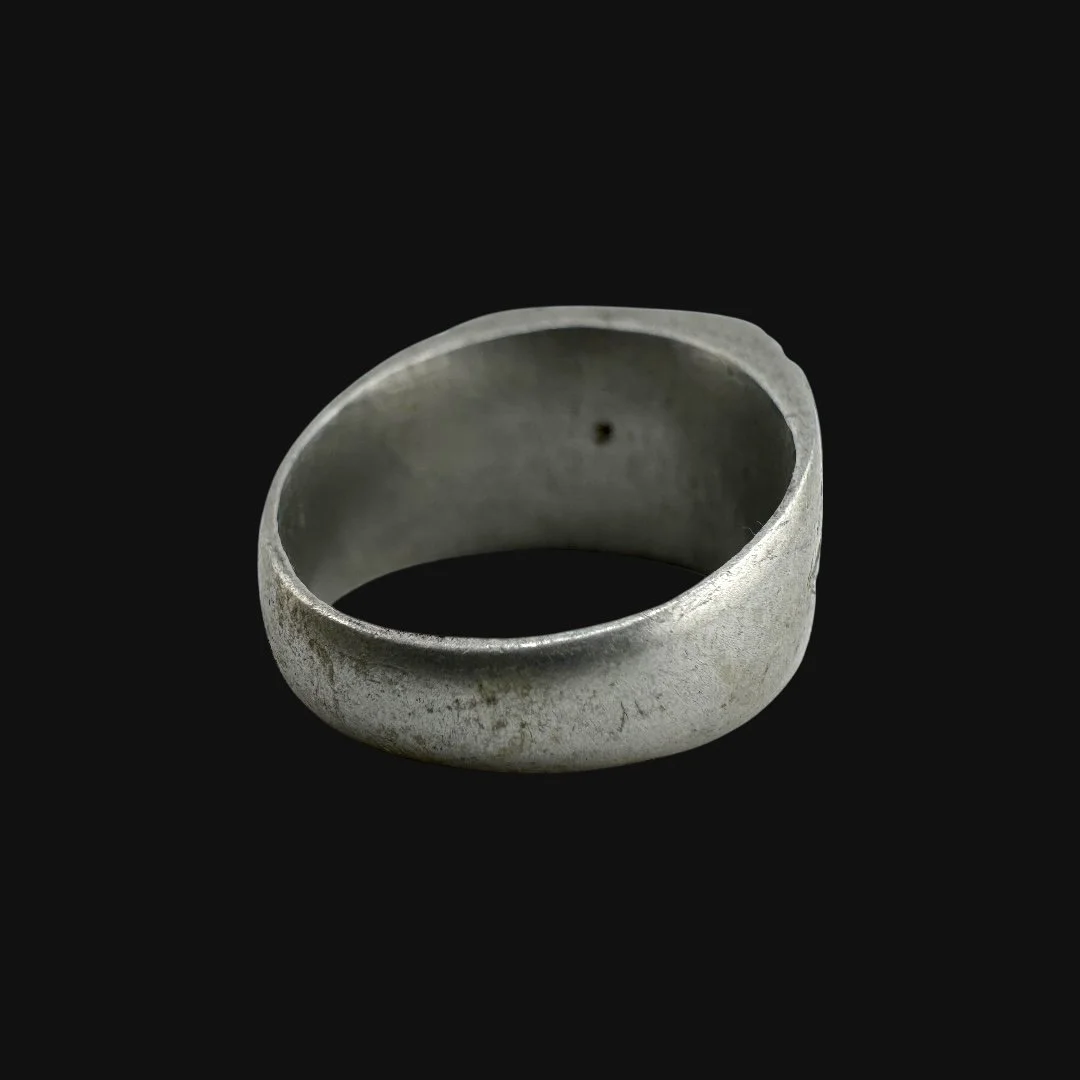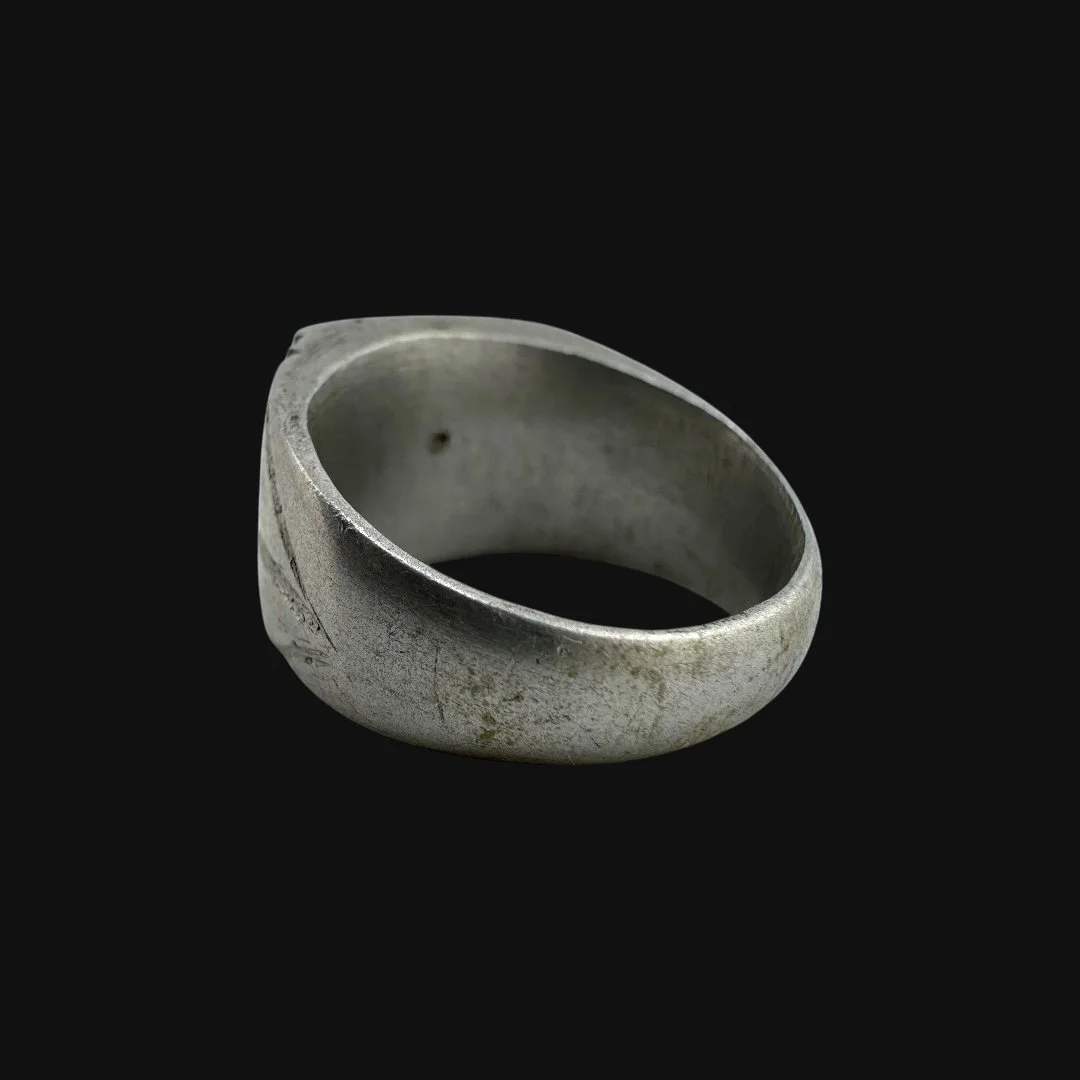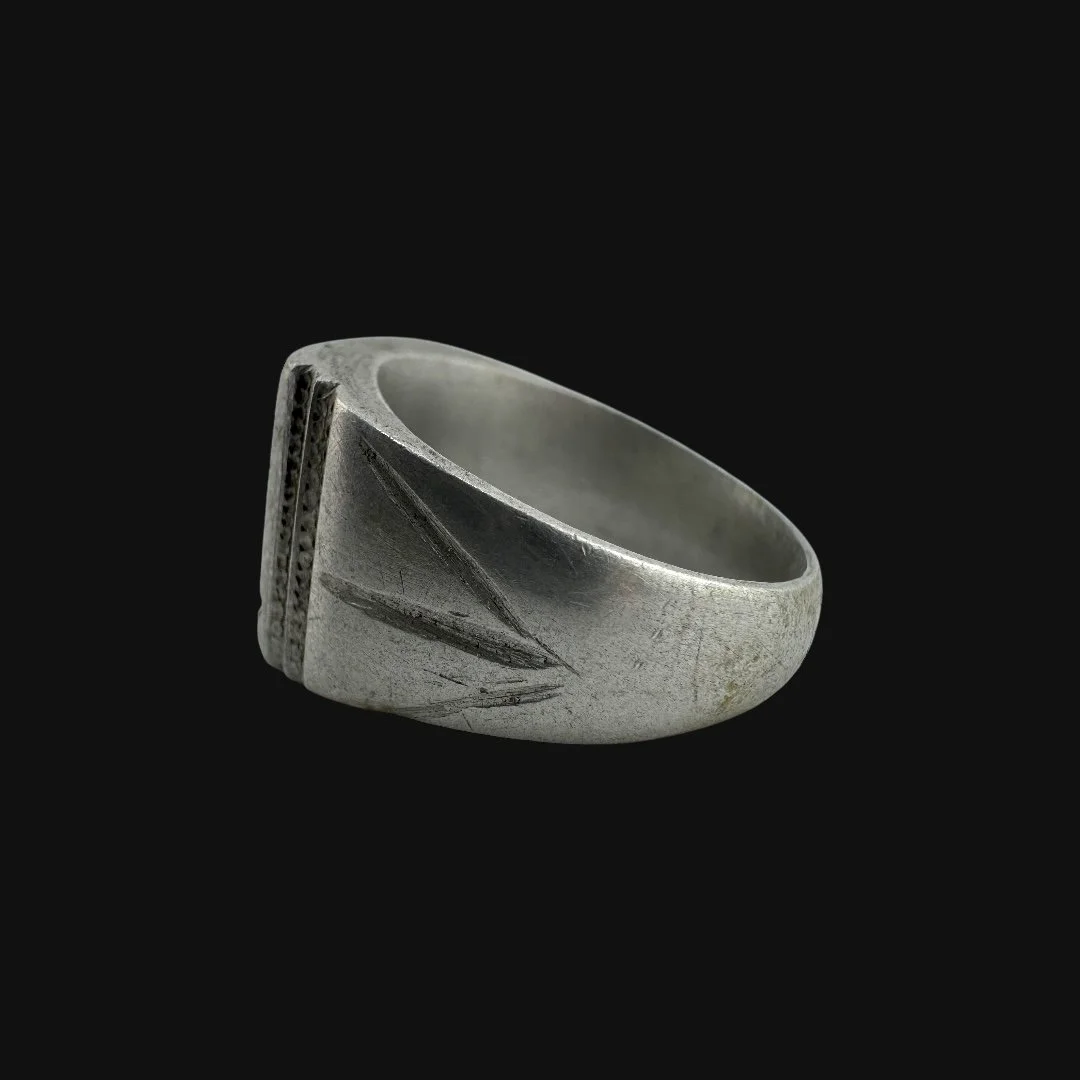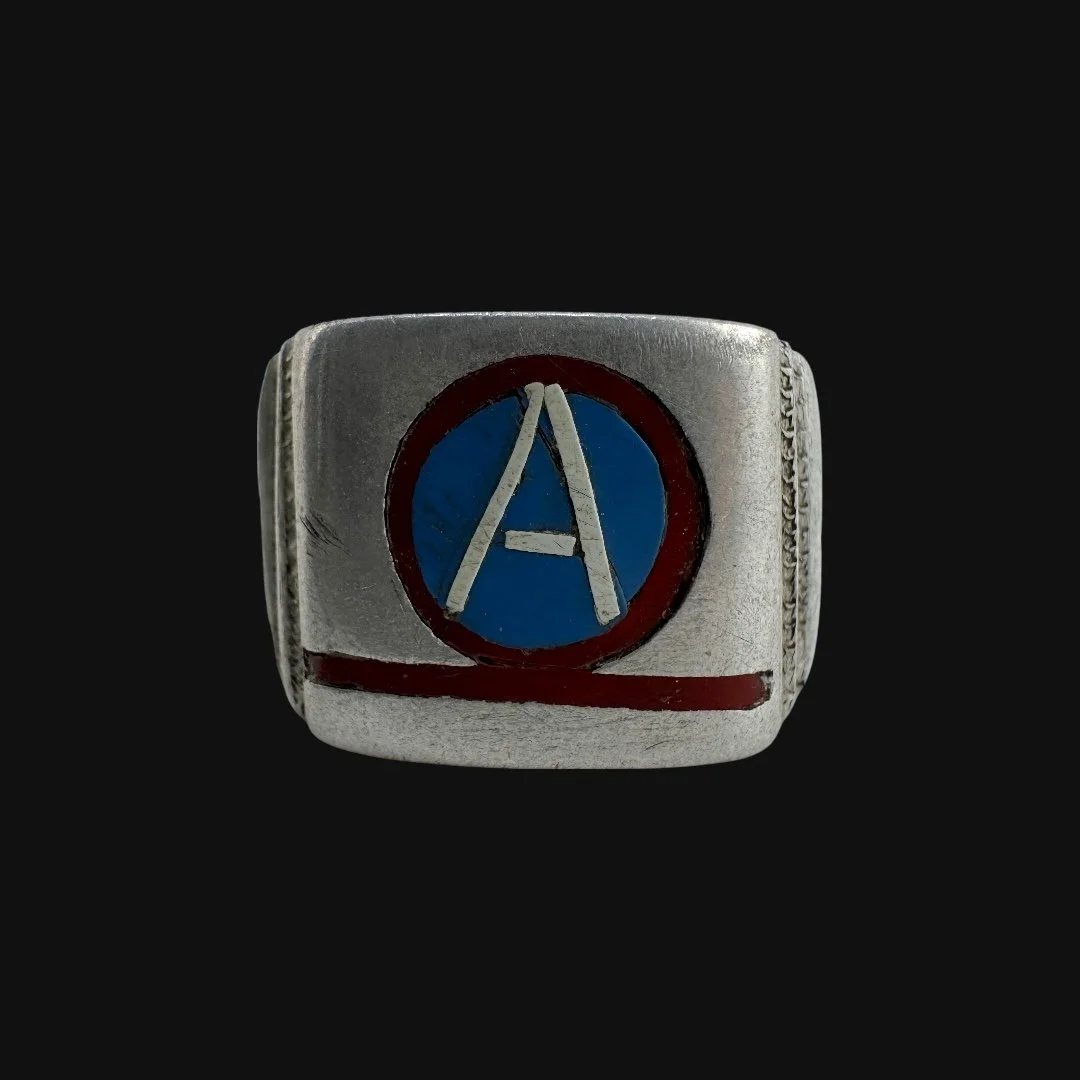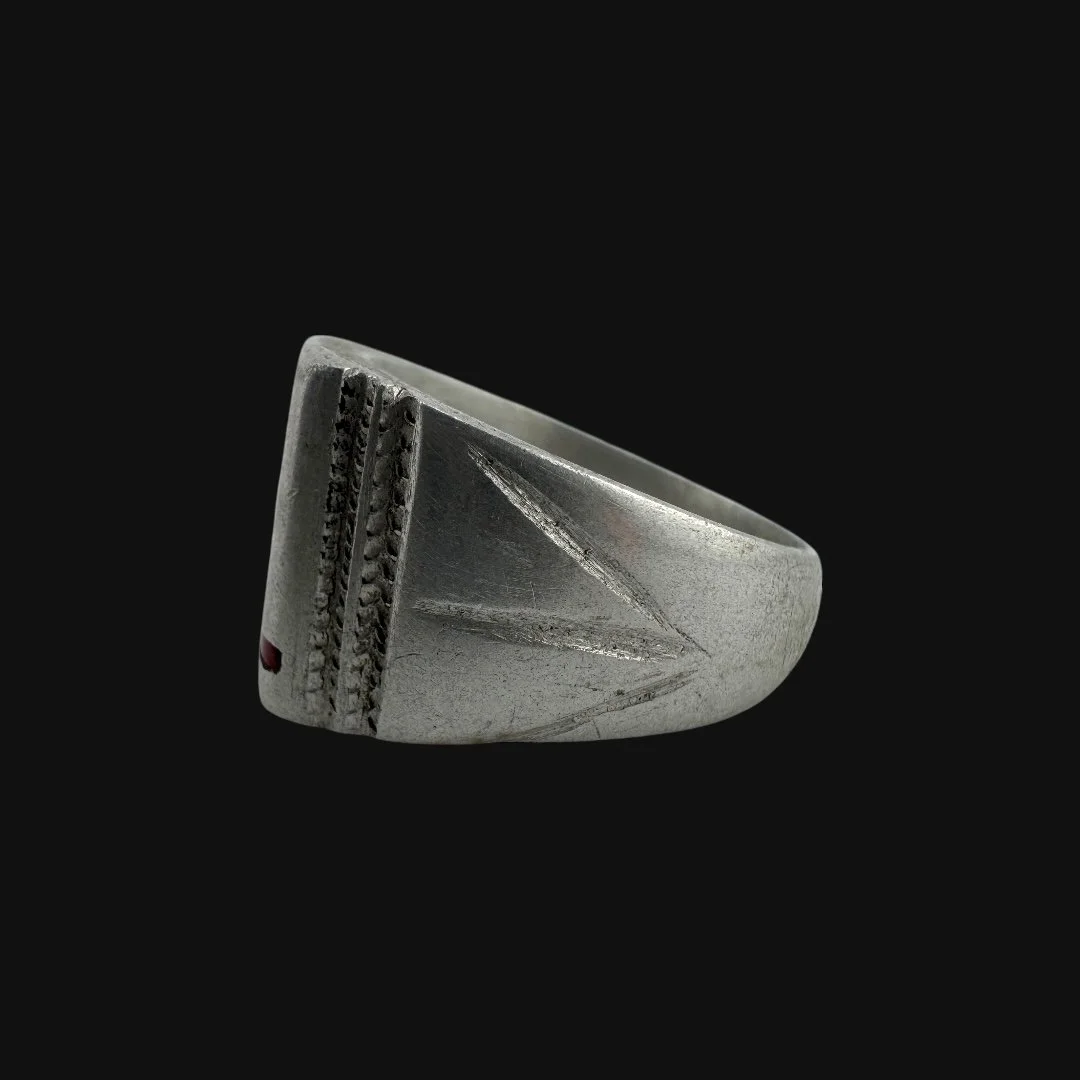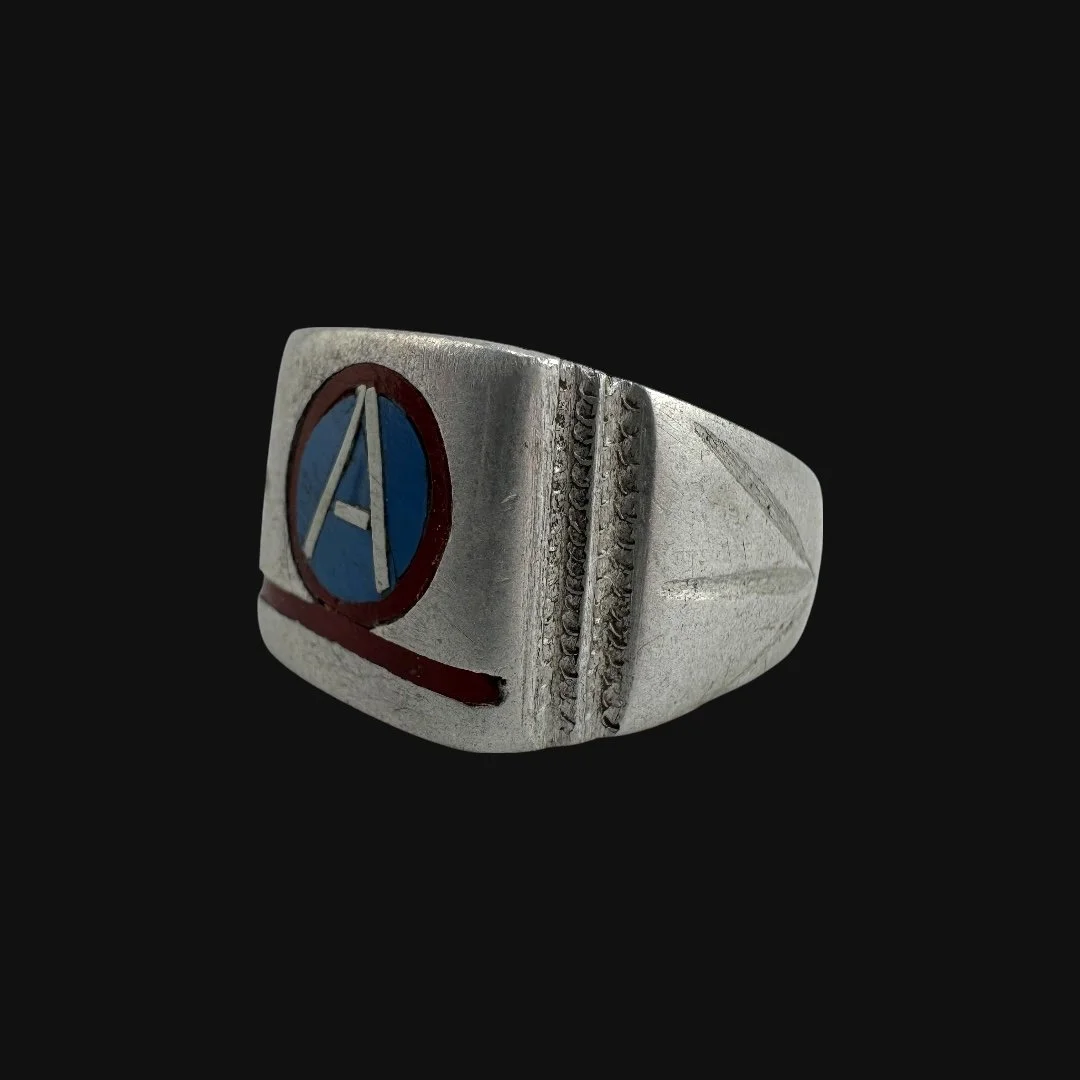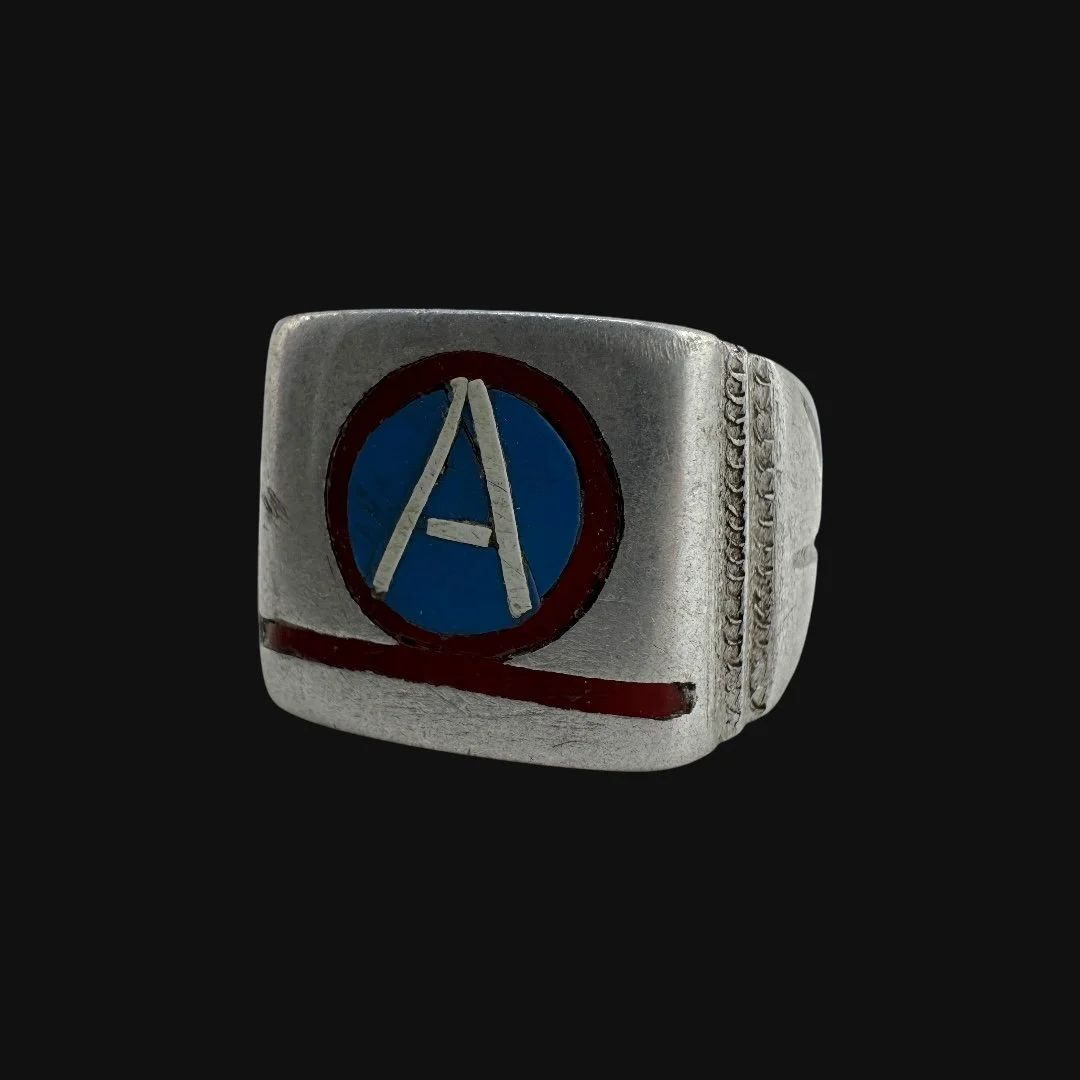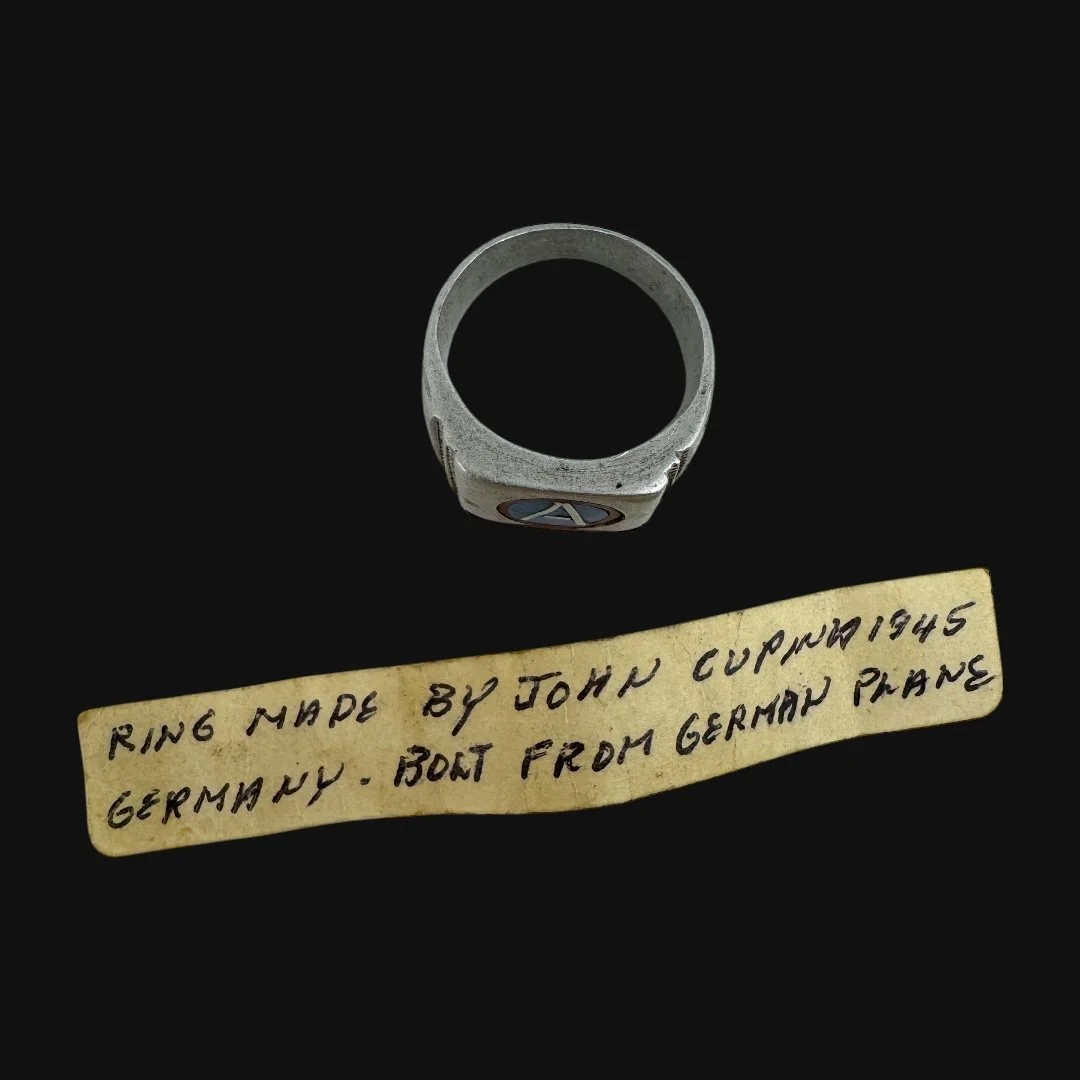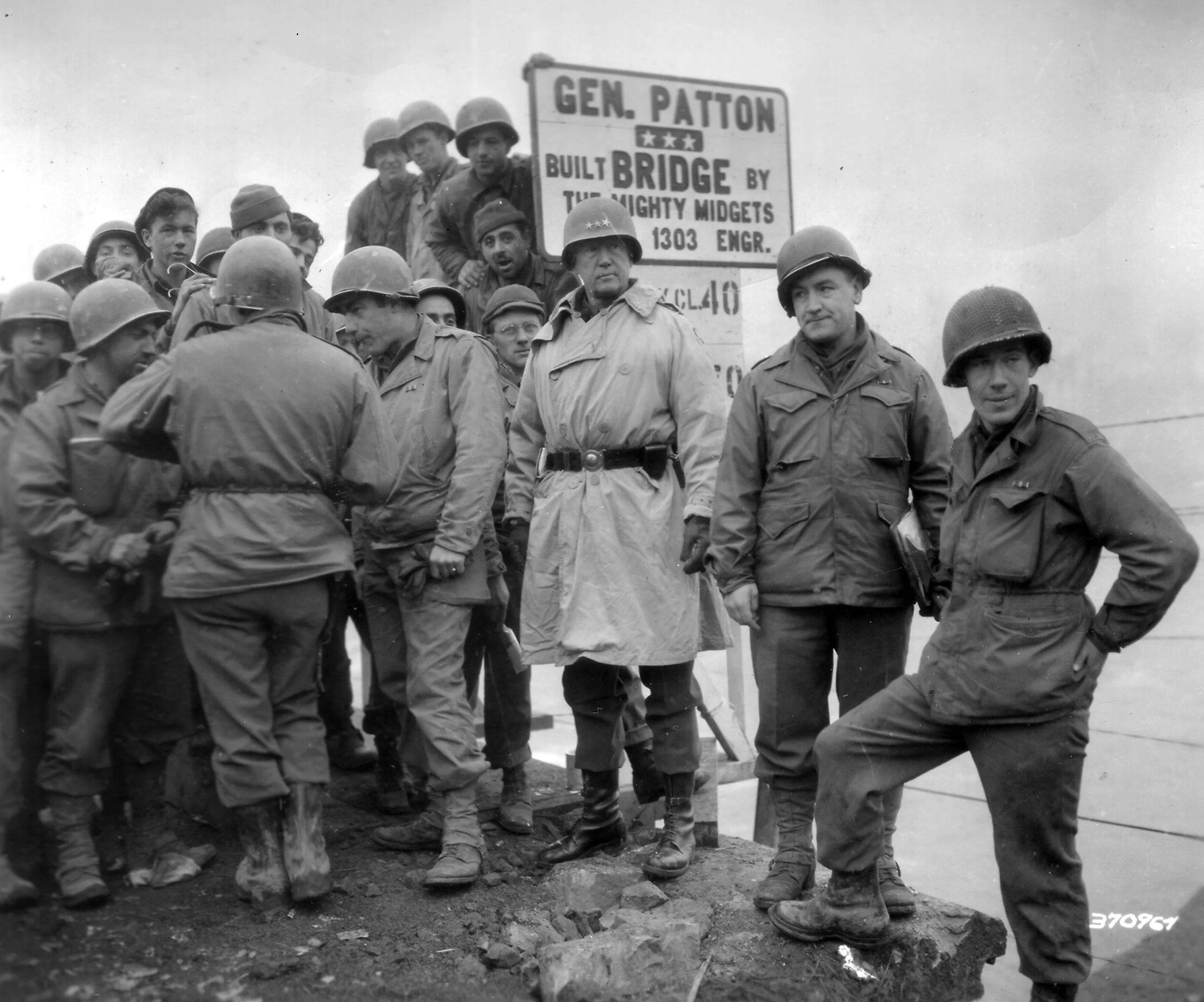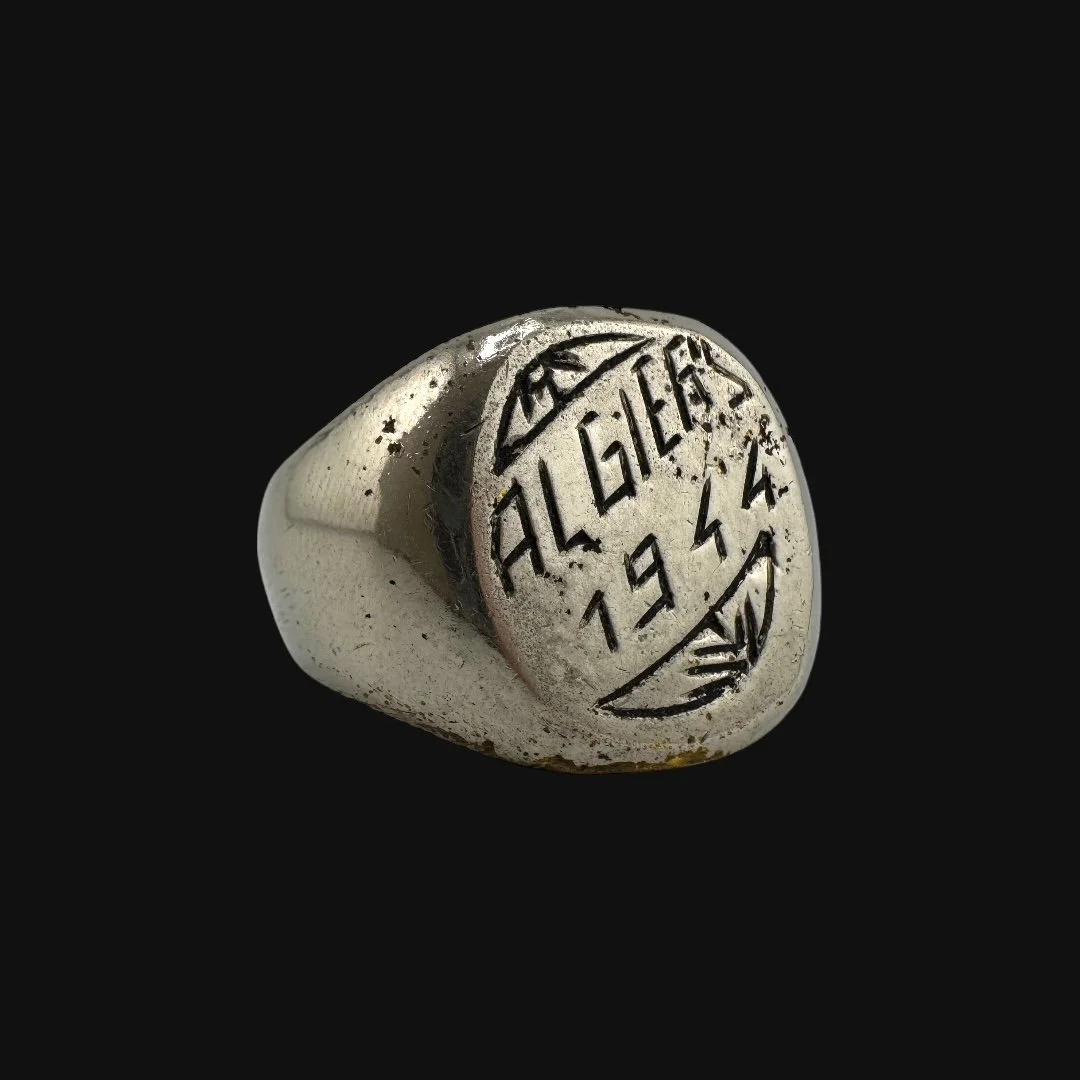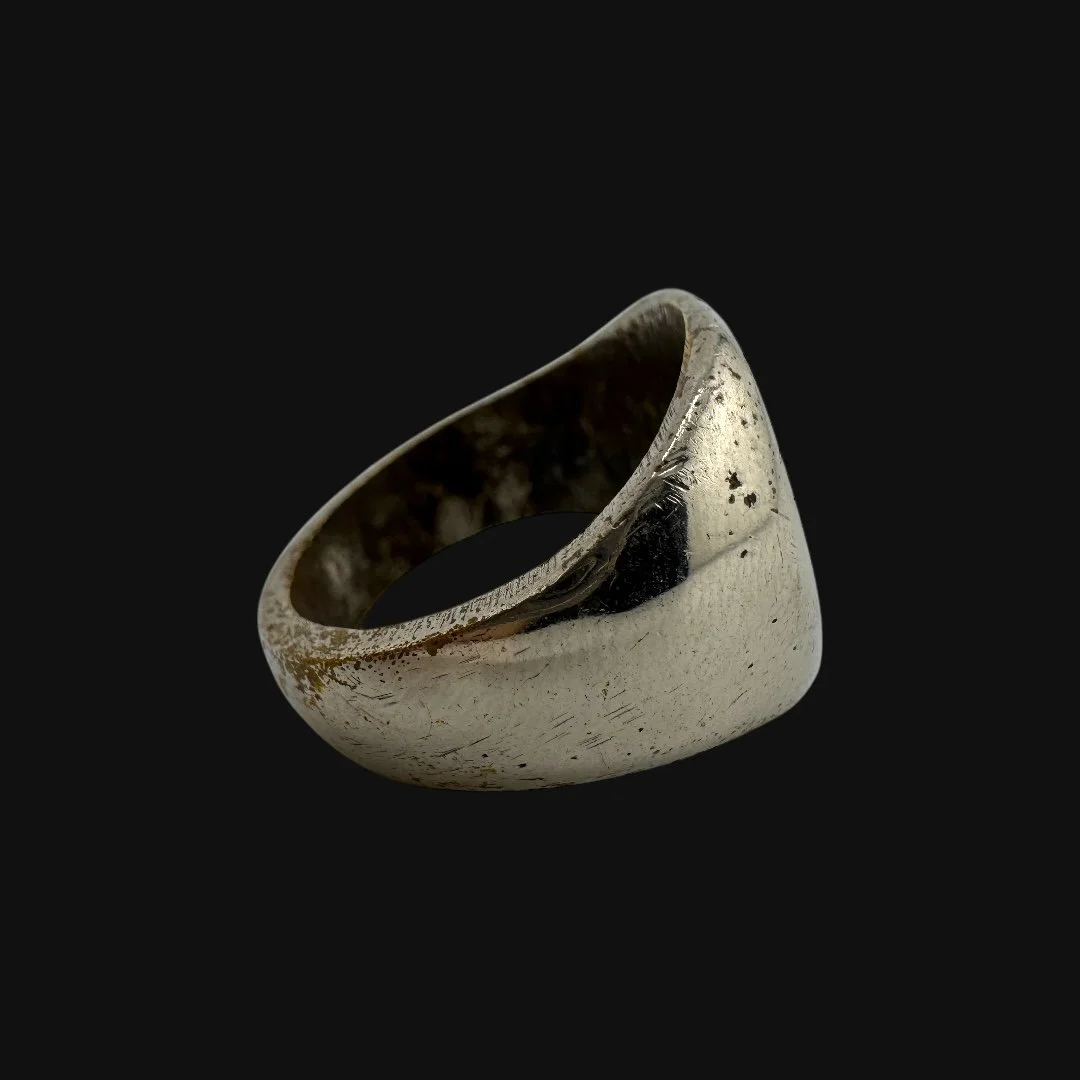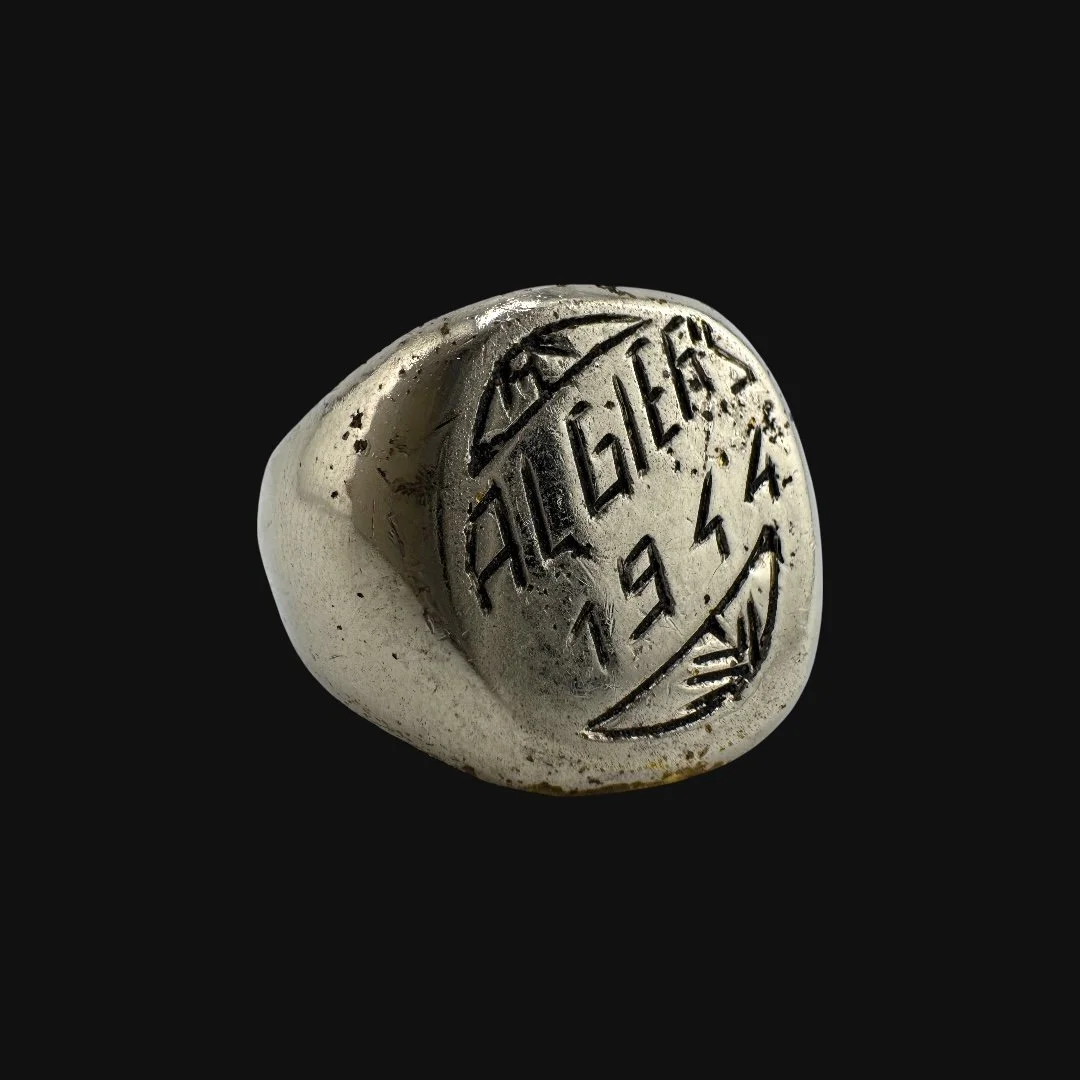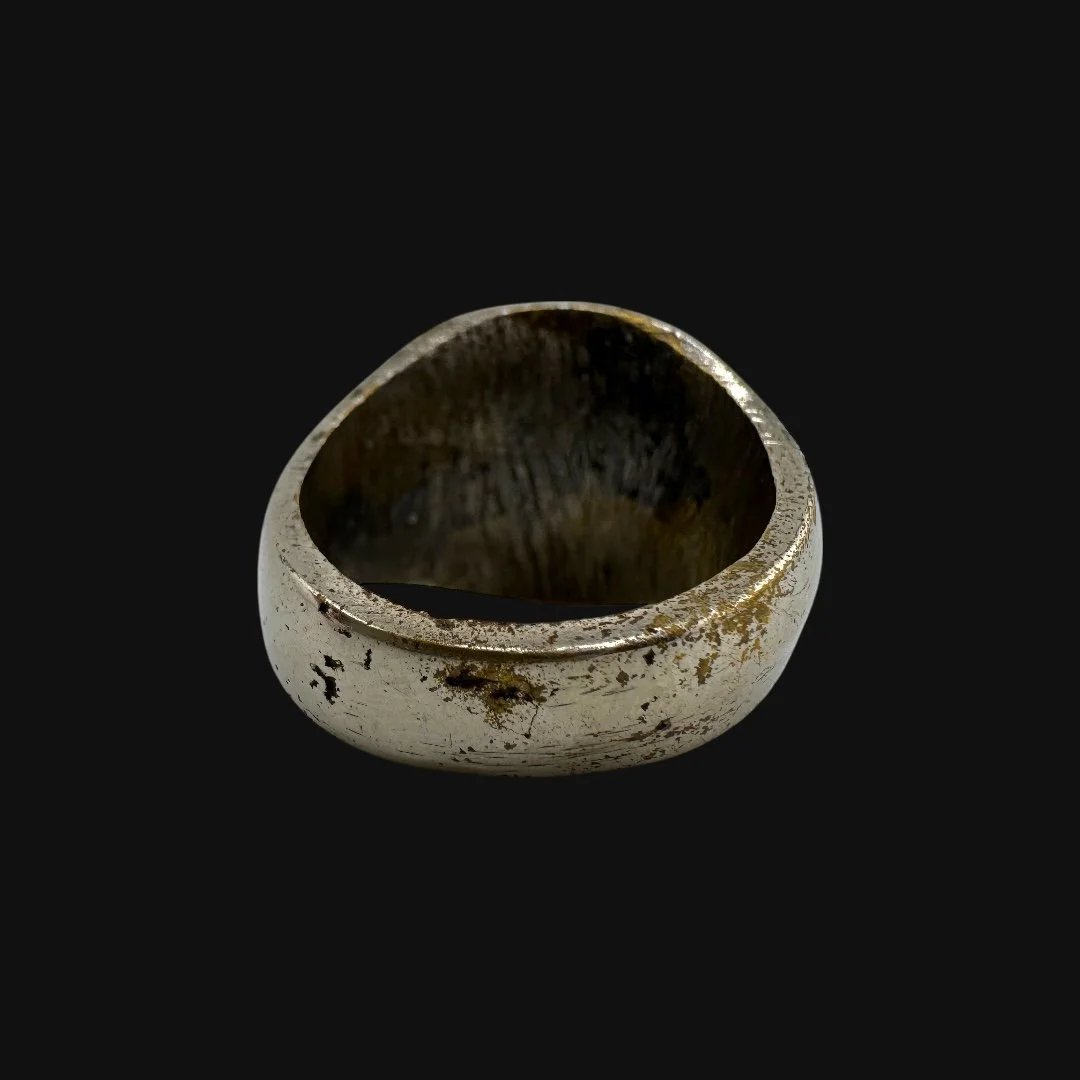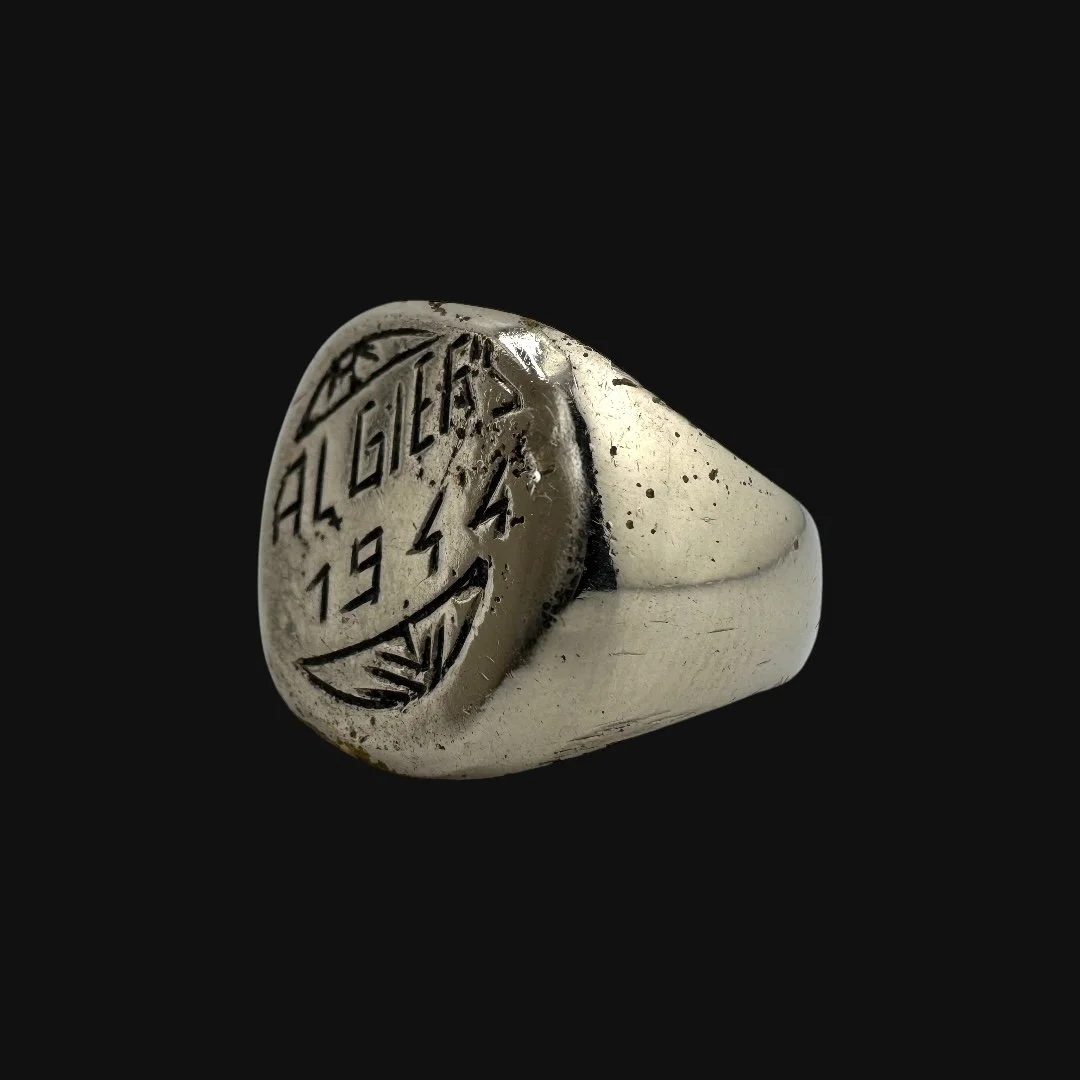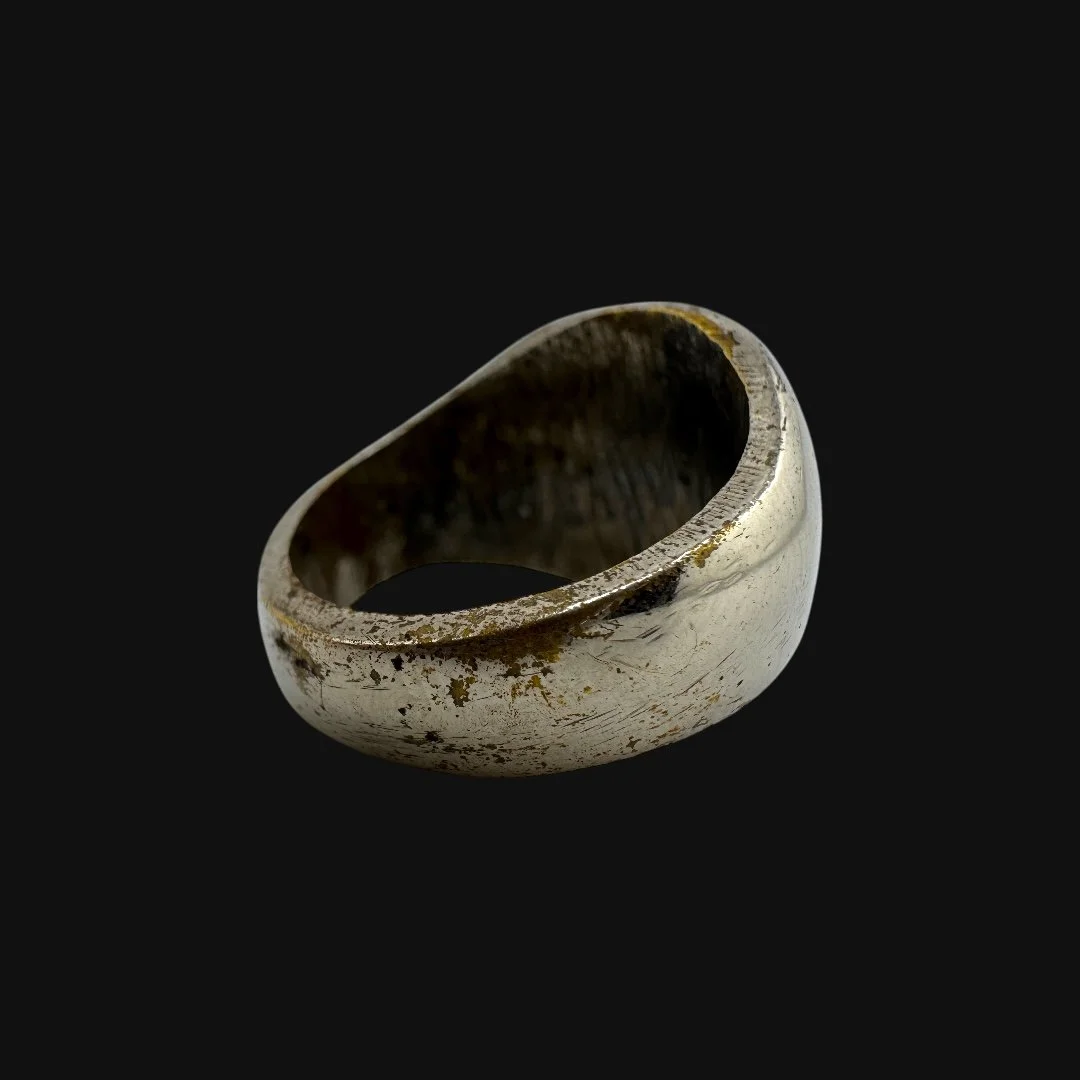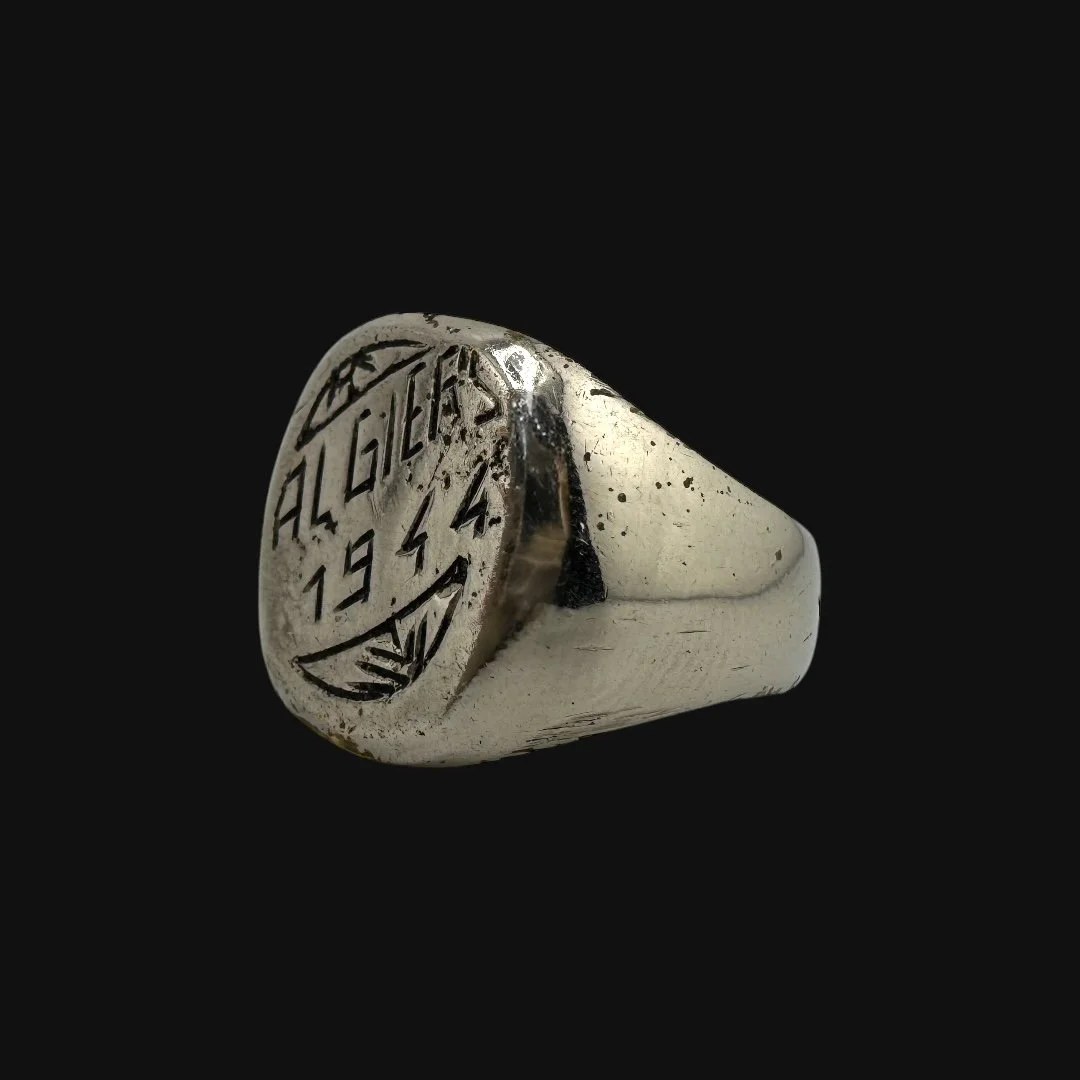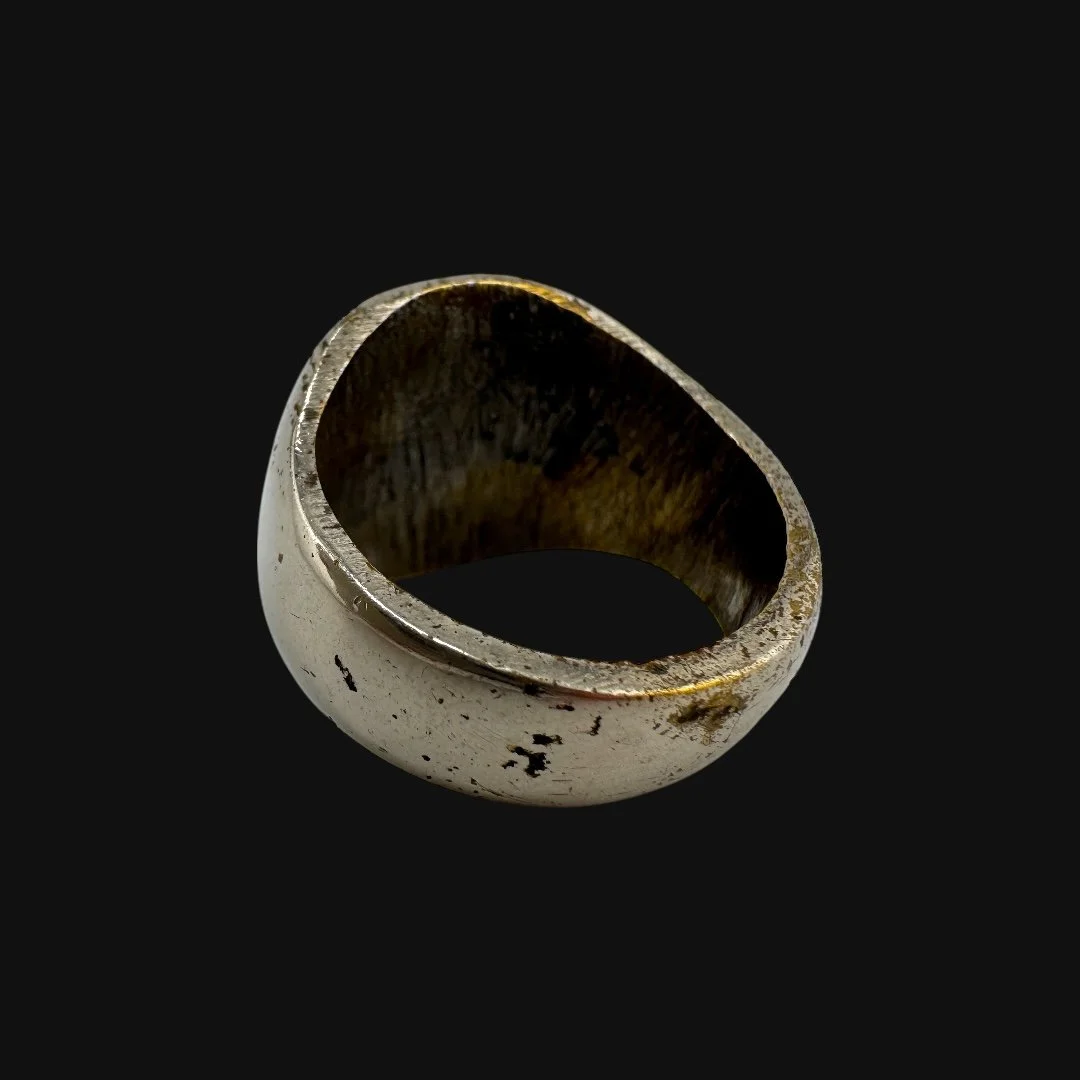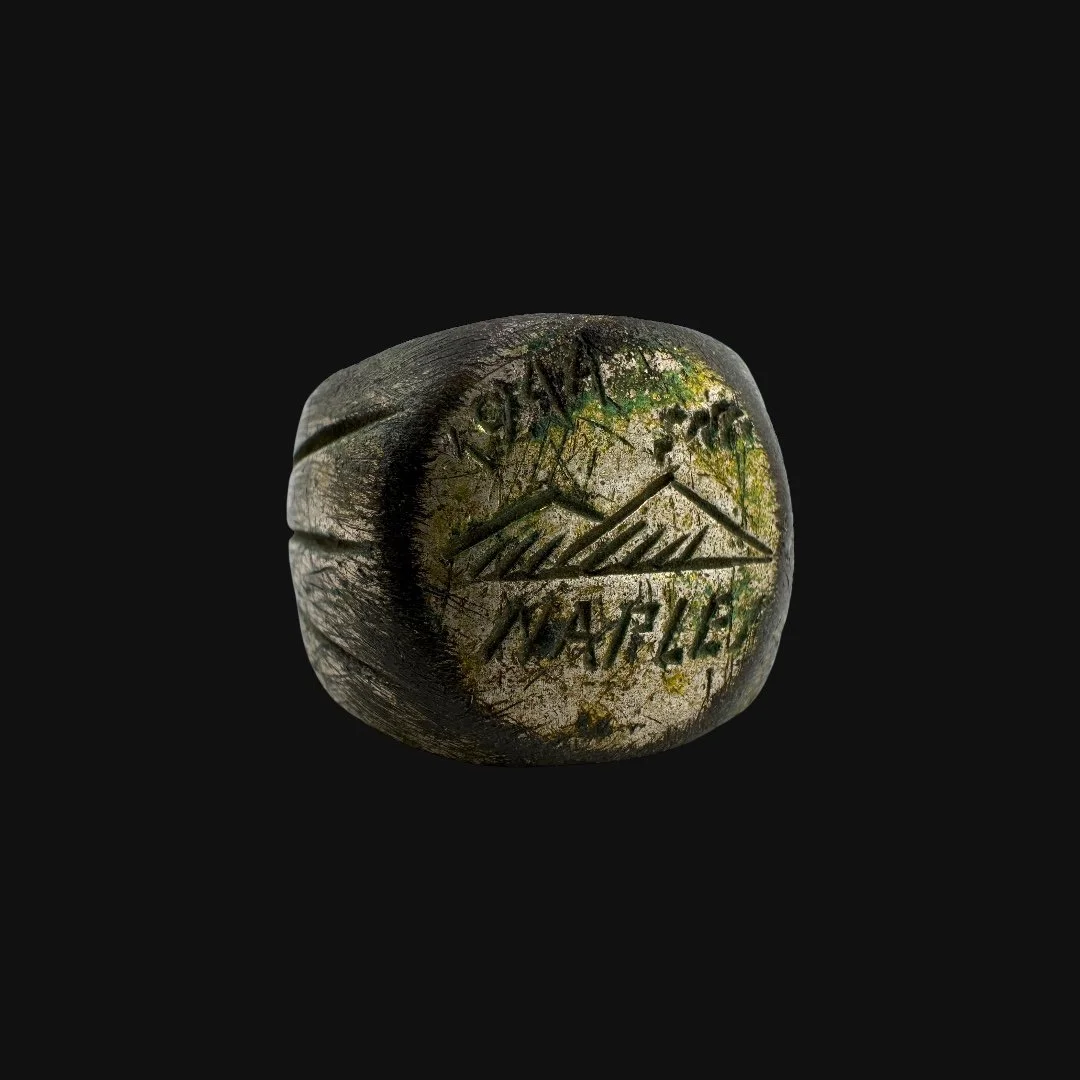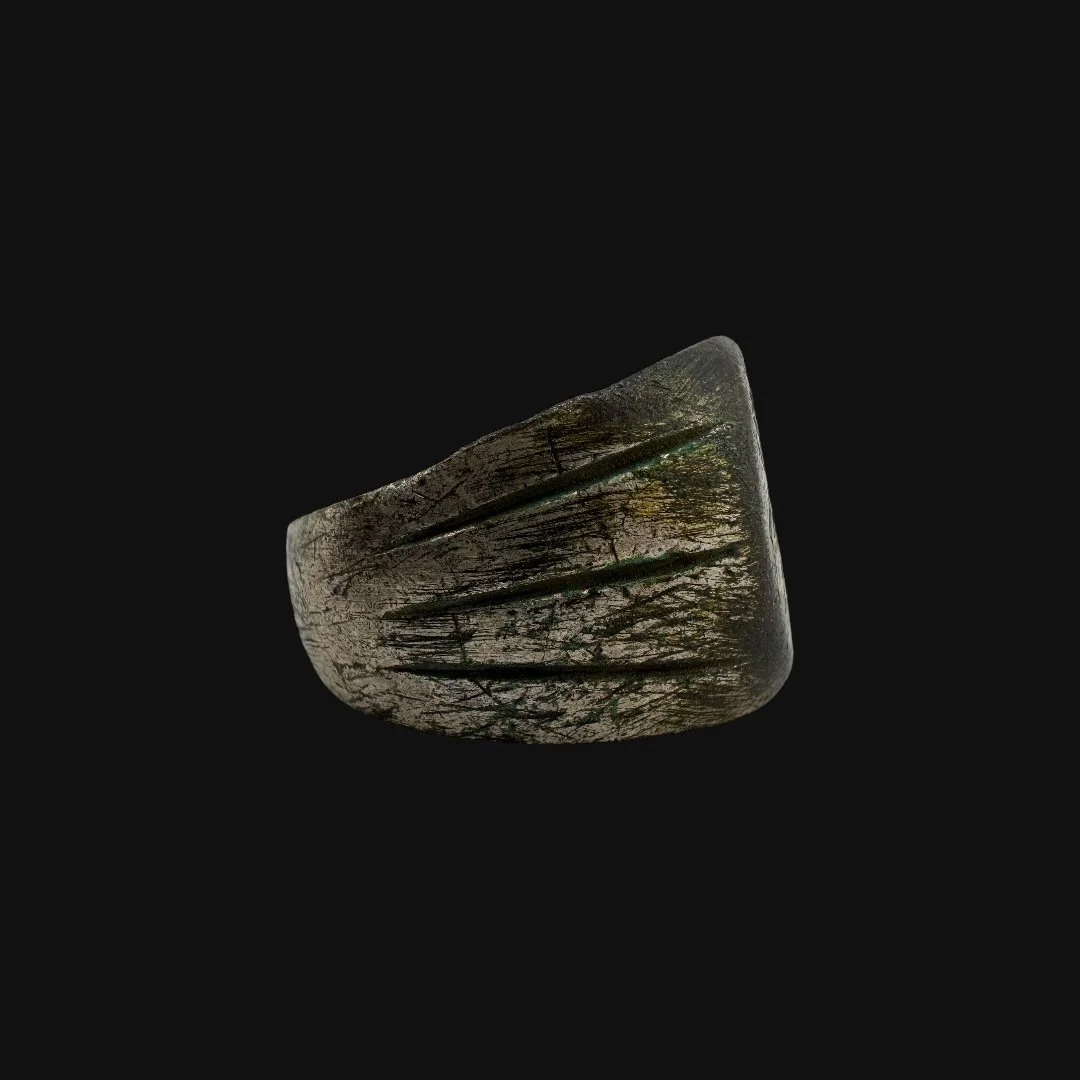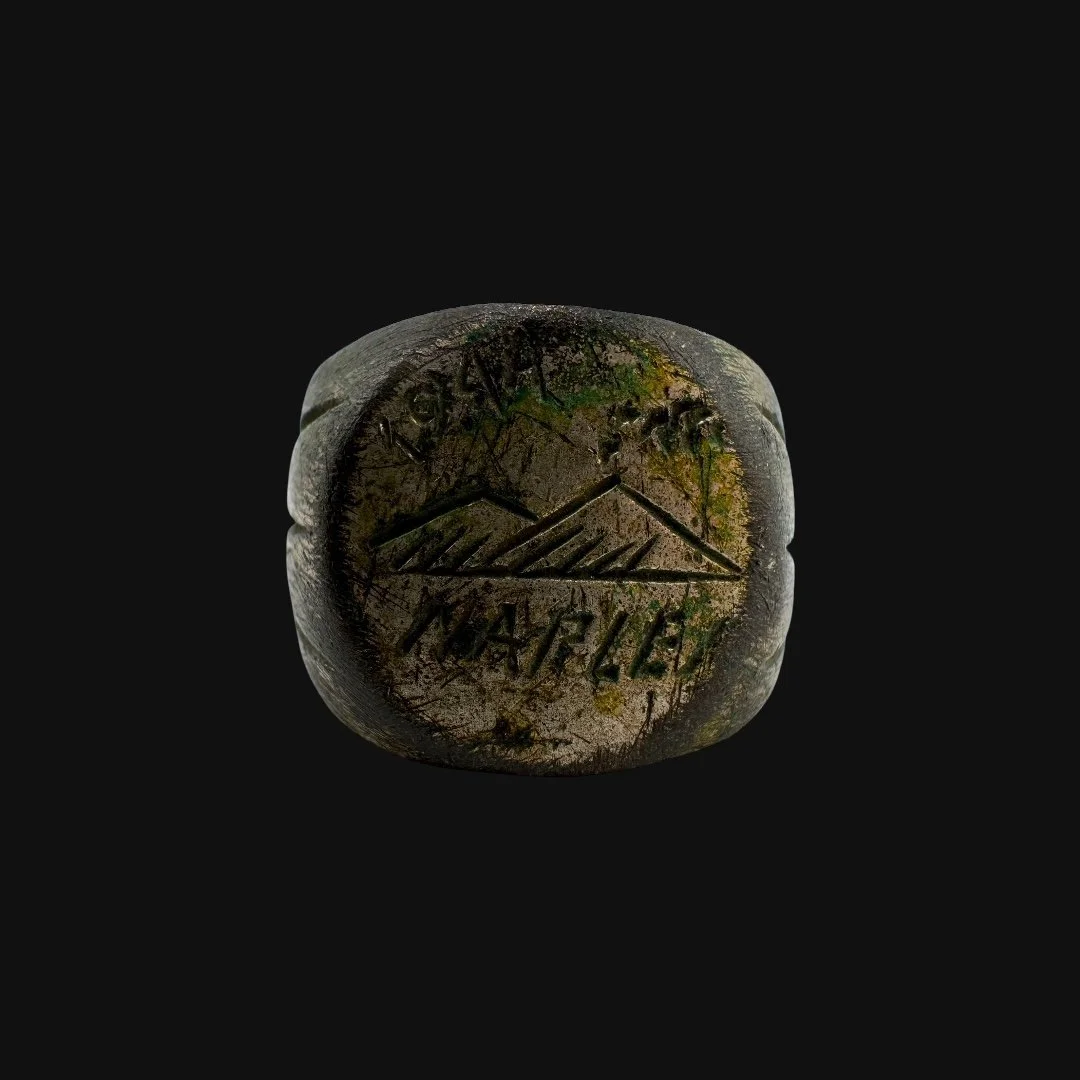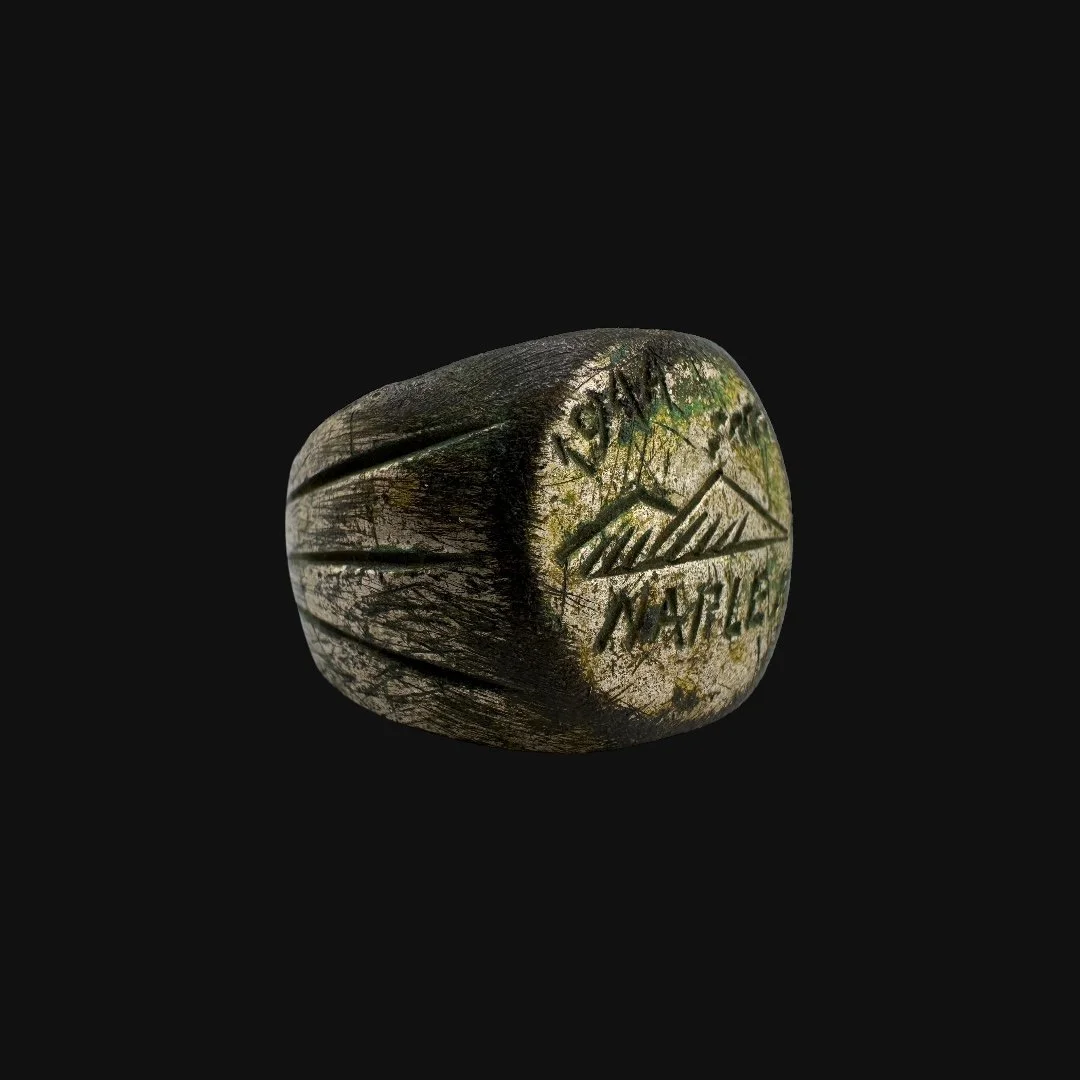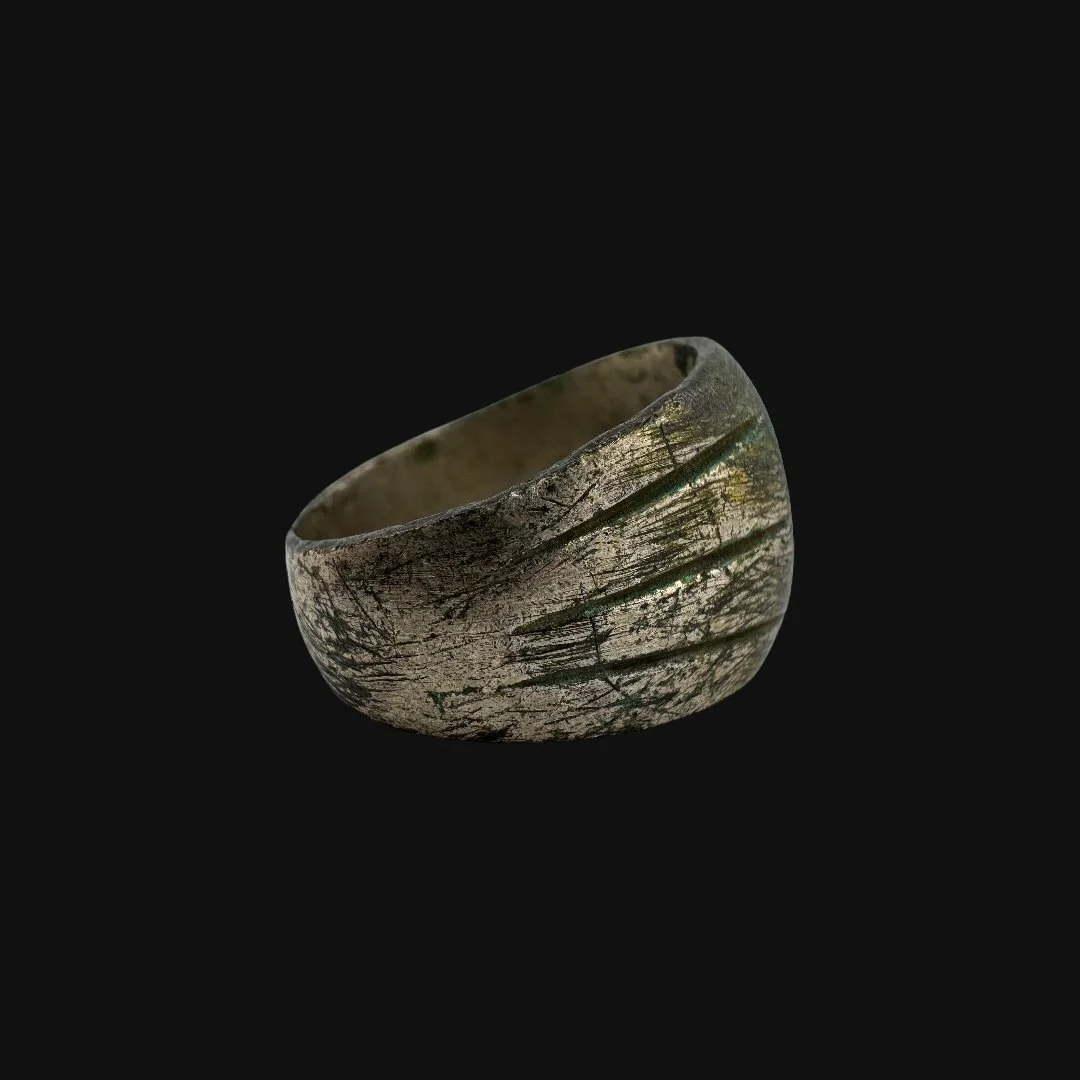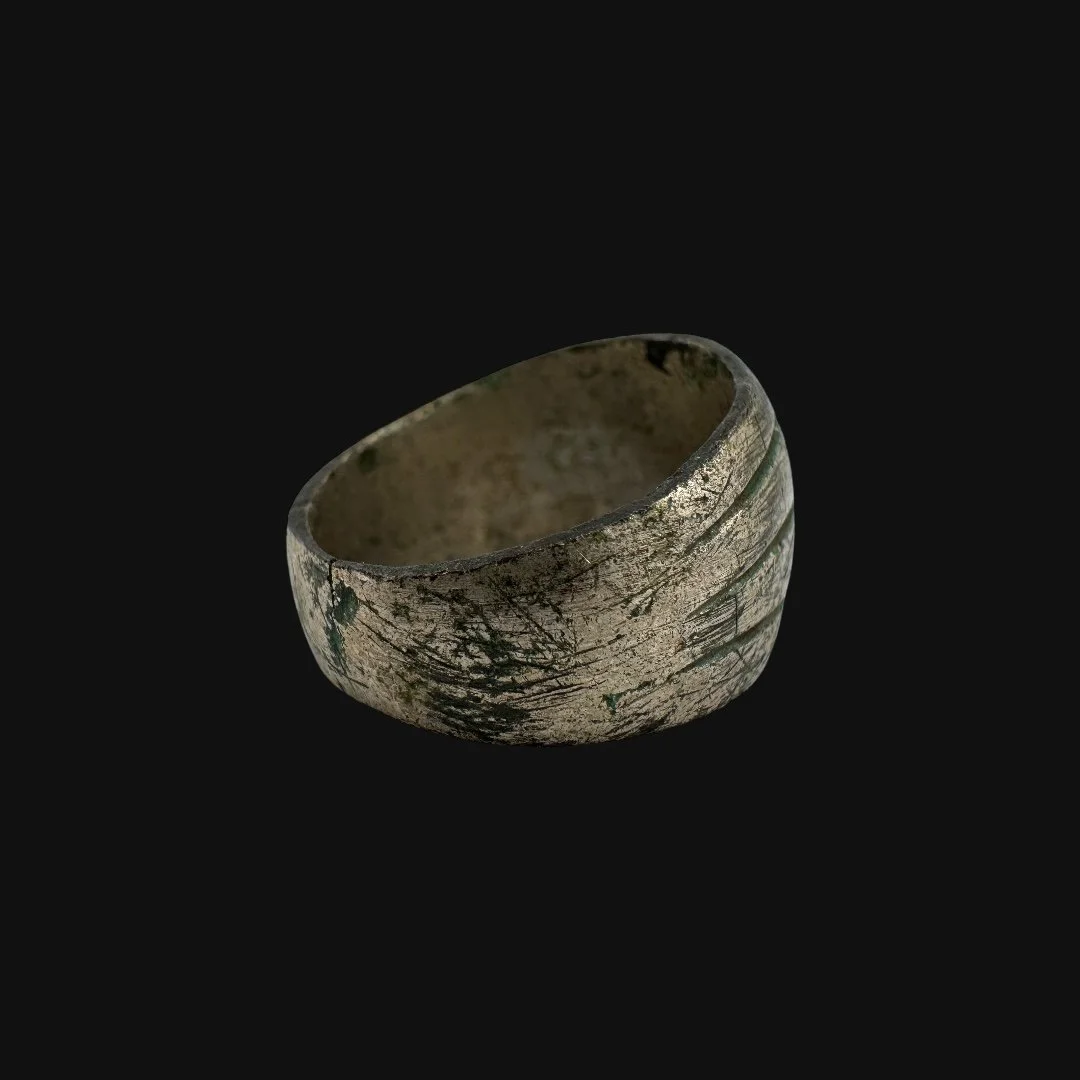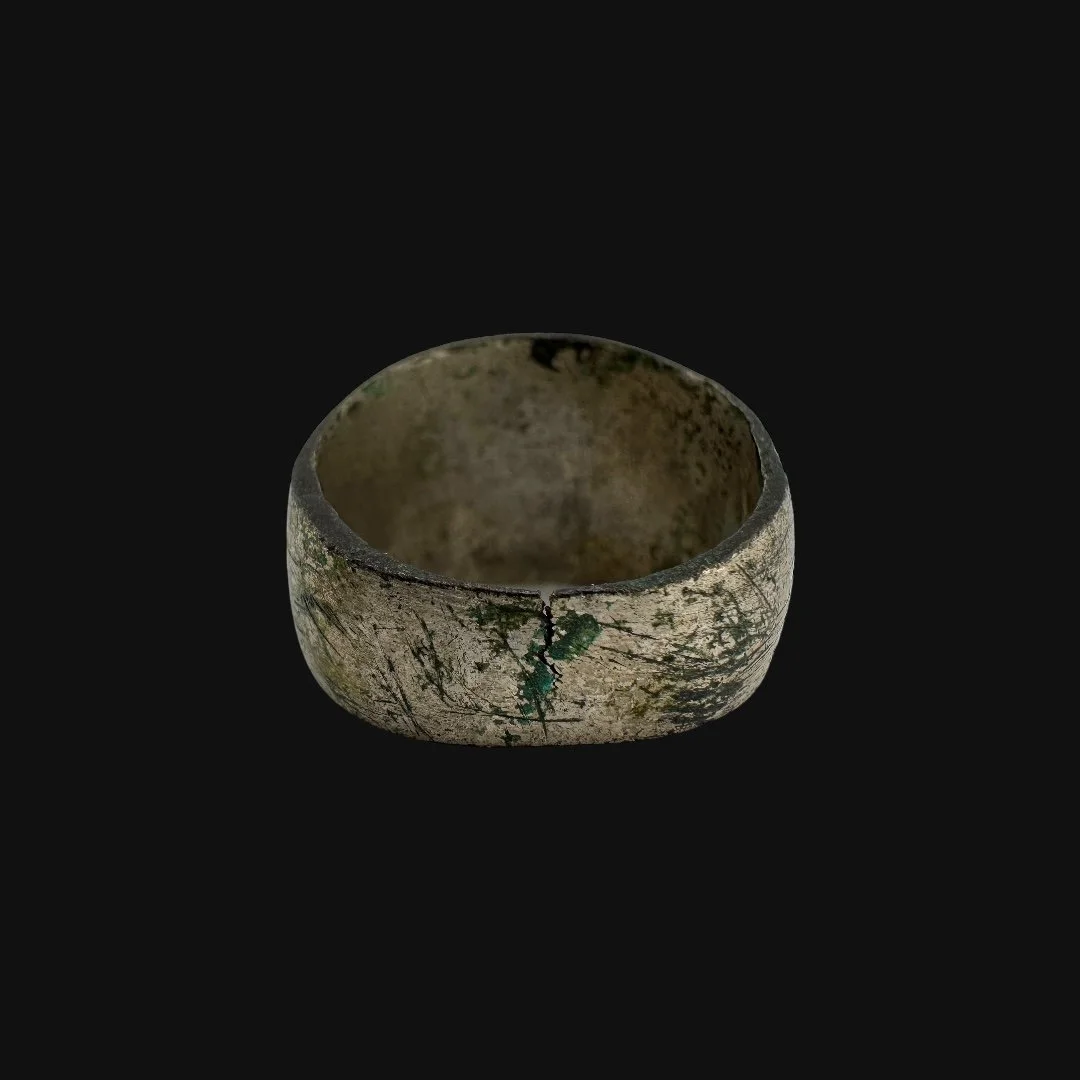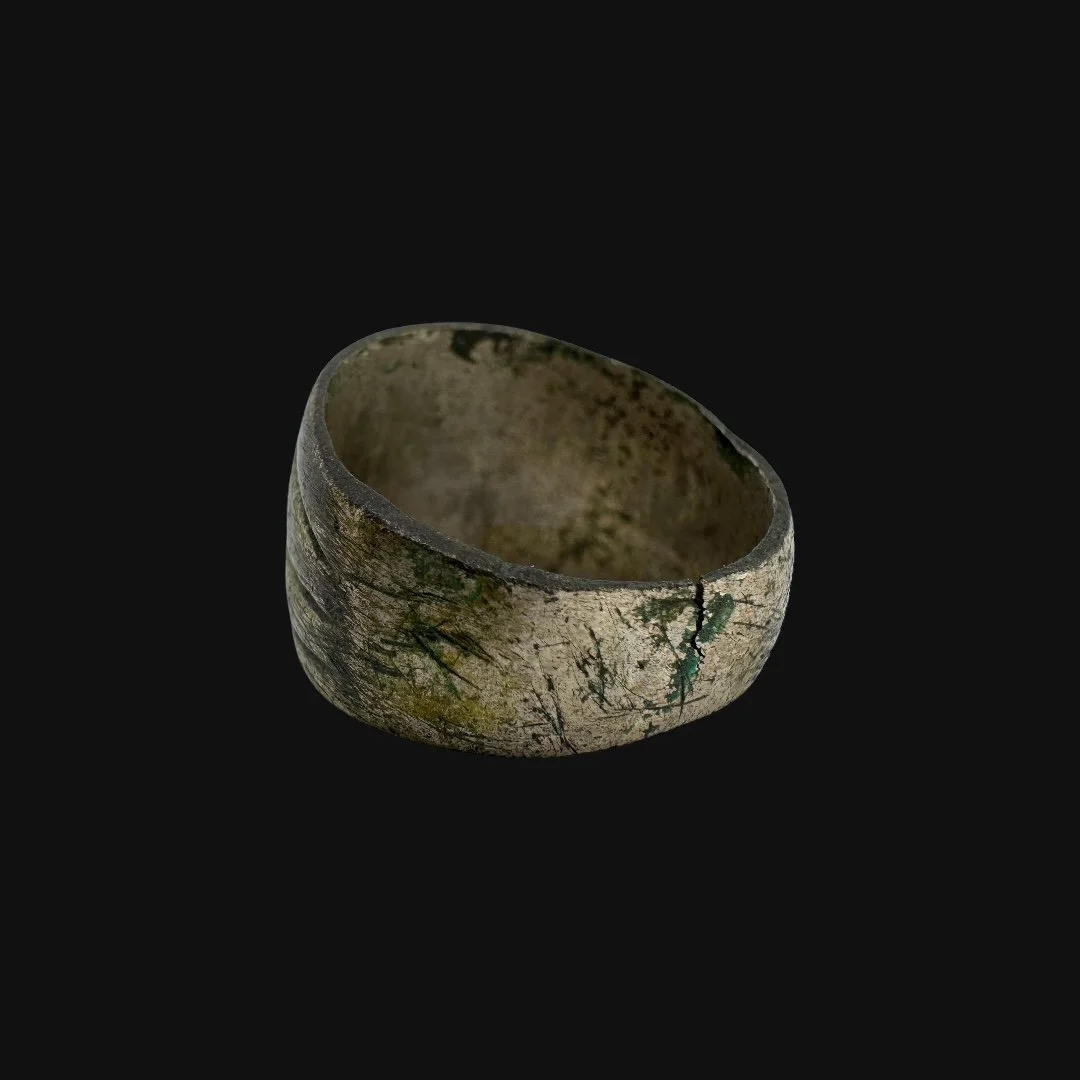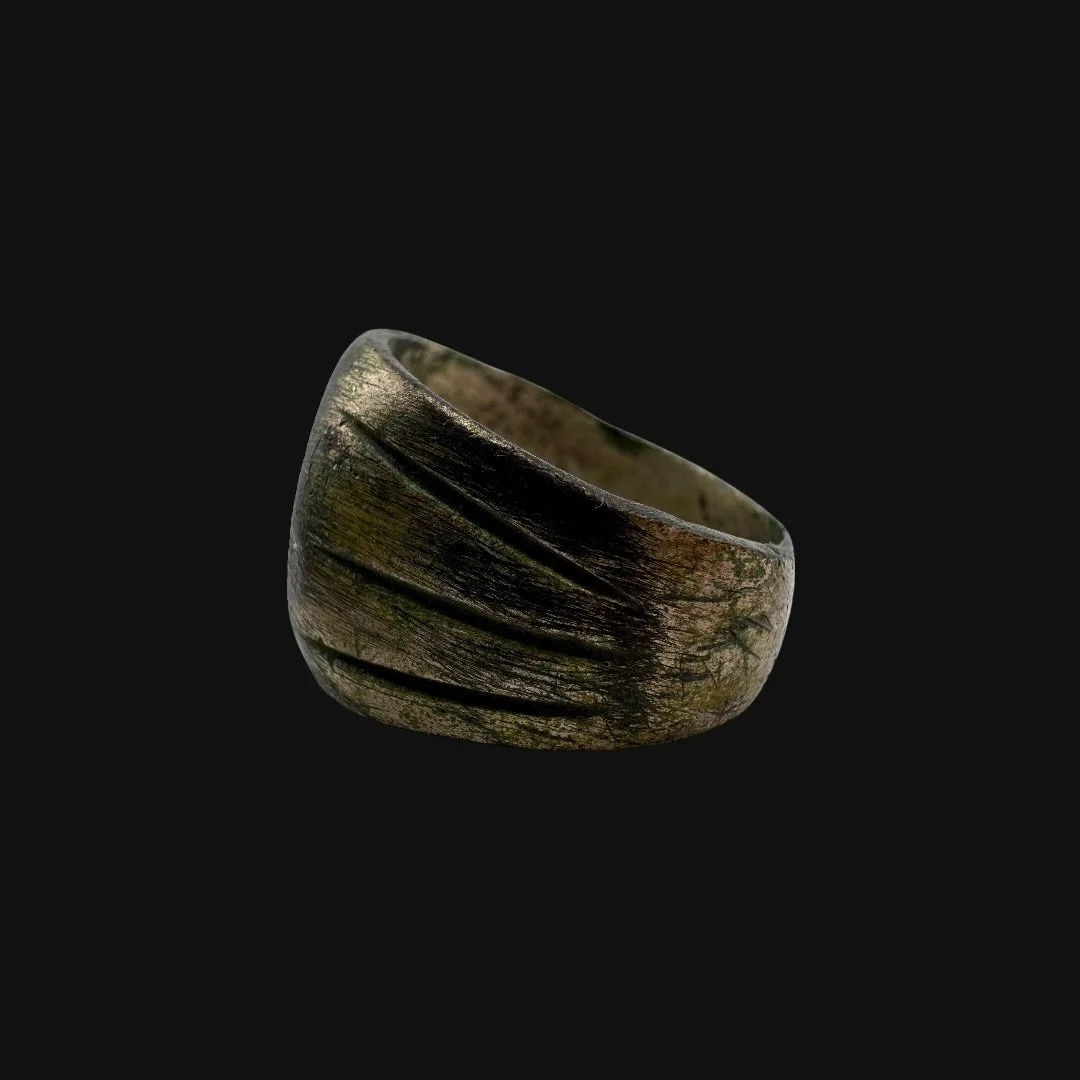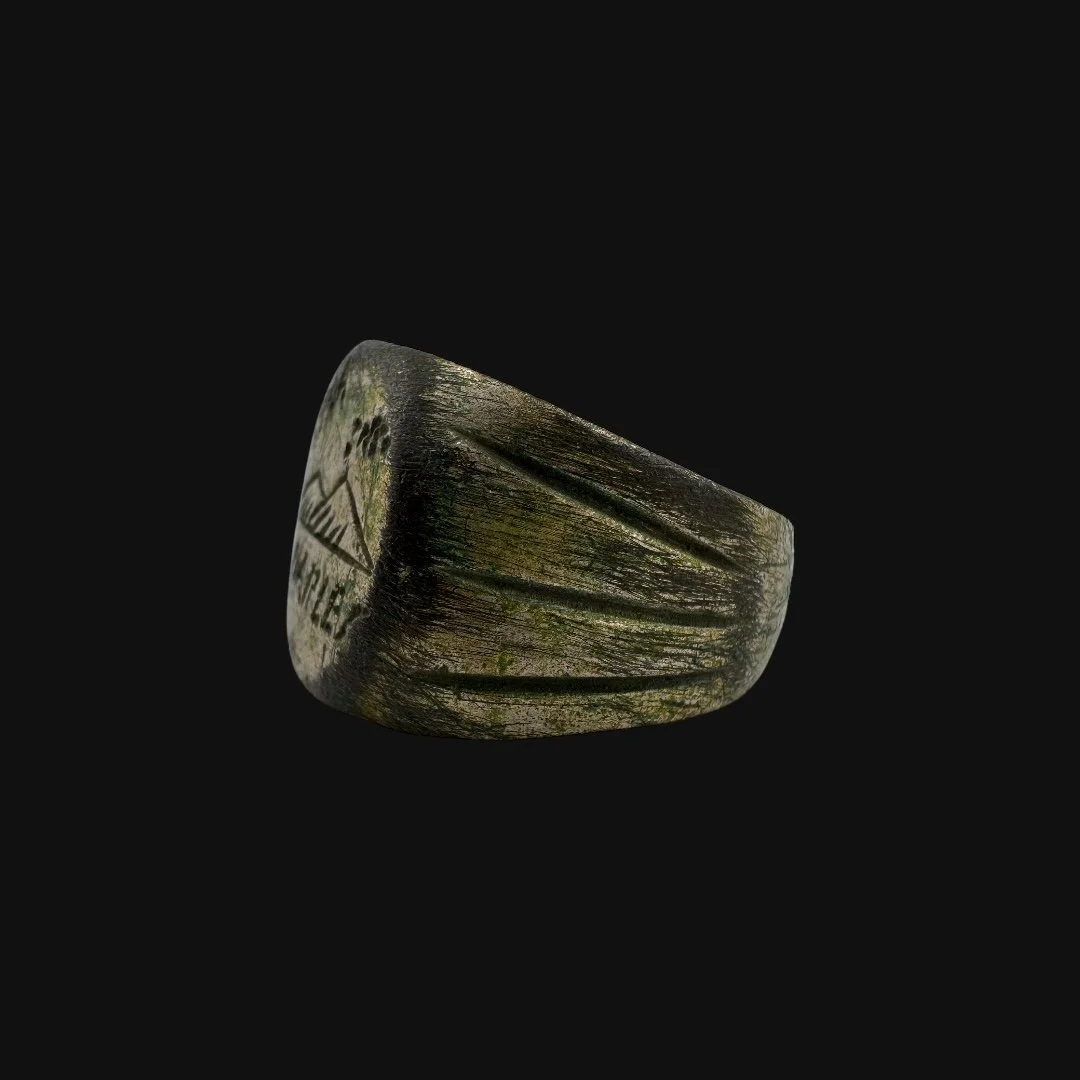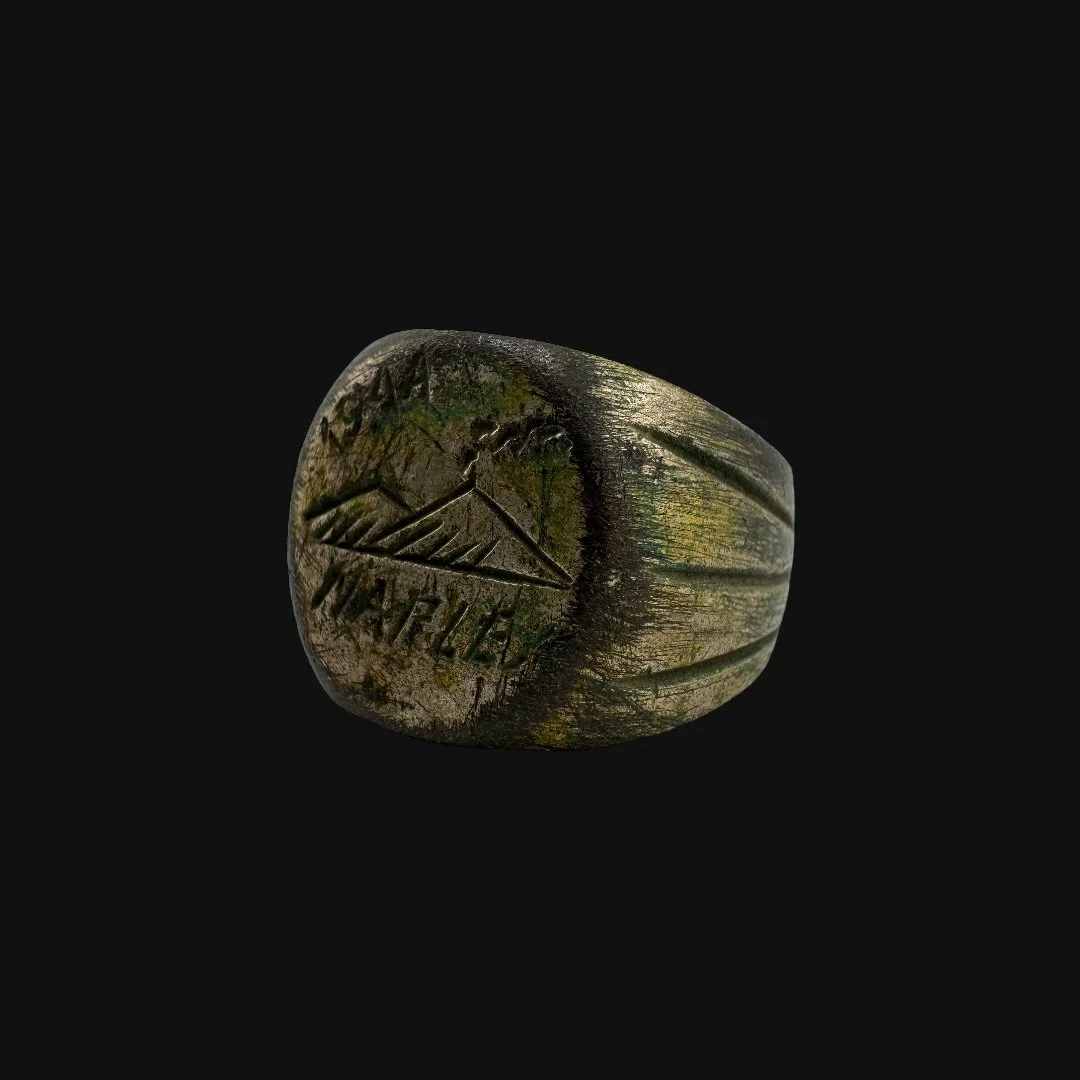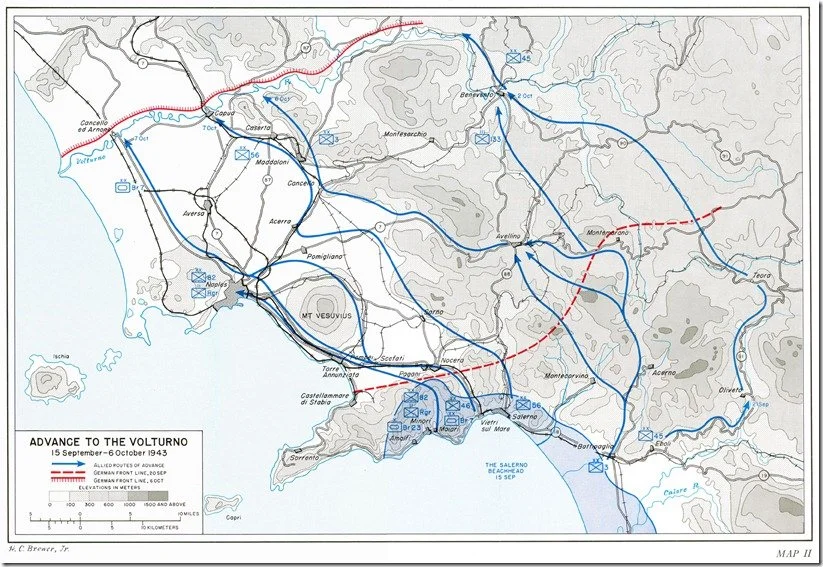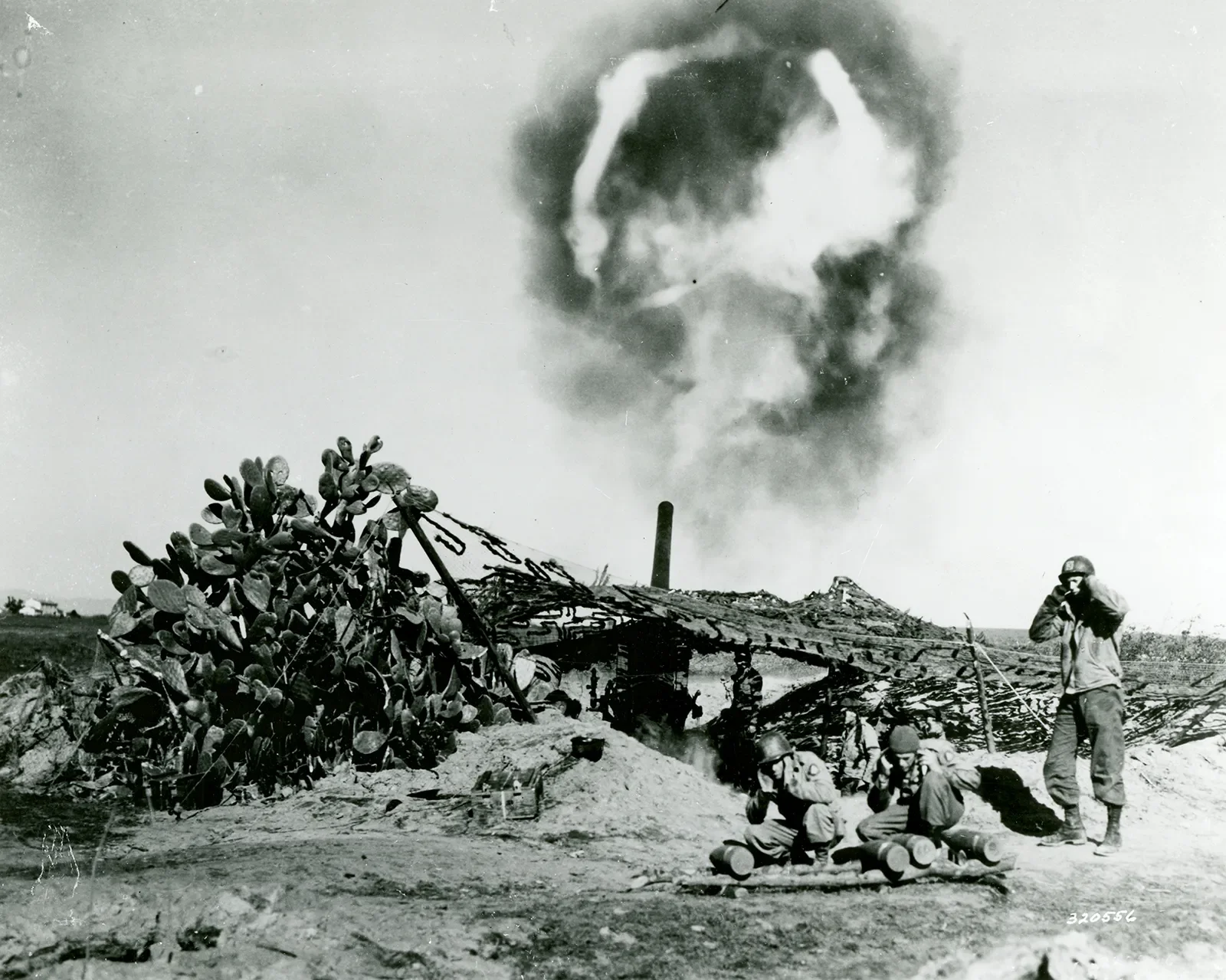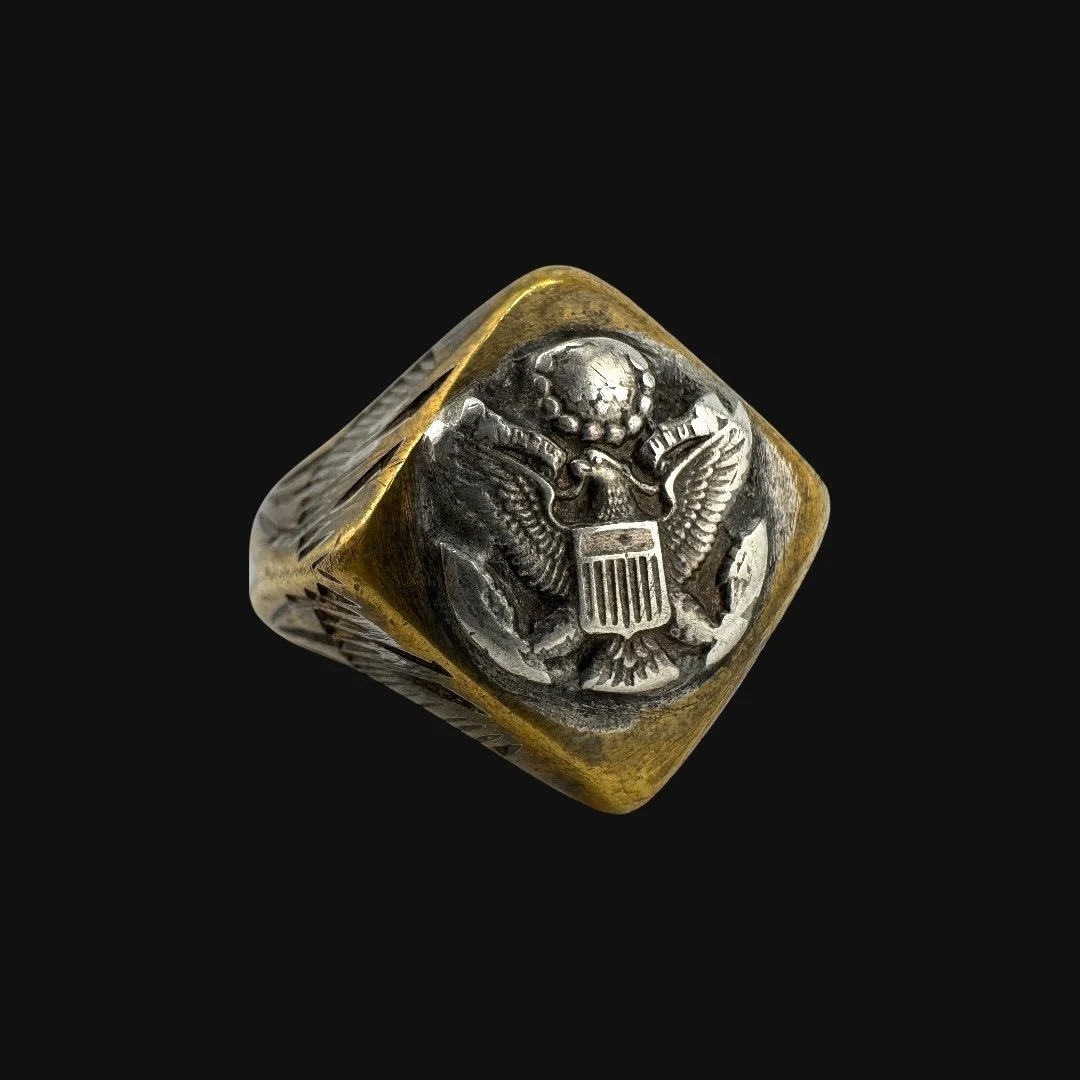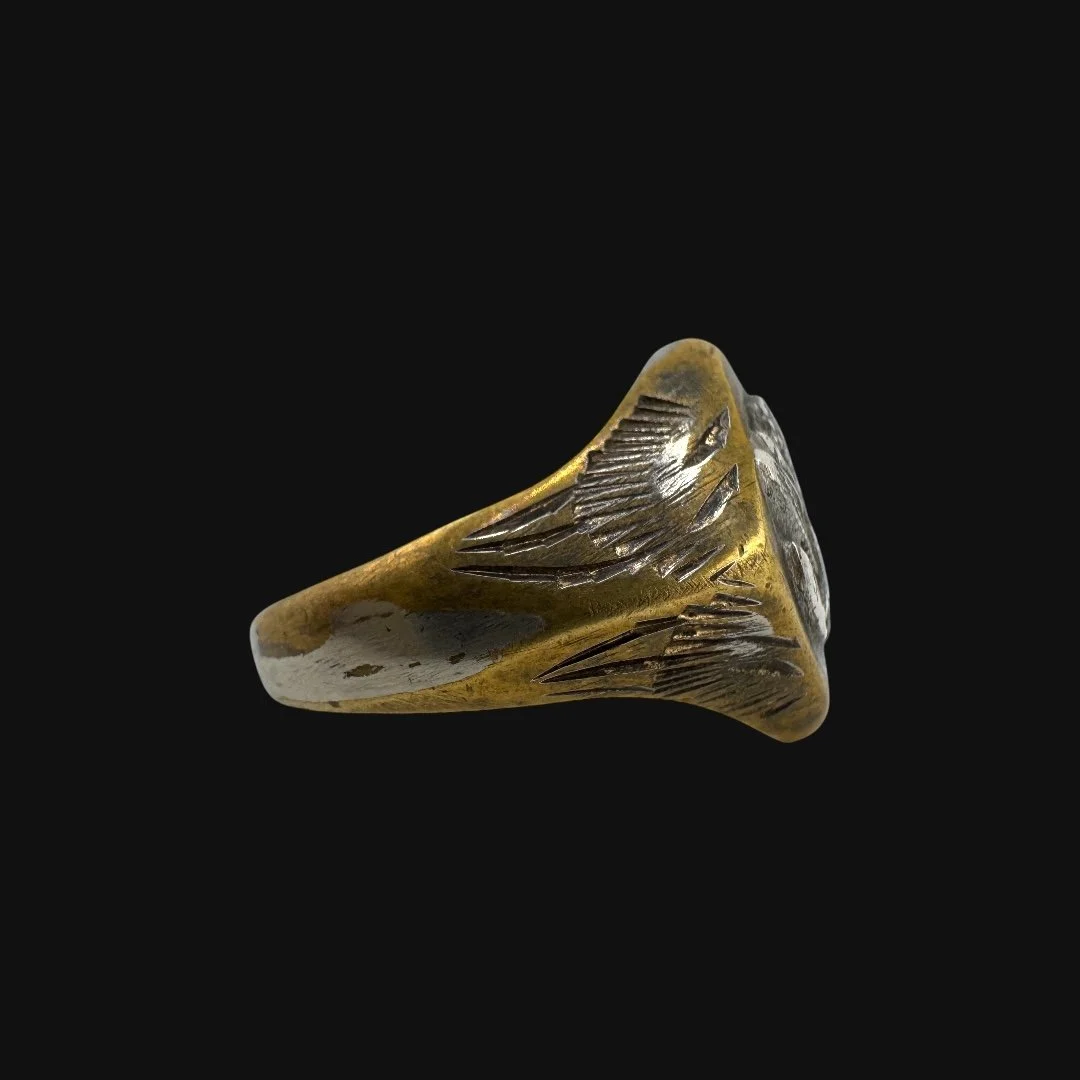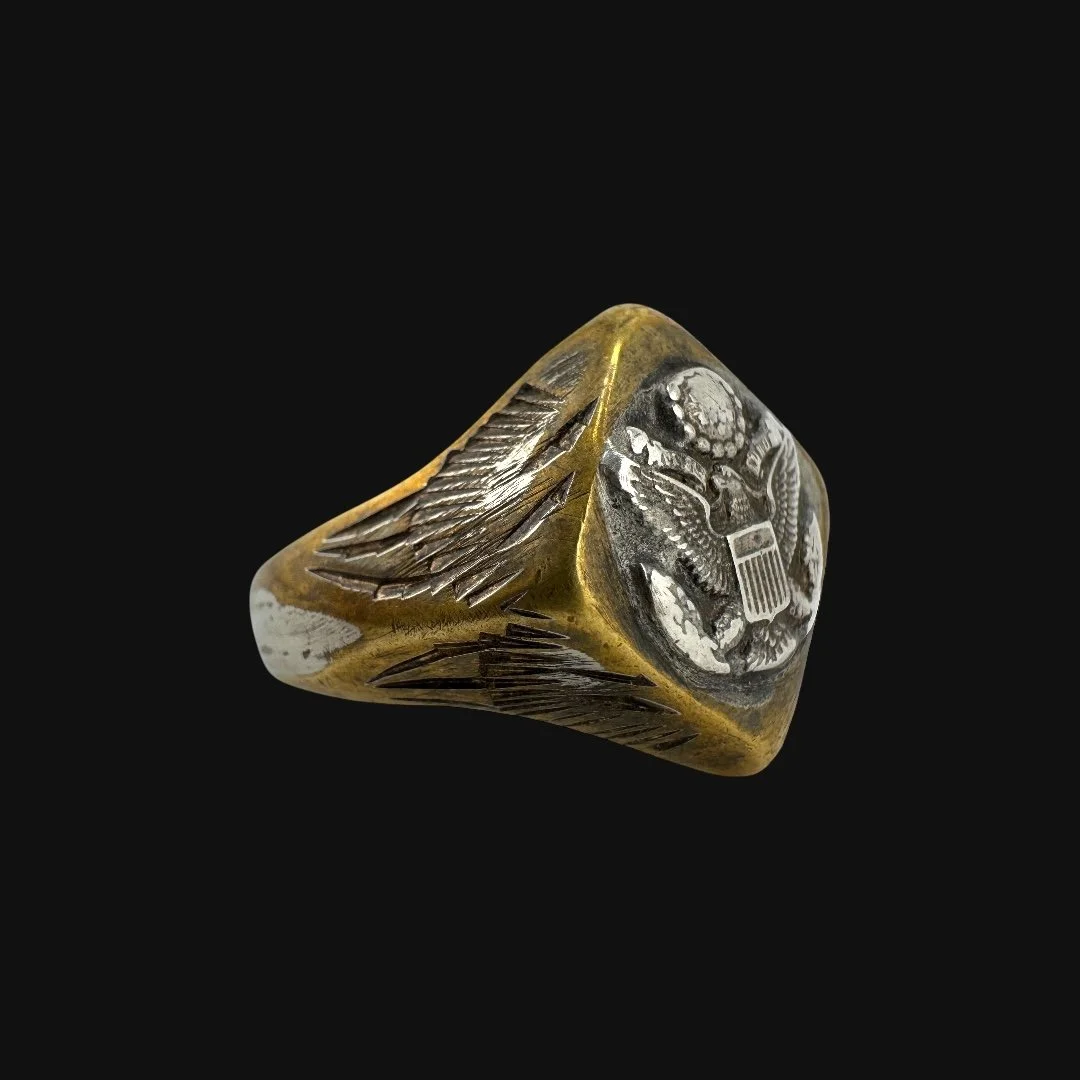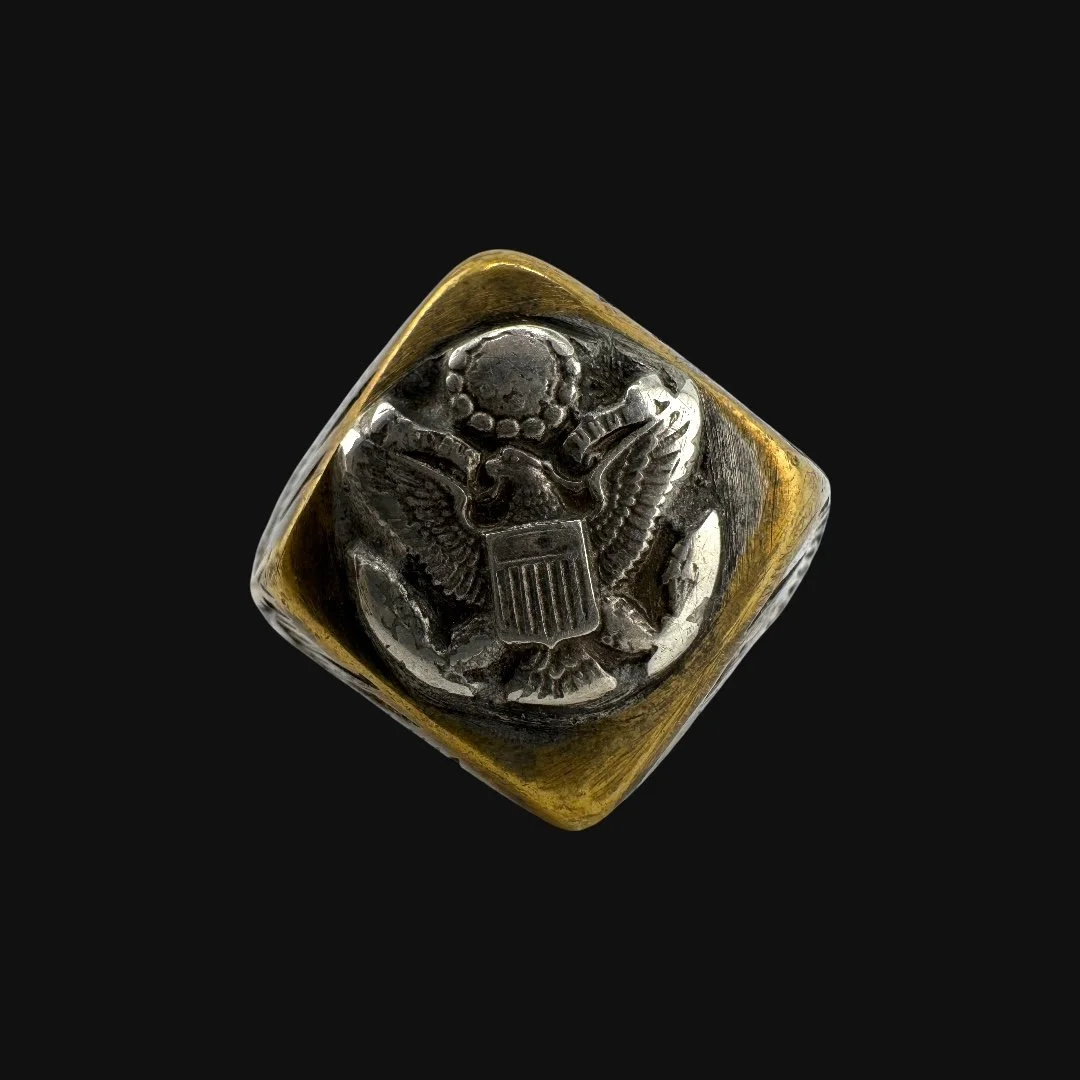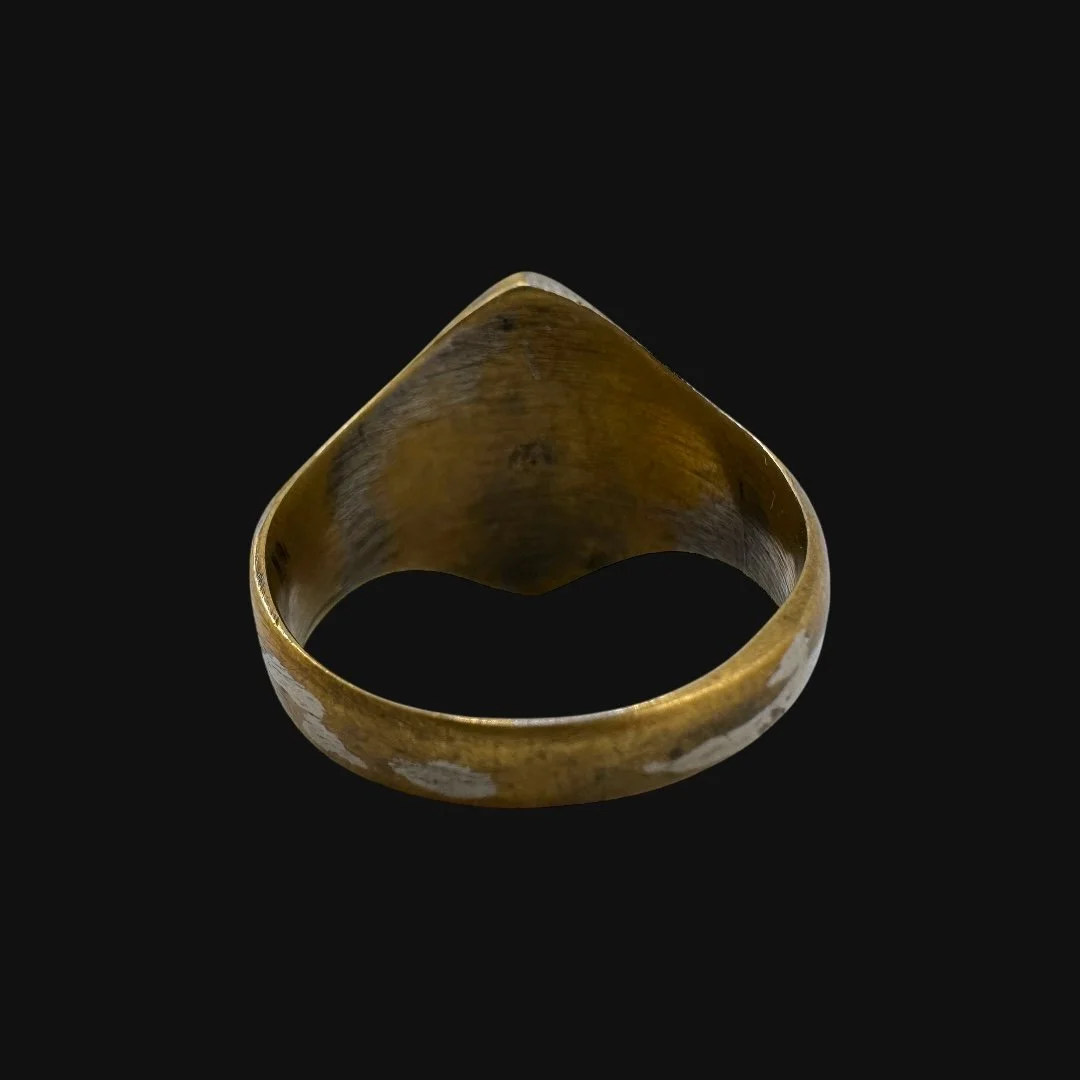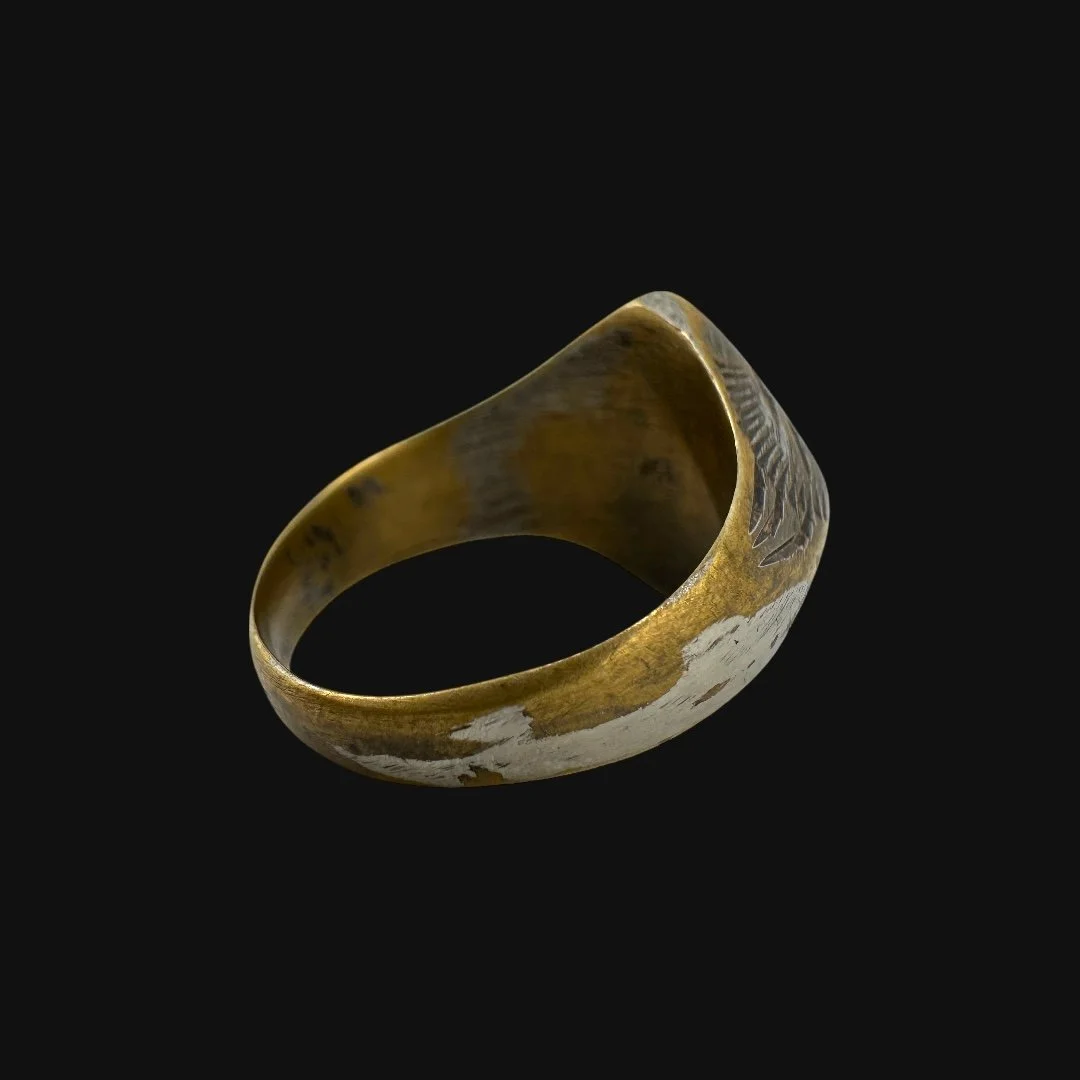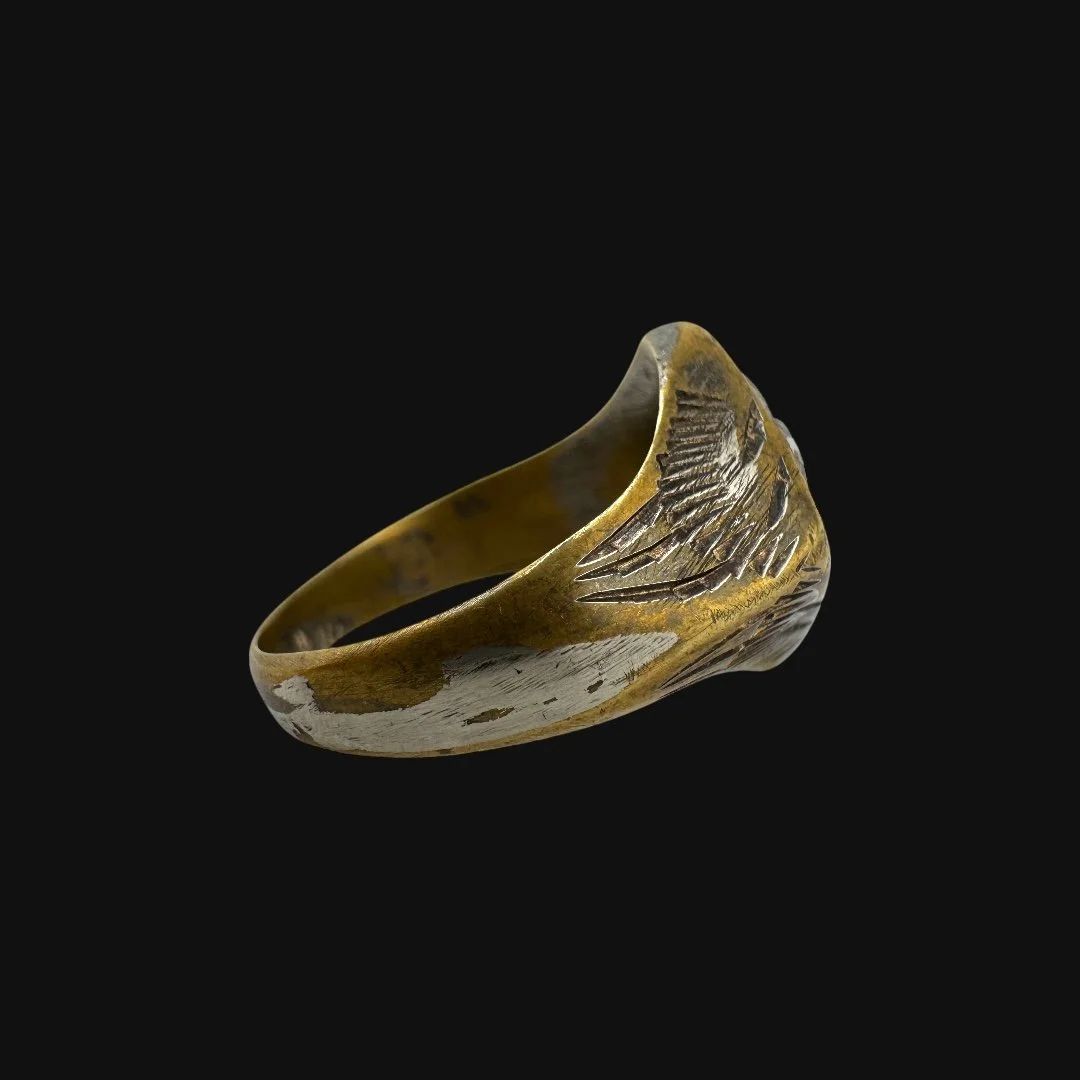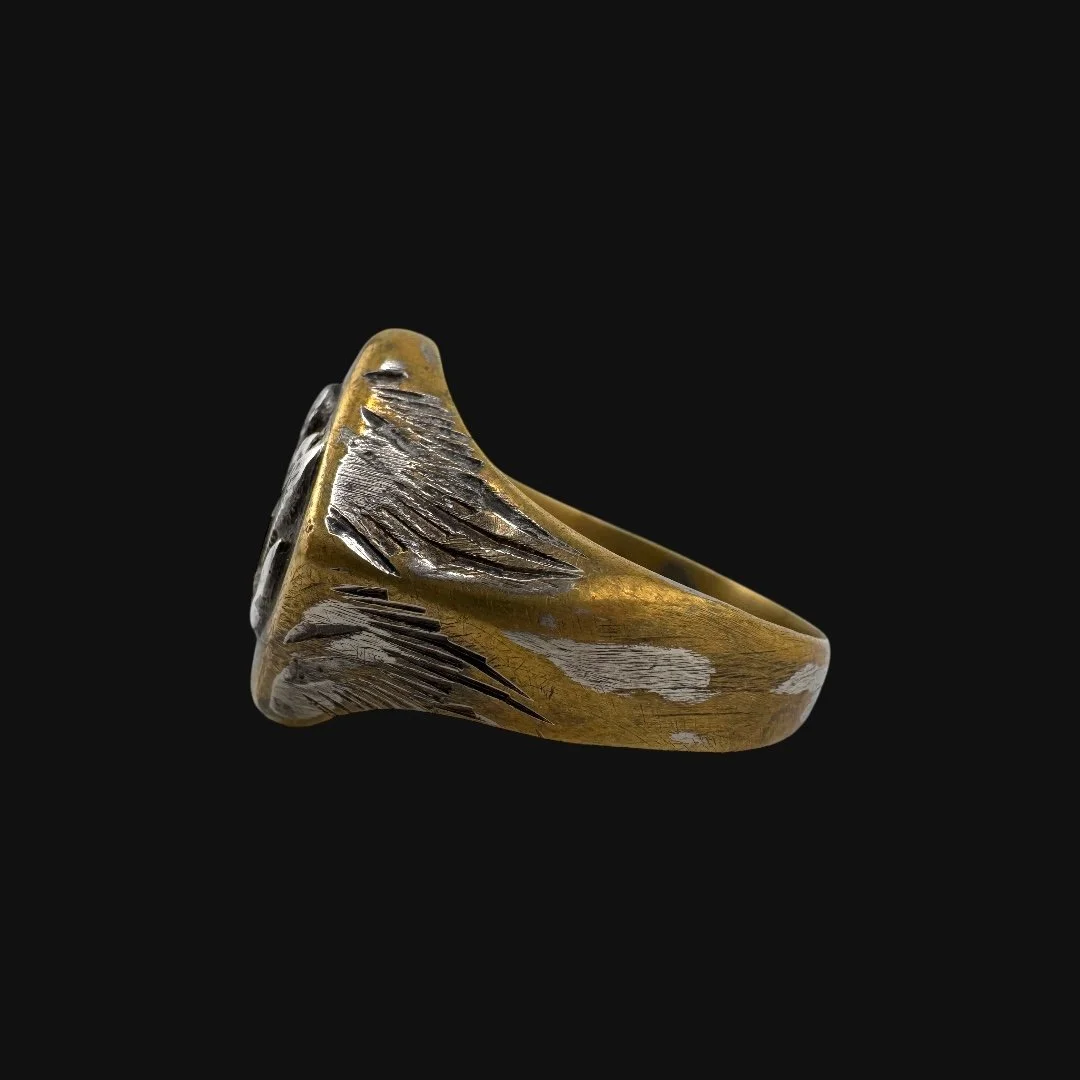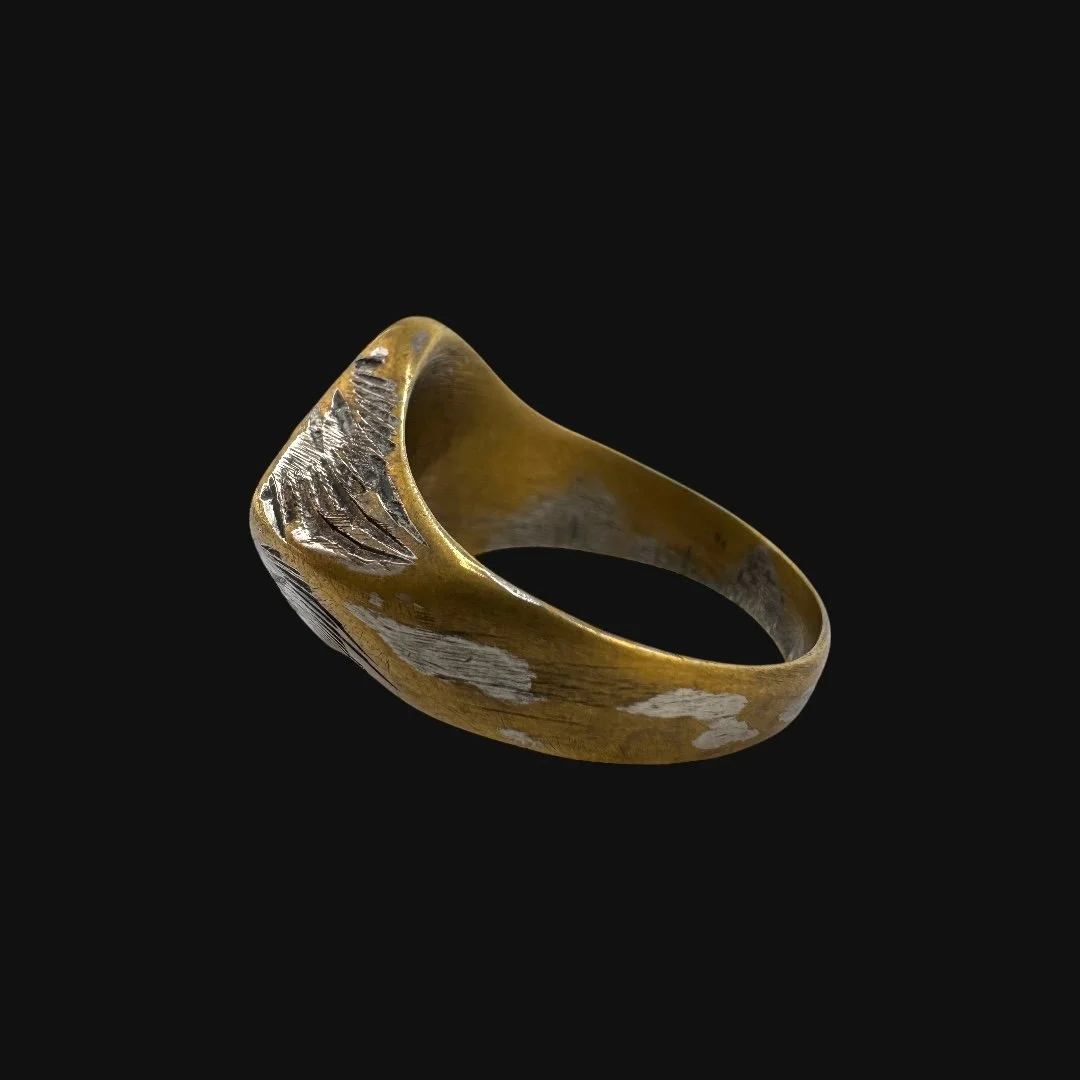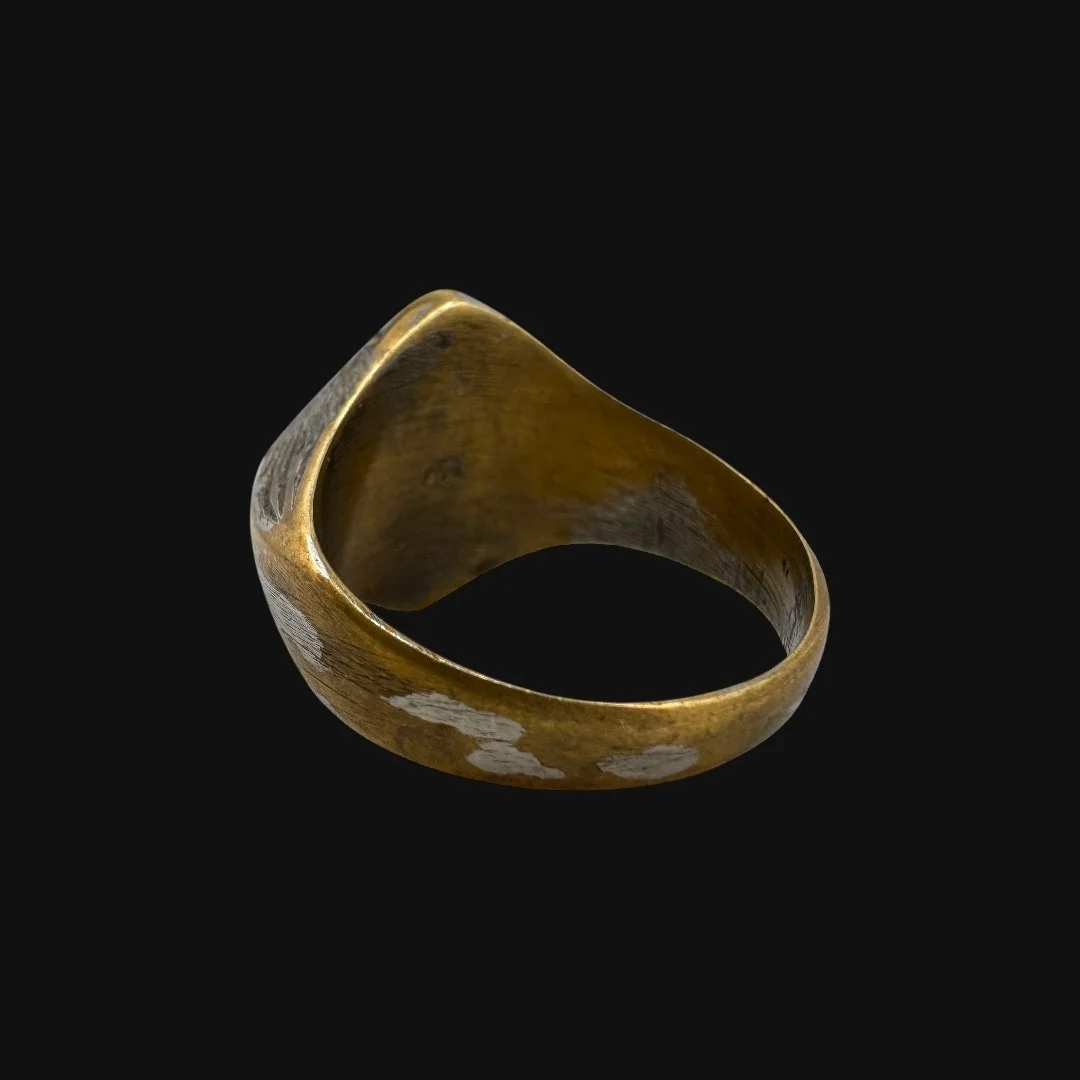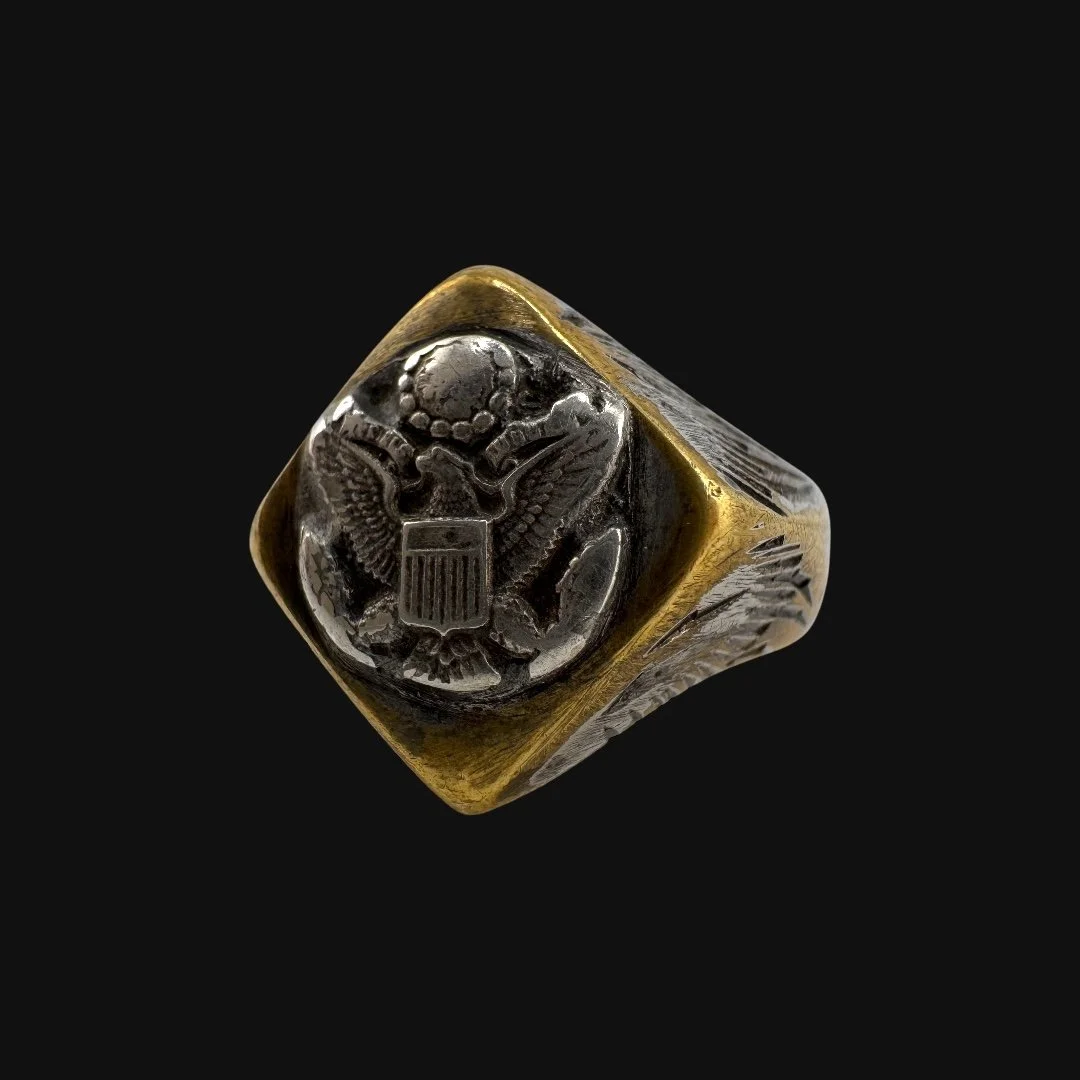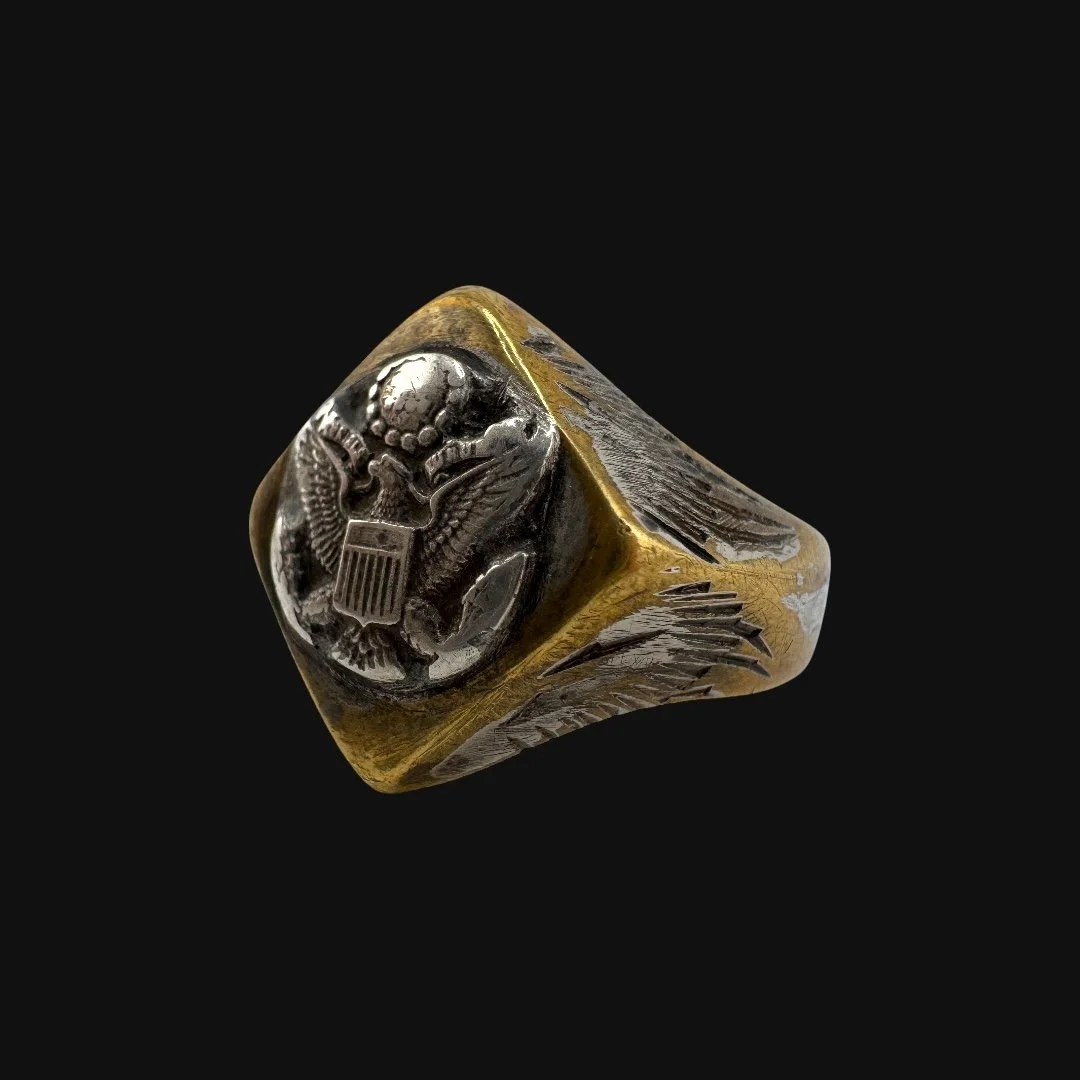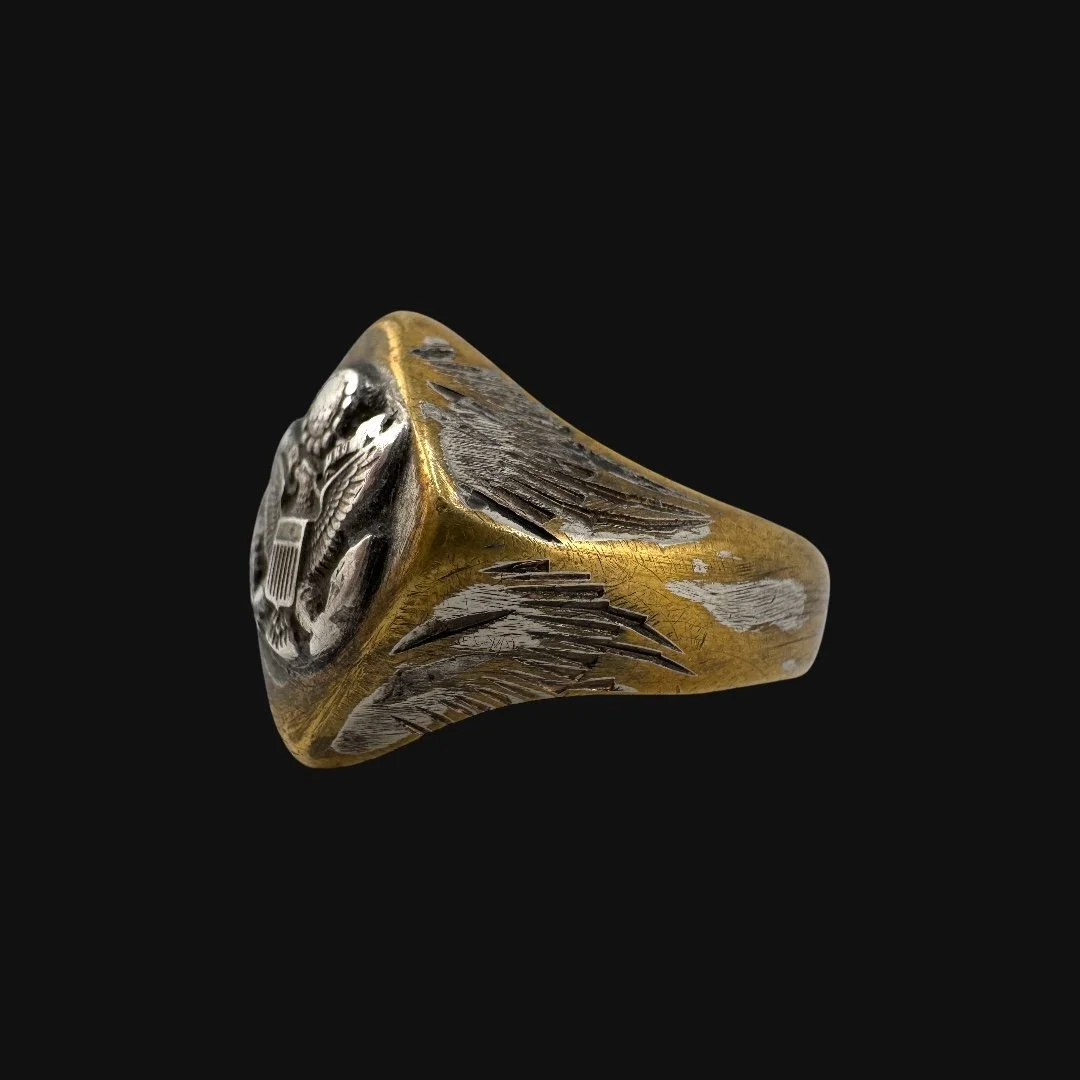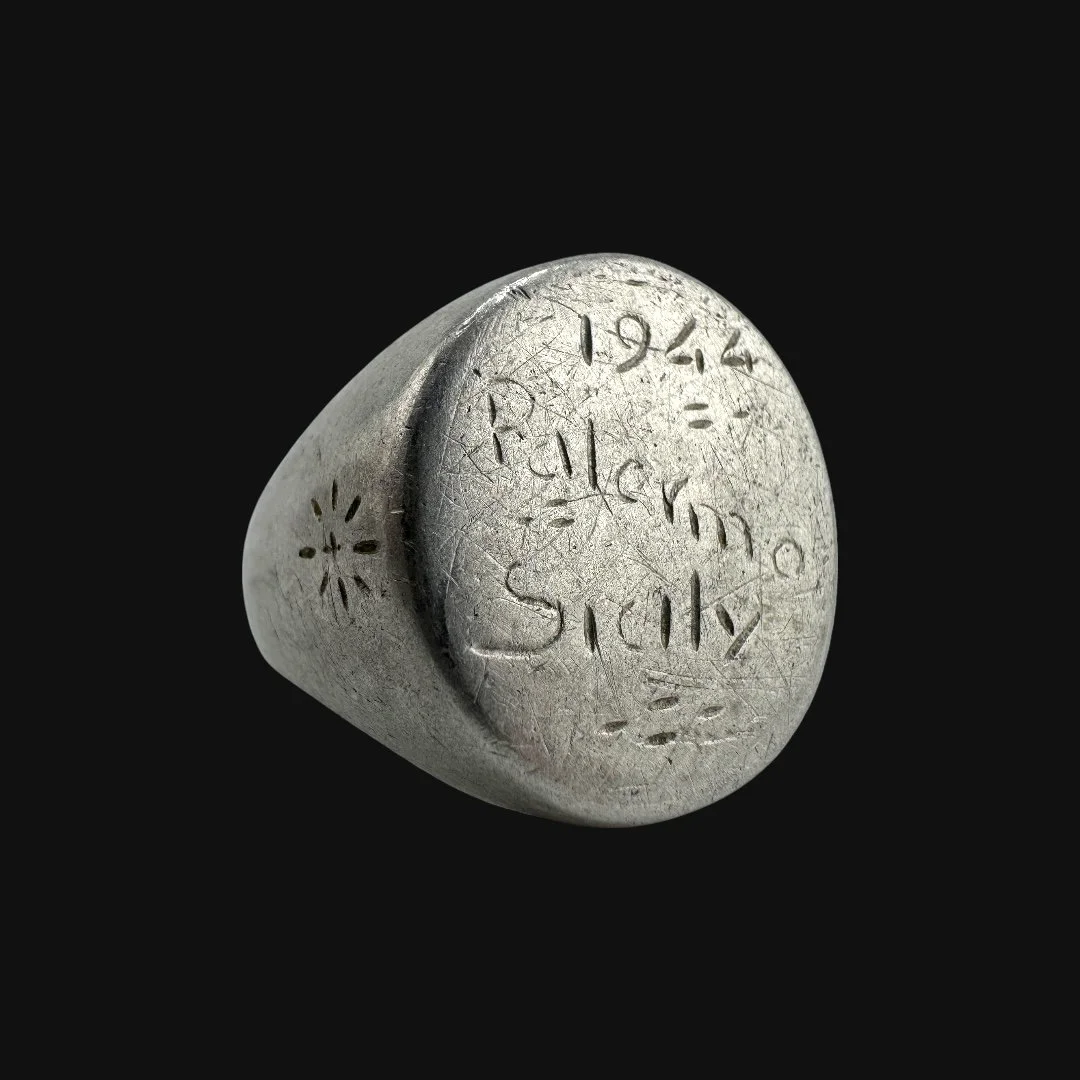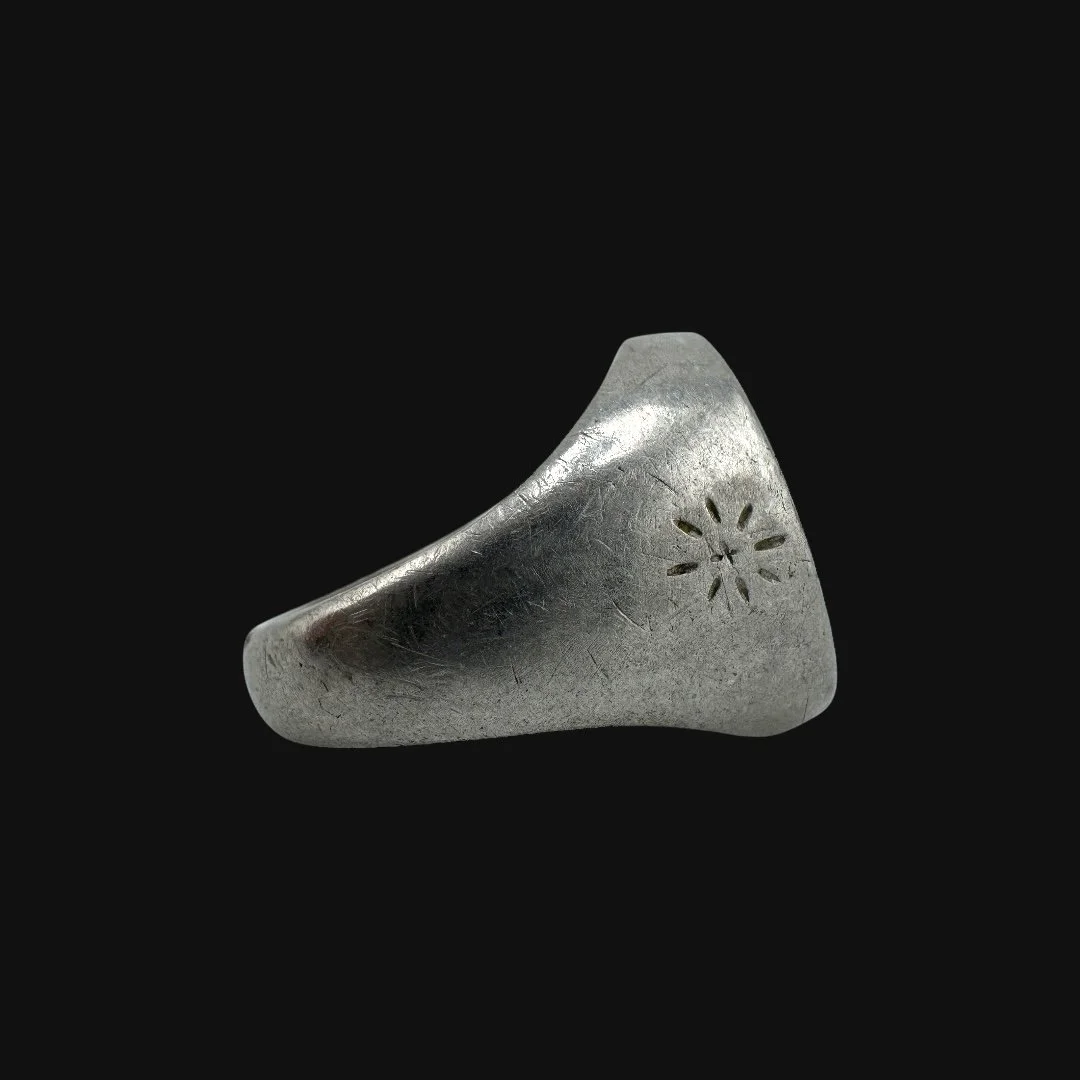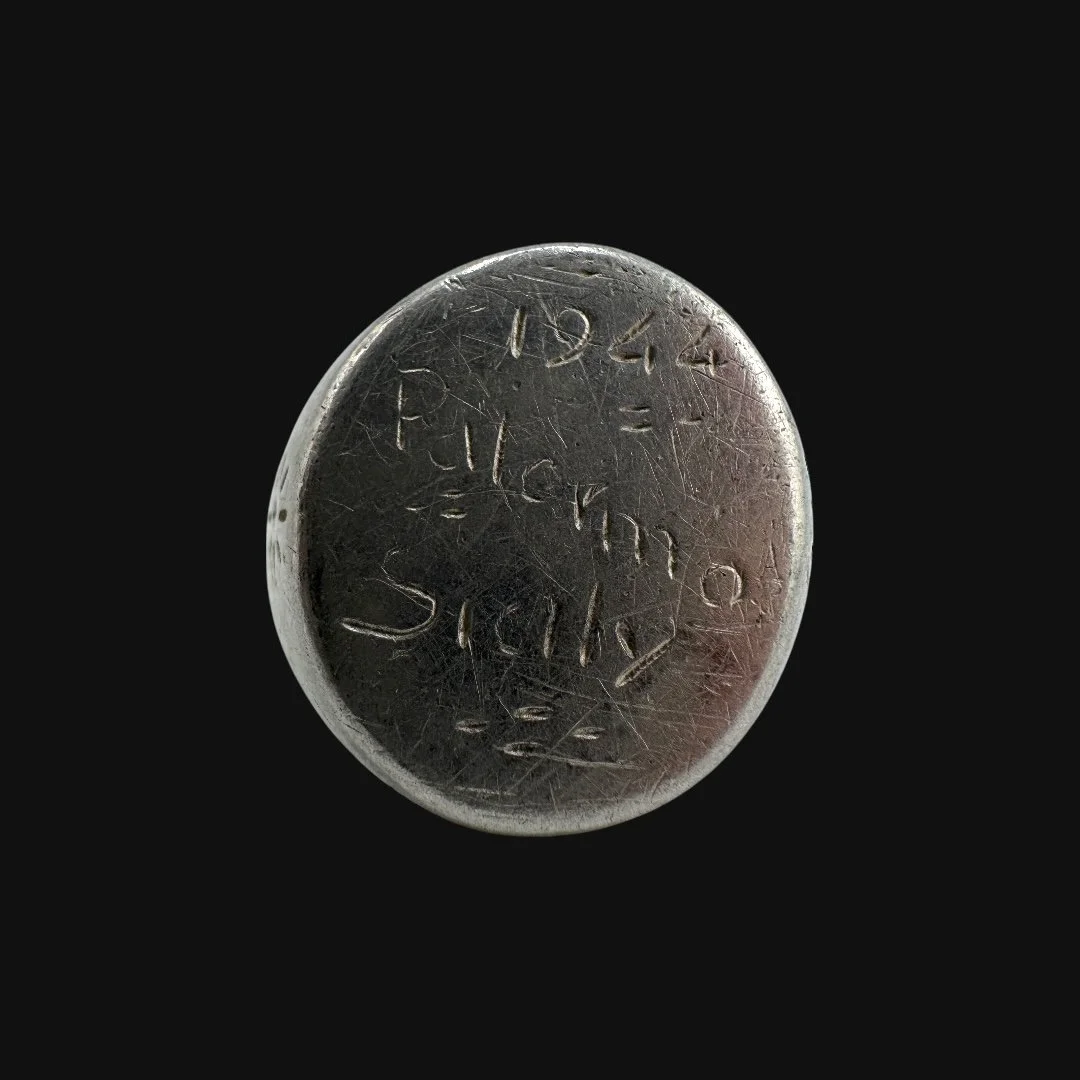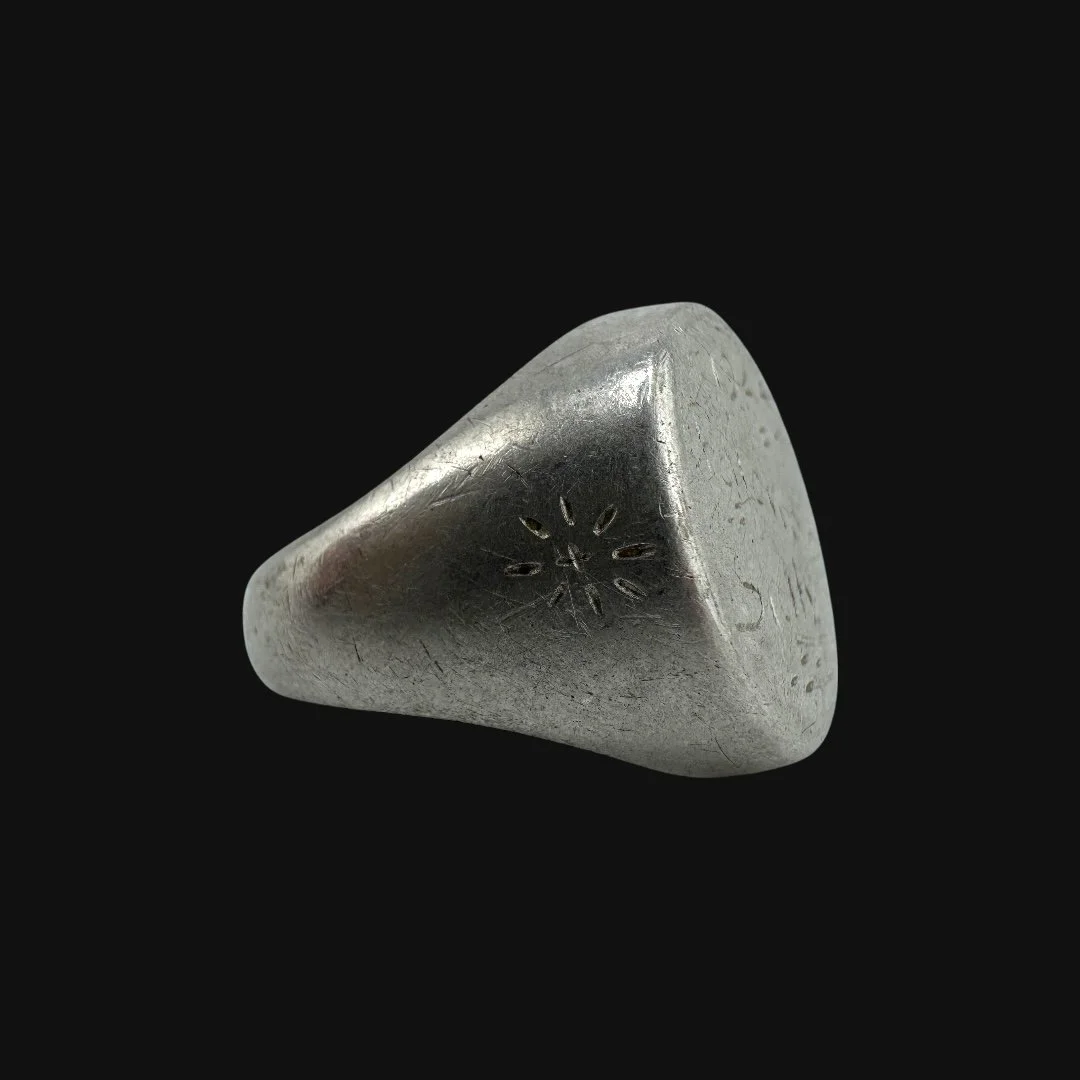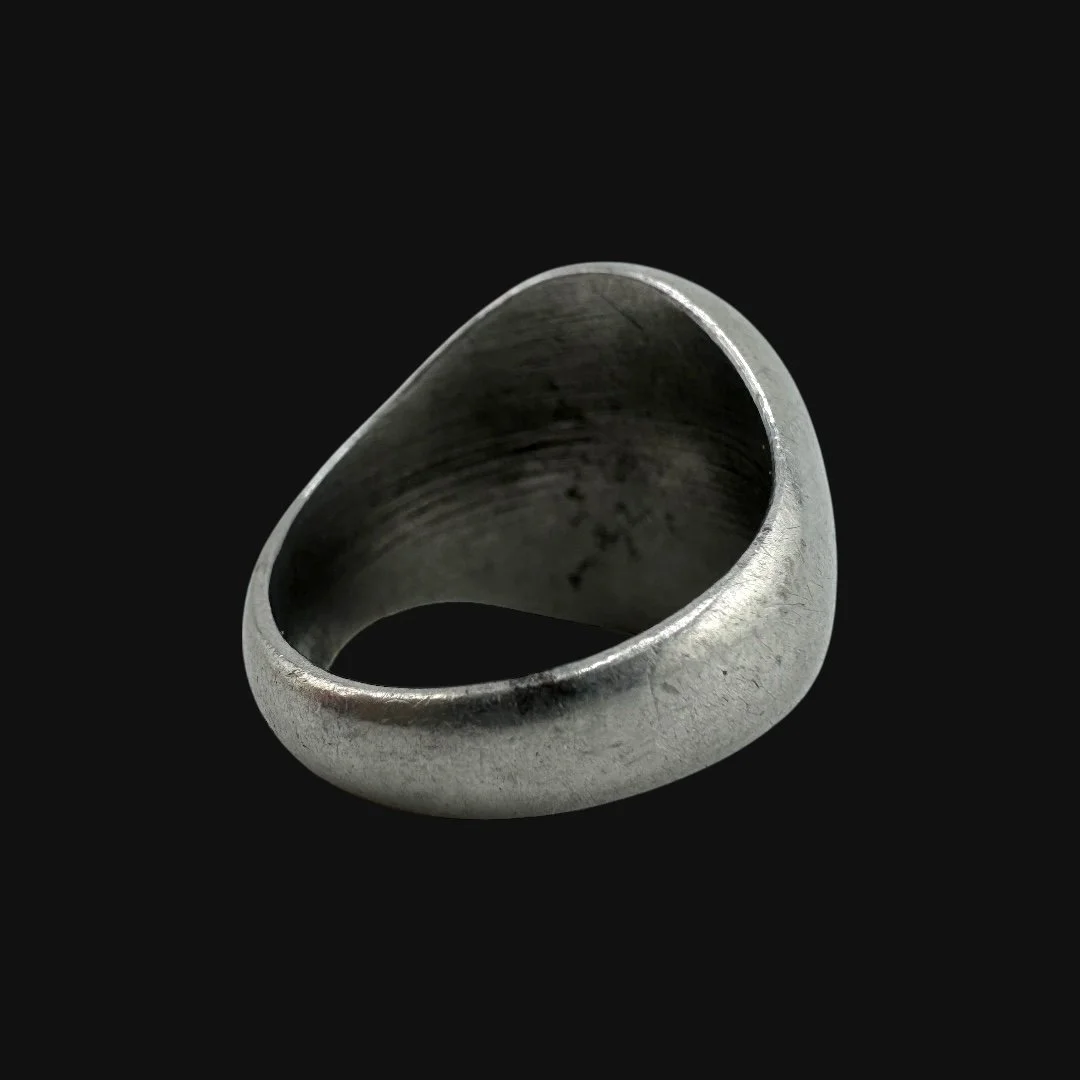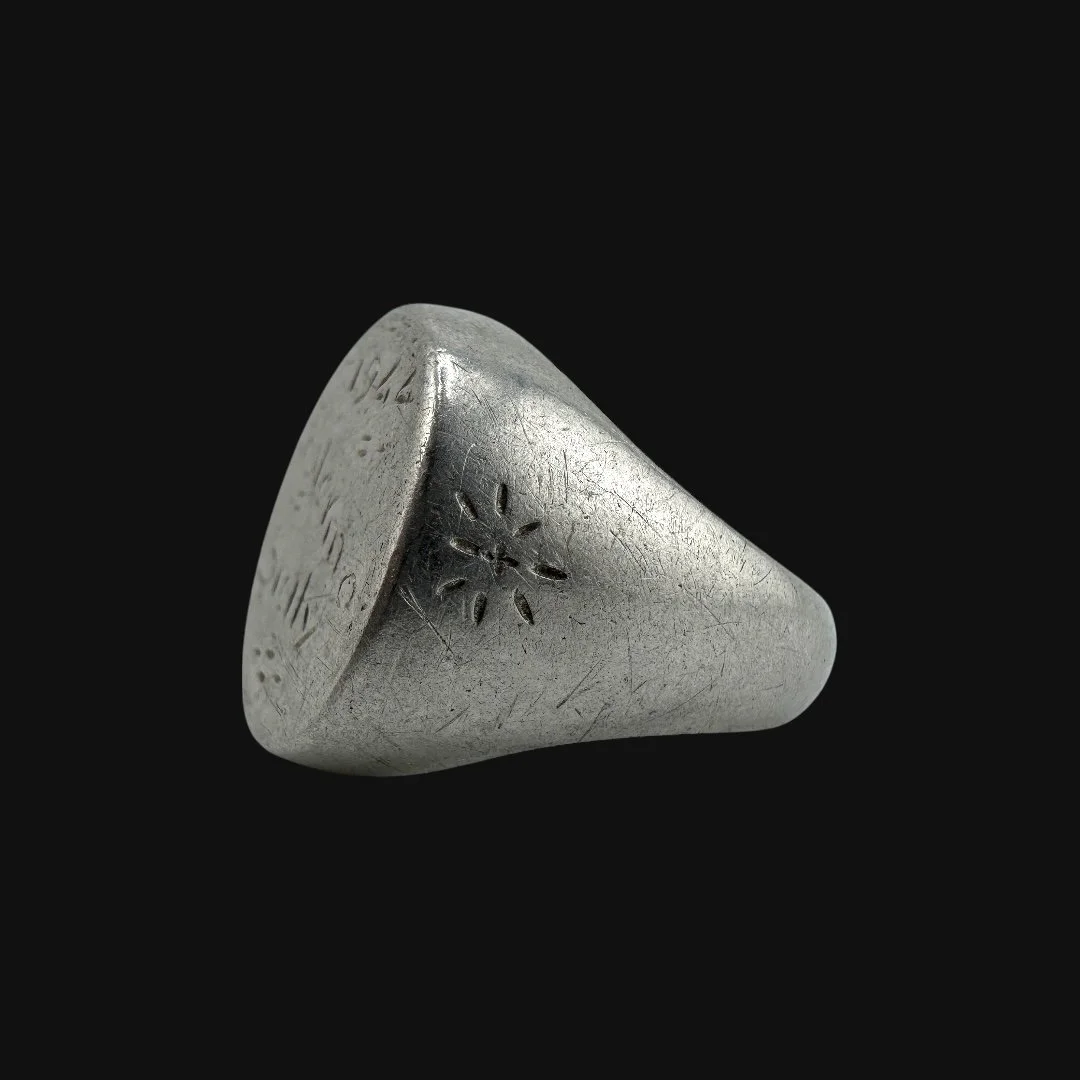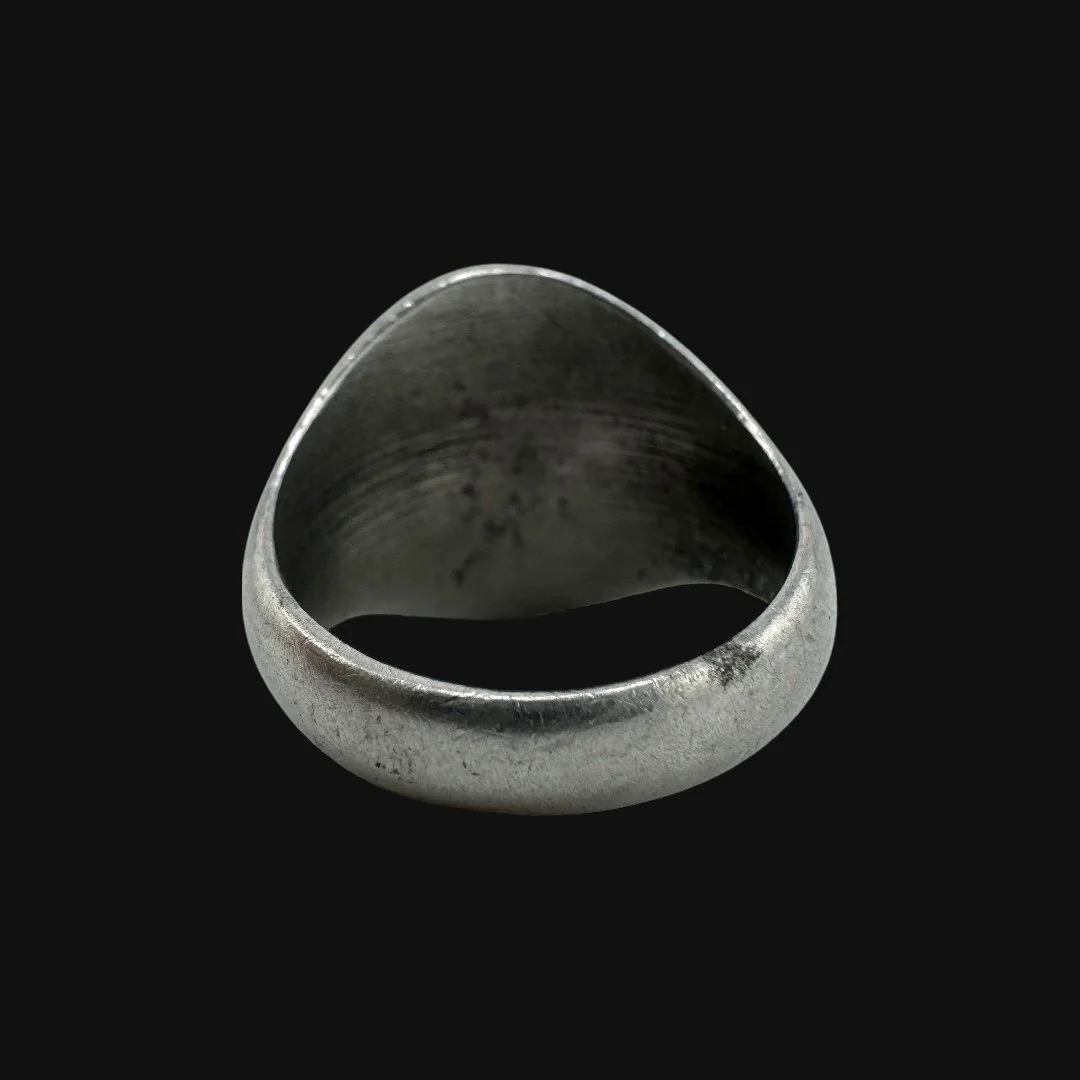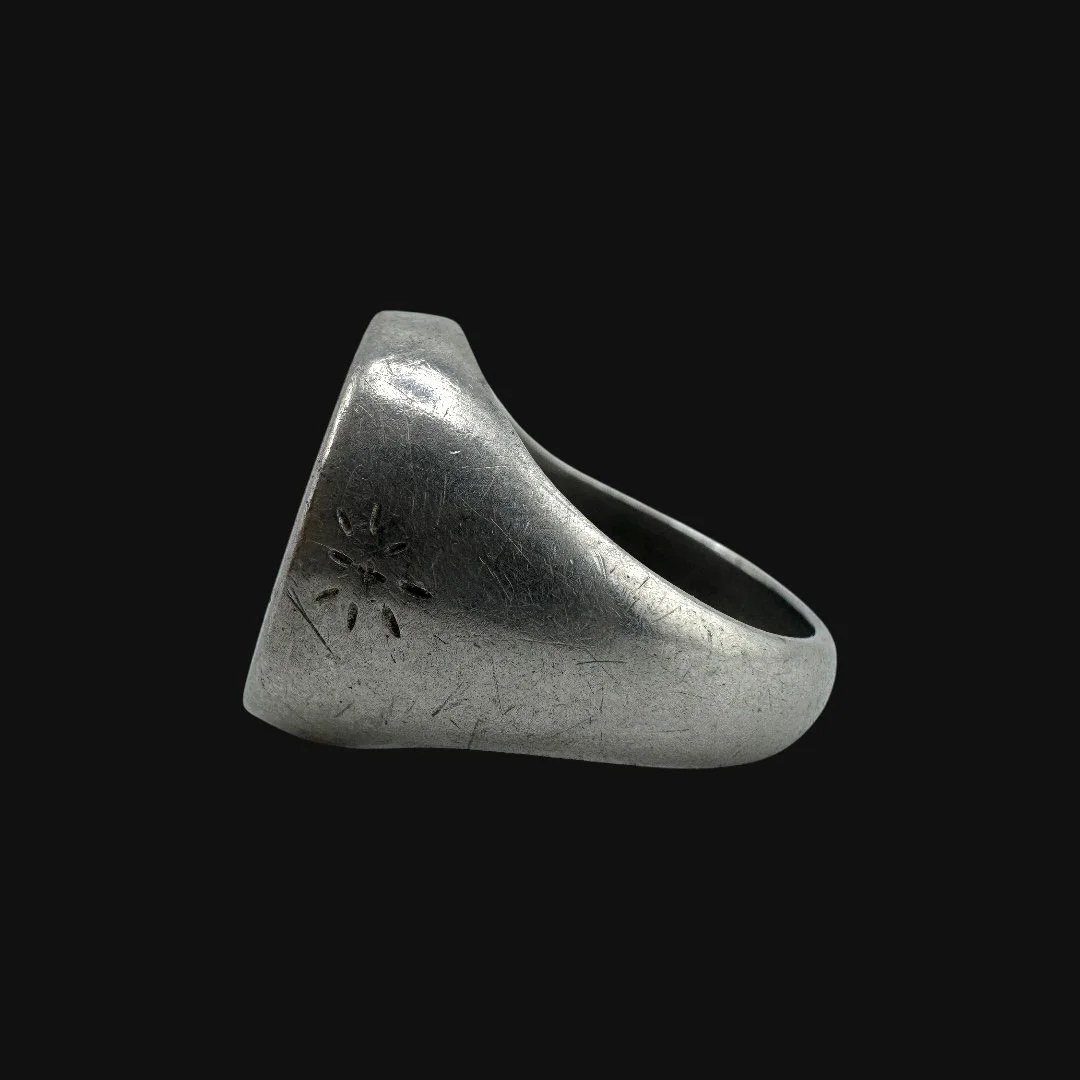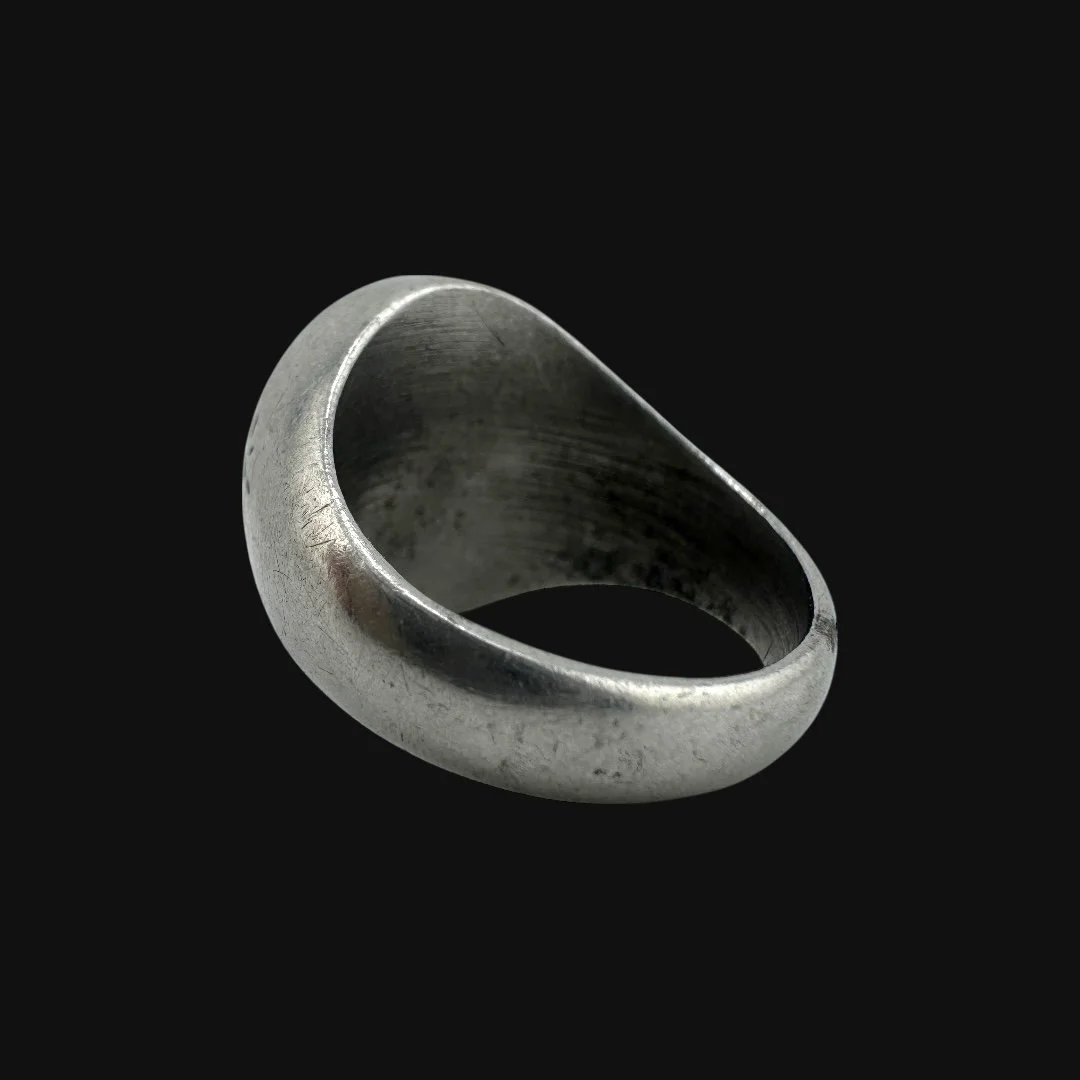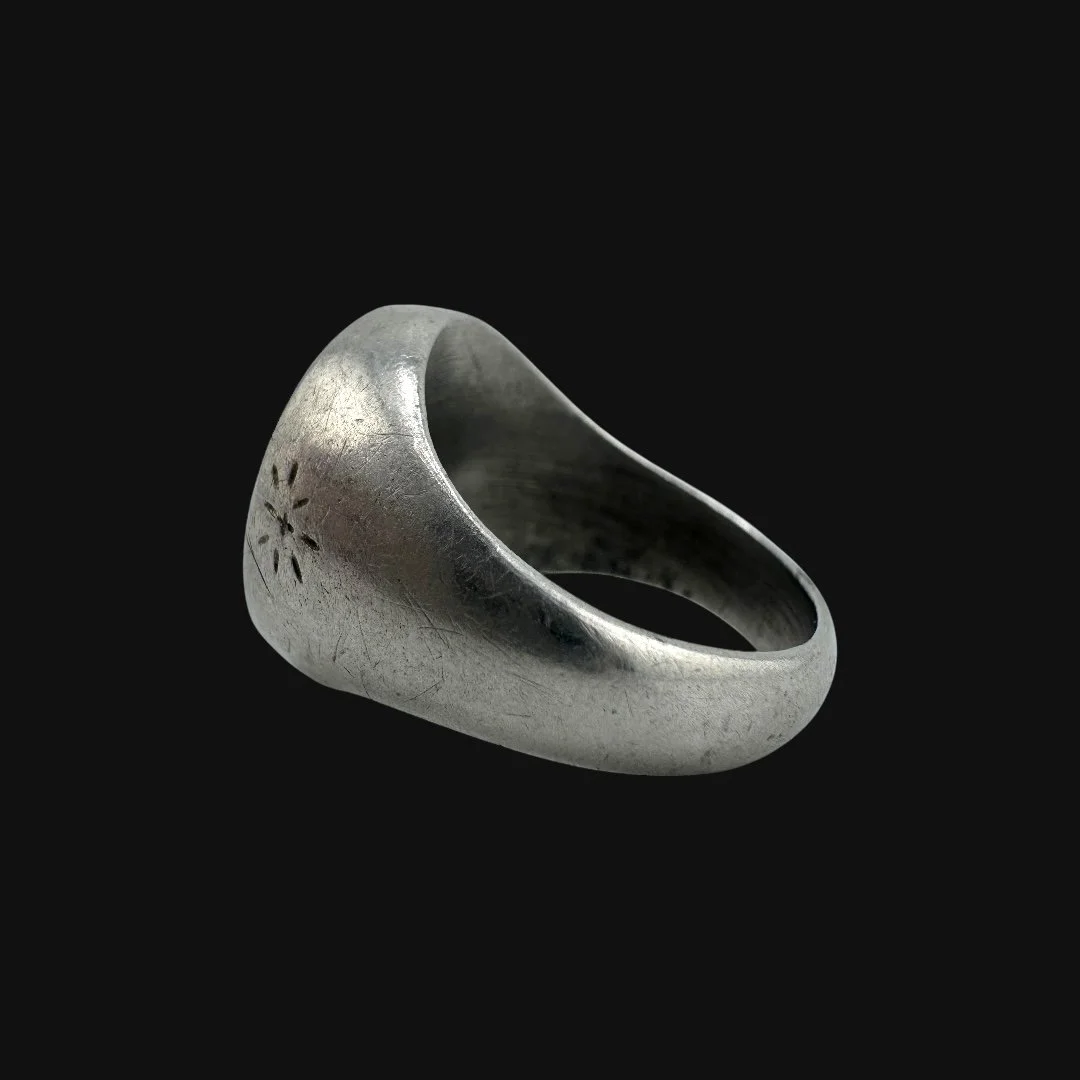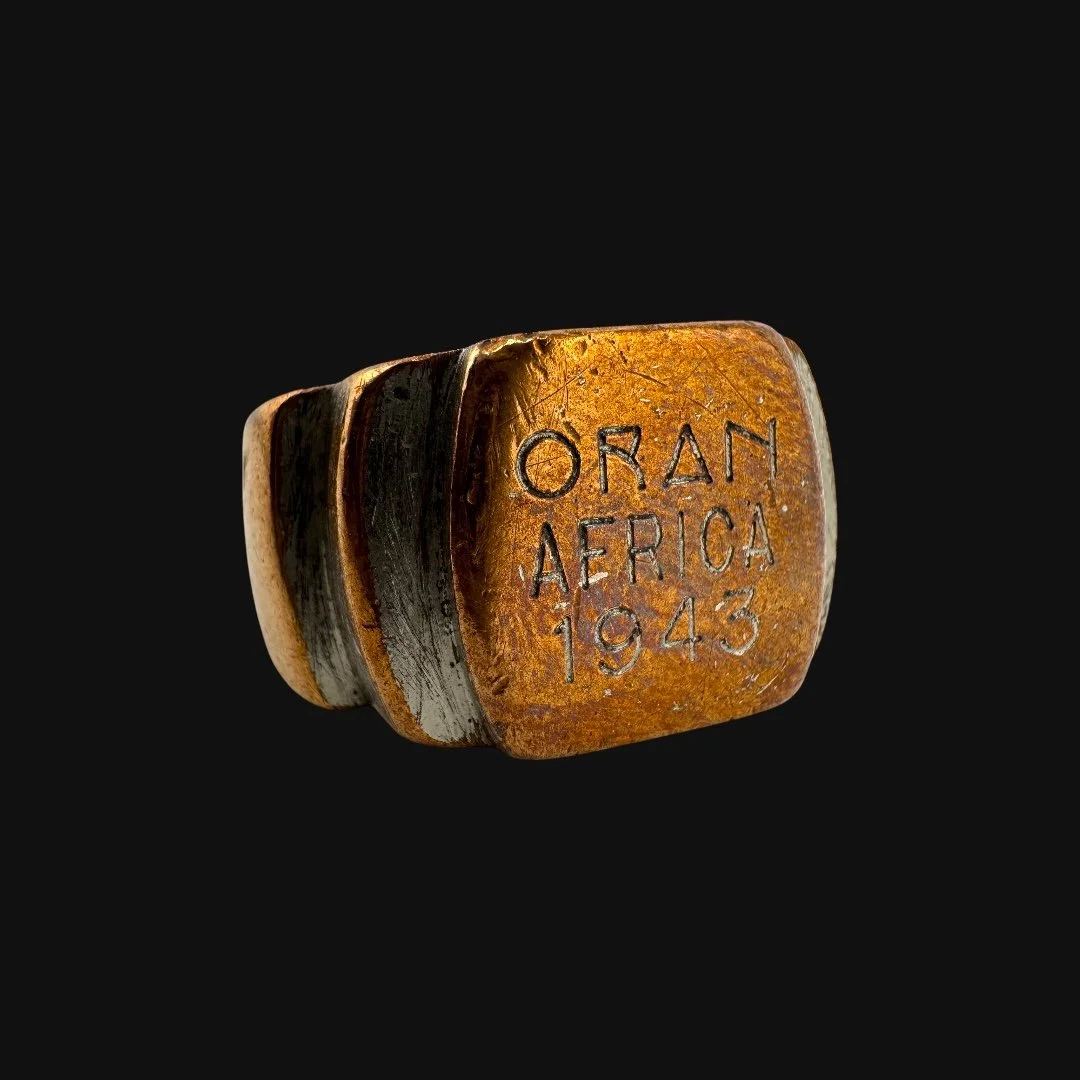 Image 1 of 9
Image 1 of 9

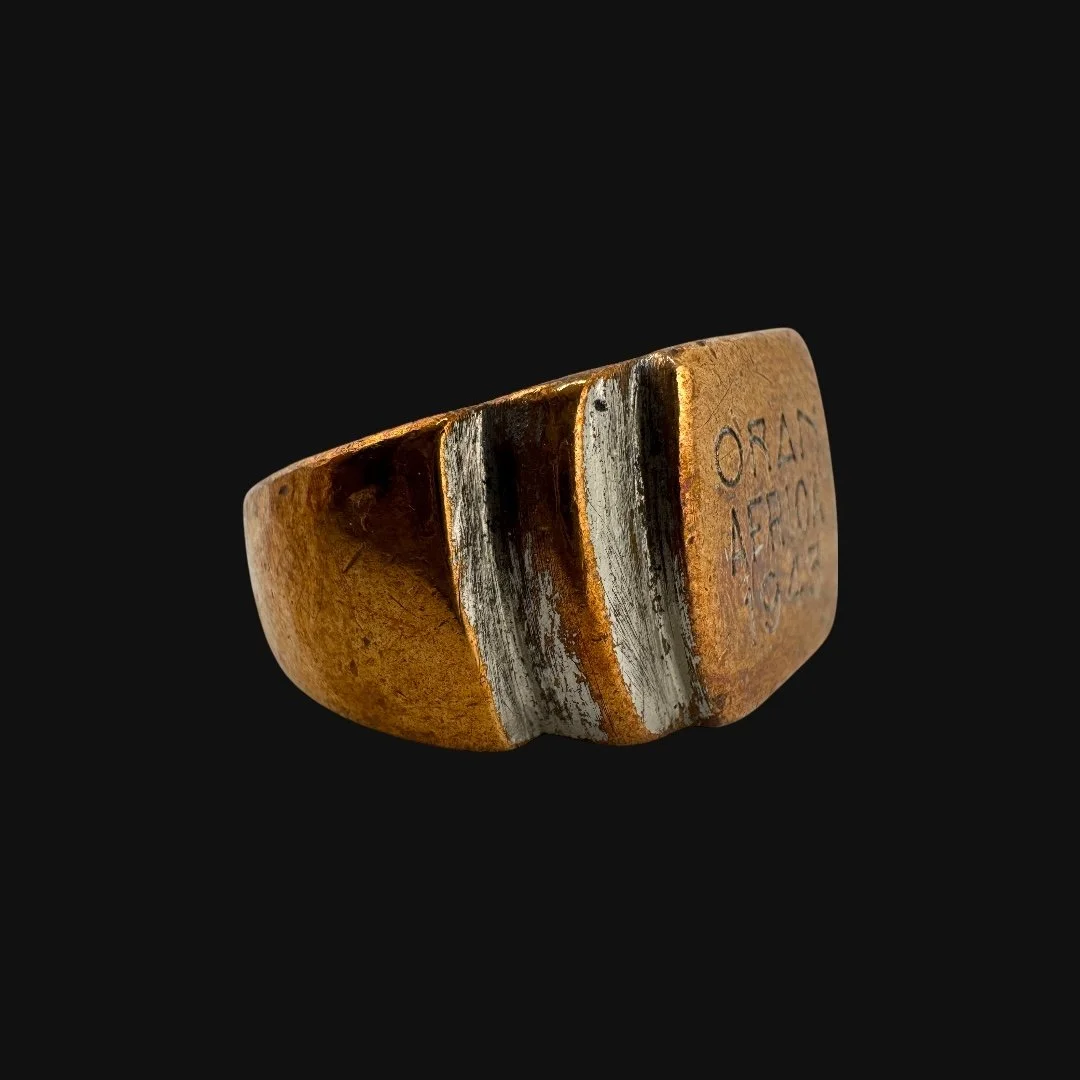 Image 2 of 9
Image 2 of 9

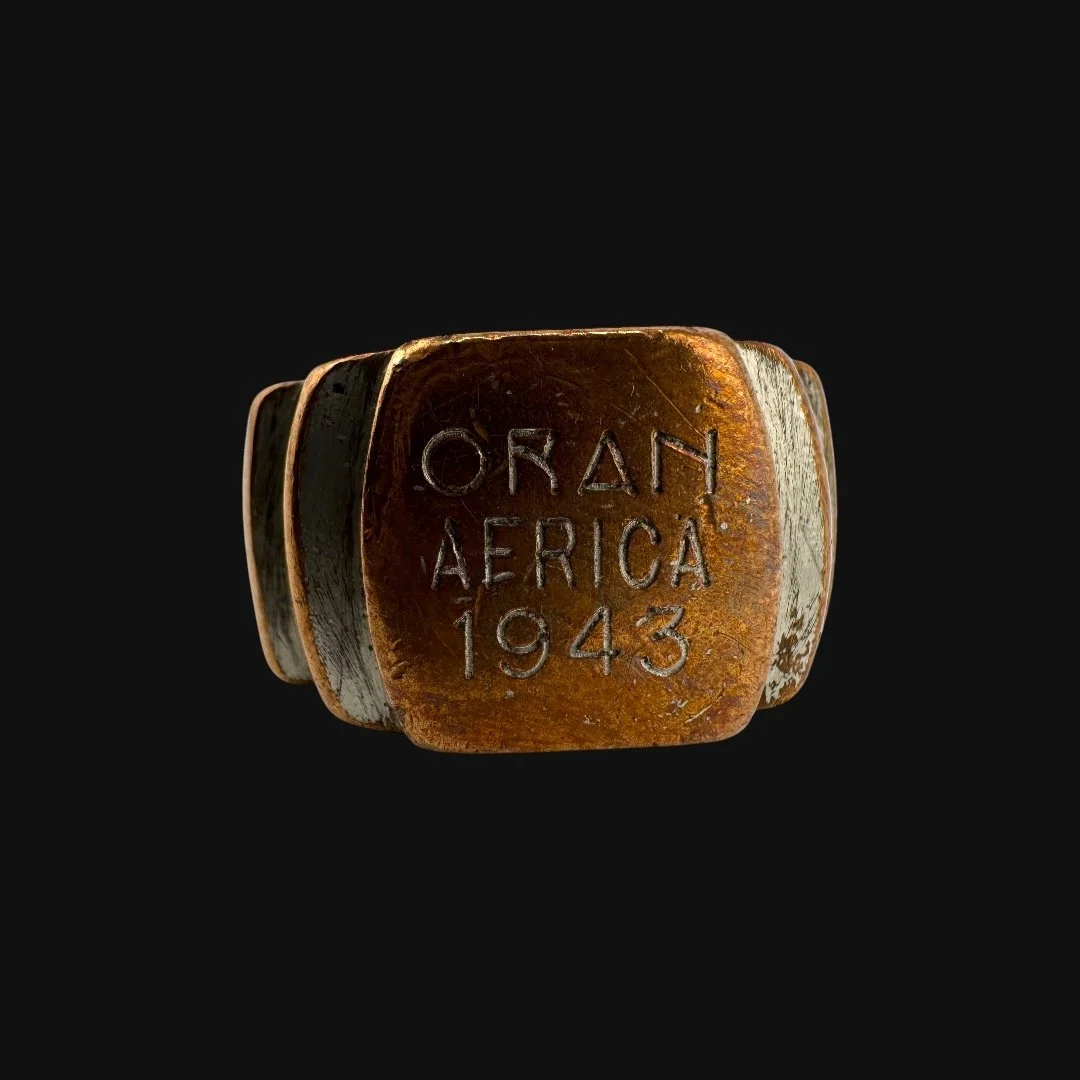 Image 3 of 9
Image 3 of 9

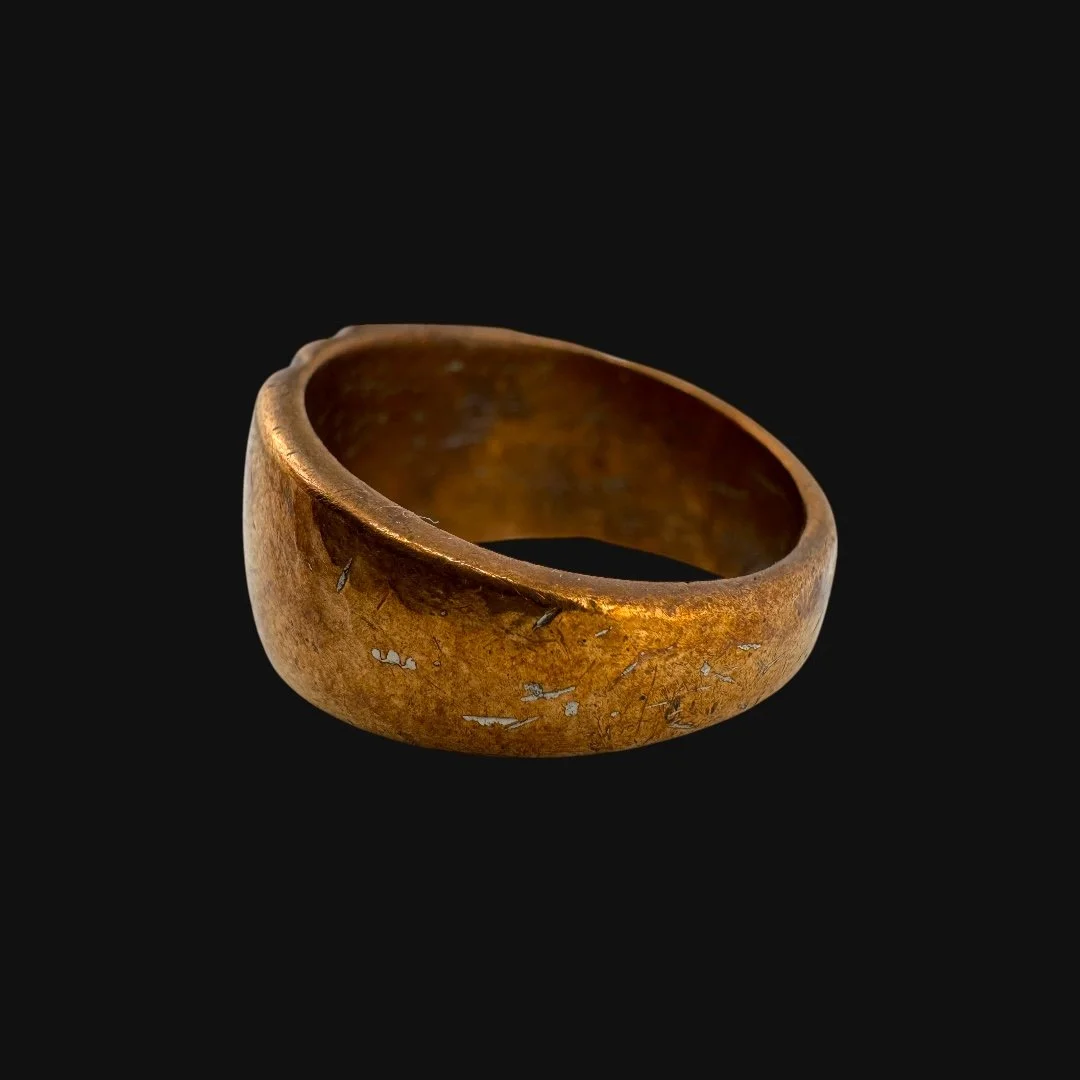 Image 4 of 9
Image 4 of 9

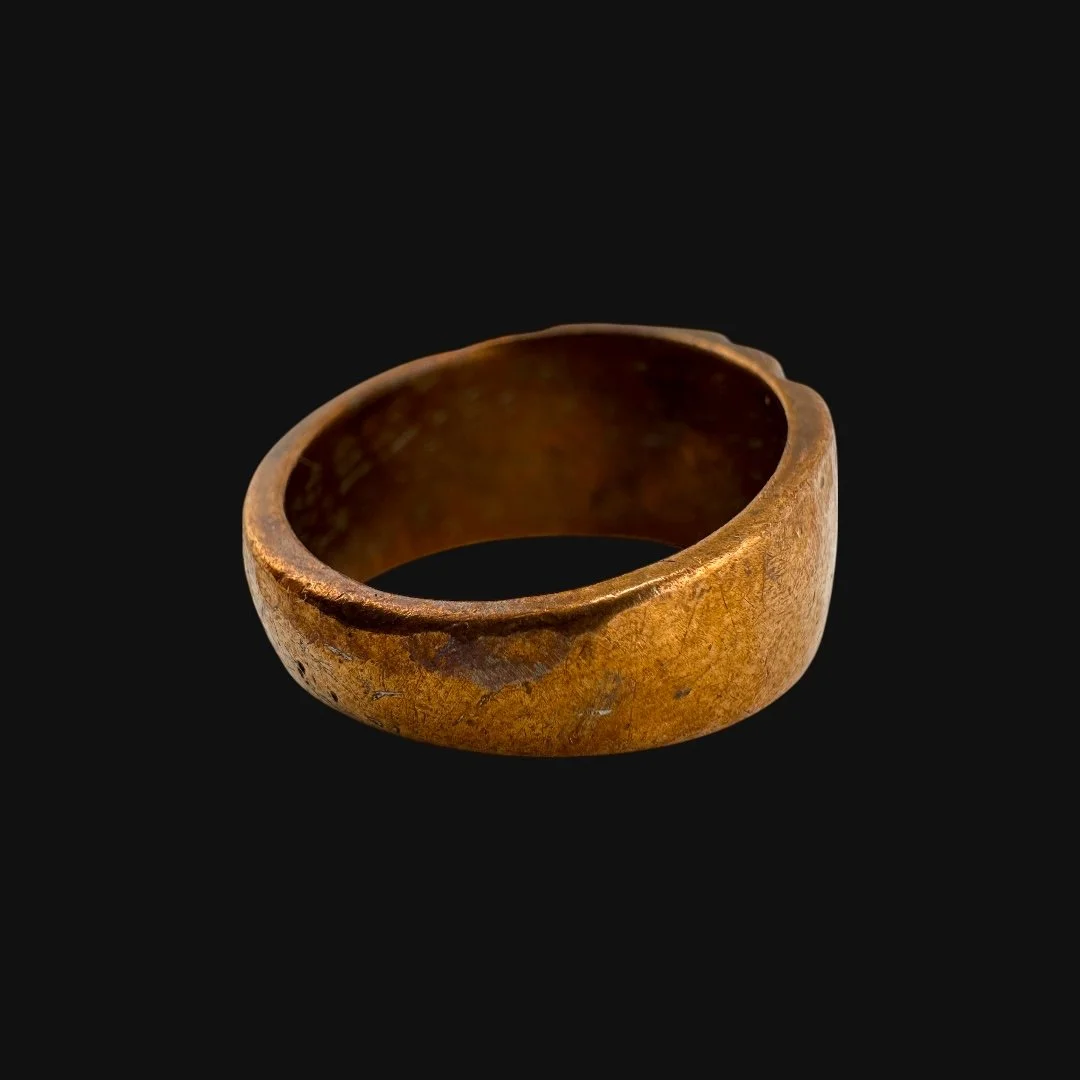 Image 5 of 9
Image 5 of 9

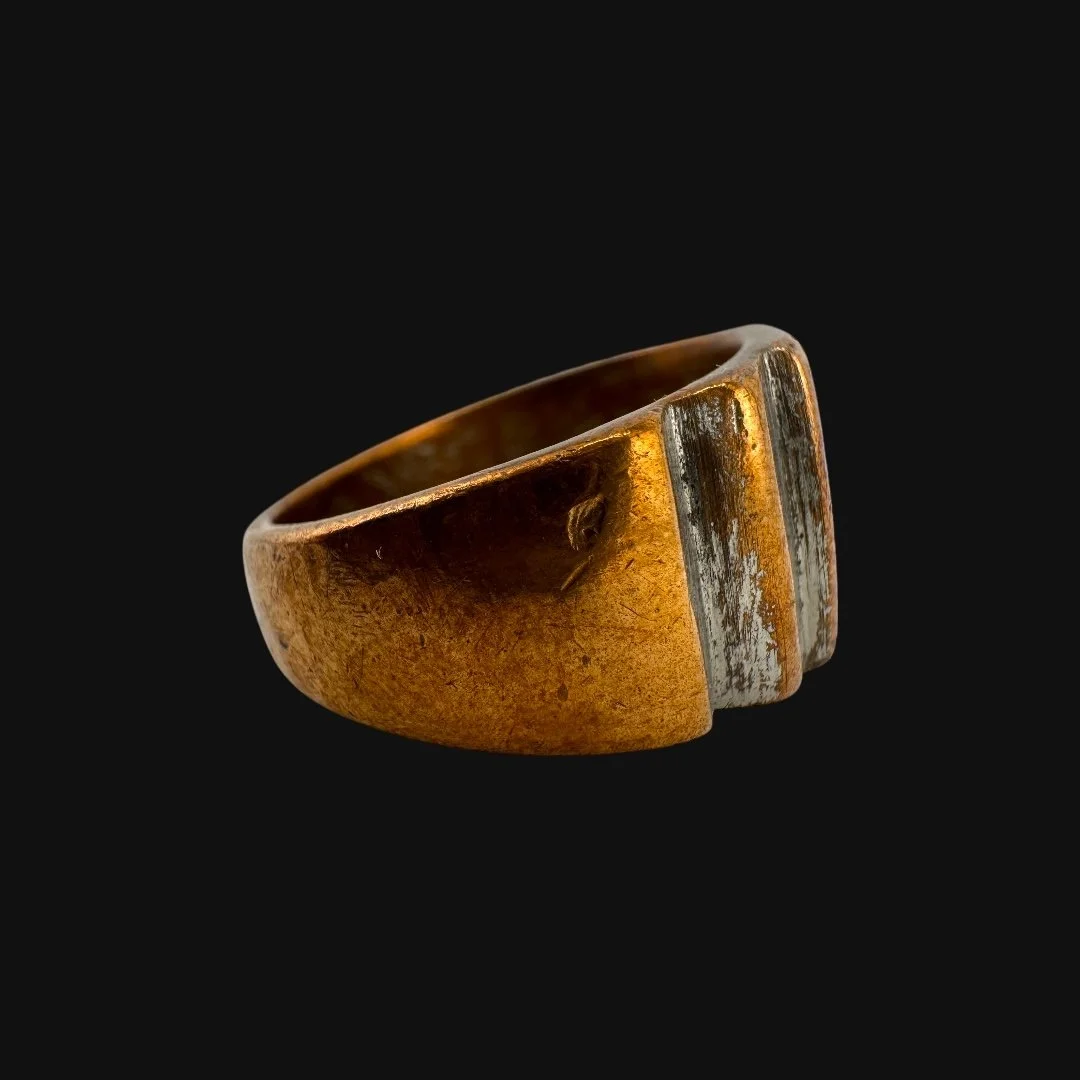 Image 6 of 9
Image 6 of 9

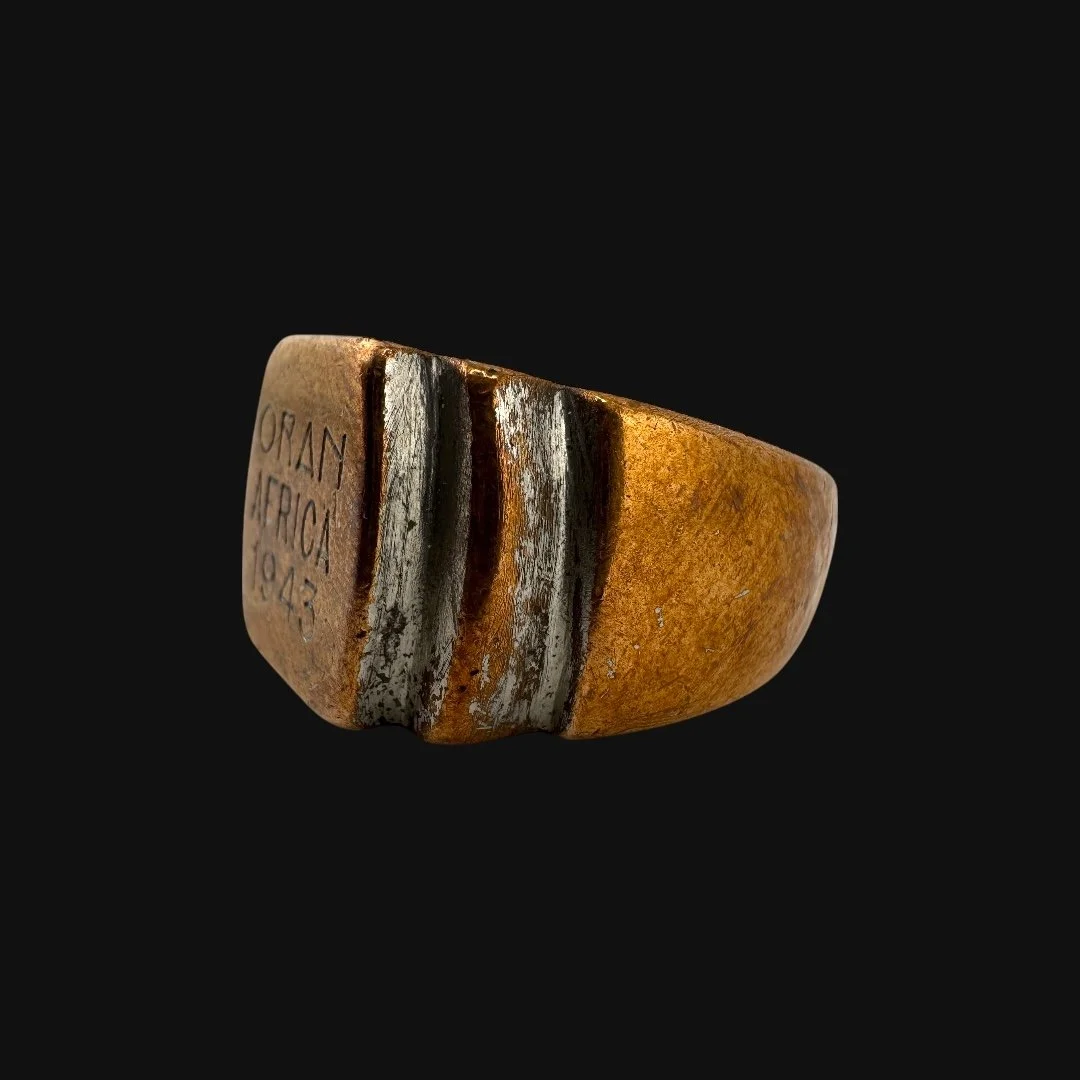 Image 7 of 9
Image 7 of 9

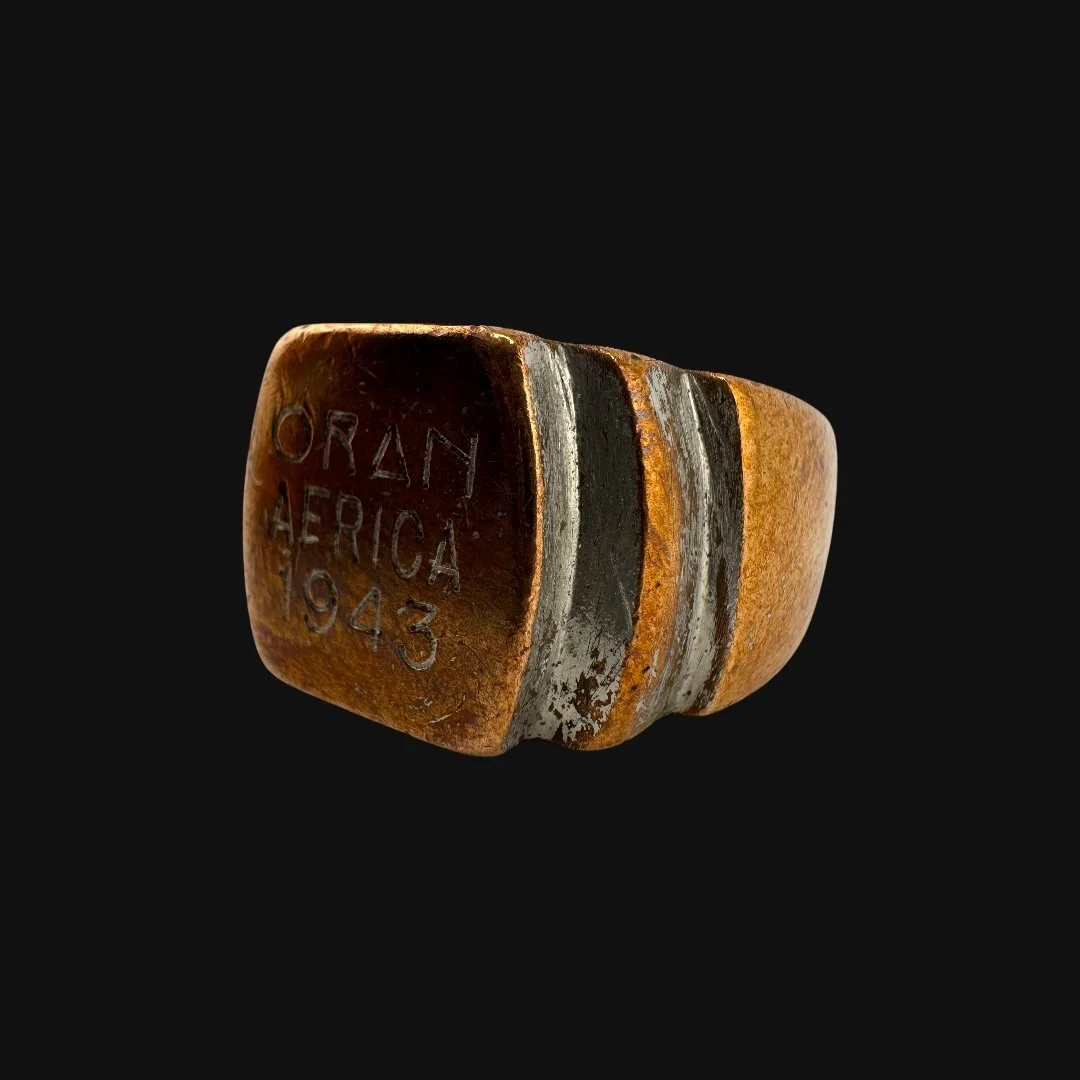 Image 8 of 9
Image 8 of 9

 Image 9 of 9
Image 9 of 9










Original WWII “ORAN AFRICA 1943” U.S. & Allied Soldier Handmade Combat Ring – Fired Shell Casing – Mediterranean Theater (Size 11.5)
Comes with a hand-signed C.O.A. and a full historical research write-up
From: World War II
Dated: 1943
Ring Size: 11.5 (US)
Material: Fired Shell Casing/Discarded Battlefield Material
Theater: Mediterranean Theater (Operation Torch)
Wearable History Collection:
This authentic 1943 WWII-era ring, preserved in its original and unaltered condition, combines exceptional craftsmanship with lasting durability, making it fully suitable for modern wear today. As part of our exclusive World War II “Wearable History Ring Collection,” it offers the rare opportunity to own and wear a genuine piece of World War II. Both a timeless accessory and a tangible link to the past, this truly one-of-a-kind ring stands as a wearable tribute to the courage and sacrifice of a generation.
Historical Significance to Oran (Africa):
Oran, Algeria, was a critical Allied objective during World War II, coming to prominence inOperation Torch, the first major Anglo-American combined operation, launched on November 8, 1942. Chosen for its deep-water harbor, road and rail links, and strategic position near the Strait of Gibraltar, Oran was essential for securing a foothold in North Africa. U.S. forces, including the 1st Infantry Division and 1st Armored Division, landed under heavy resistance from Vichy French forces. Naval battles unfolded in the harbor, with American destroyers and cruisers clashing with French ships before Oran surrendered on November 10, 1942.
By early 1943, Oran had been transformed into a major Allied logistics and command hub. Its harbor handled an unbroken flow of troop convoys, equipment, and supplies, while nearby La Sénia Airfield became a key base for reconnaissance and bombing missions over Axis positions in Tunisia. The city also served as a major medical evacuation point, treating casualties from the North African front.
After the Axis surrender in North Africa in May 1943, Oran became a principal staging ground forOperation Husky, the invasion of Sicily. Thousands of troops and vast quantities of supplies passed through its docks, making it one of the busiest military ports in the world. Its location allowed the Allies to secure western Mediterranean shipping lanes, enabling safe passage for convoys supporting the Italian Campaign.
Oran’s capture and use in 1943 demonstrated the power of coordinated Allied operations, integrating land, sea, and air forces to secure a logistical stronghold. Its role ensured the rapid buildup of forces for the Mediterranean campaign, directly contributing to the success of operations in Sicily, Italy, and beyond.
The Legacy Within This Ring:
This World War II ring, hand-inscribed “ORAN AFRICA 1943,” was skillfully crafted in theater from fired shell casings, fragments, and other discarded wartime materials left behind after the battles that secured the city. Such rings were often made by soldiers as personal keepsakes, transforming the debris of conflict into lasting symbols of survival, resilience, and remembrance. The Oran inscription ties it to the pivotal North African port captured during Operation Torch and transformed in 1943 into a major Allied logistical hub. From its busy harbor and nearby airfields, troops and supplies flowed toward the Tunisian front and later to the invasion forces bound for Sicily. More than a piece of wartime artistry, this ring holds the physical essence of the battlefield. It reflects the ingenuity of its maker, the realities of combat in the Mediterranean theater, and the memory of a campaign that shifted the balance of power in the region and paved the way for Allied advances into Europe.
Comes with a hand-signed C.O.A. and a full historical research write-up
From: World War II
Dated: 1943
Ring Size: 11.5 (US)
Material: Fired Shell Casing/Discarded Battlefield Material
Theater: Mediterranean Theater (Operation Torch)
Wearable History Collection:
This authentic 1943 WWII-era ring, preserved in its original and unaltered condition, combines exceptional craftsmanship with lasting durability, making it fully suitable for modern wear today. As part of our exclusive World War II “Wearable History Ring Collection,” it offers the rare opportunity to own and wear a genuine piece of World War II. Both a timeless accessory and a tangible link to the past, this truly one-of-a-kind ring stands as a wearable tribute to the courage and sacrifice of a generation.
Historical Significance to Oran (Africa):
Oran, Algeria, was a critical Allied objective during World War II, coming to prominence inOperation Torch, the first major Anglo-American combined operation, launched on November 8, 1942. Chosen for its deep-water harbor, road and rail links, and strategic position near the Strait of Gibraltar, Oran was essential for securing a foothold in North Africa. U.S. forces, including the 1st Infantry Division and 1st Armored Division, landed under heavy resistance from Vichy French forces. Naval battles unfolded in the harbor, with American destroyers and cruisers clashing with French ships before Oran surrendered on November 10, 1942.
By early 1943, Oran had been transformed into a major Allied logistics and command hub. Its harbor handled an unbroken flow of troop convoys, equipment, and supplies, while nearby La Sénia Airfield became a key base for reconnaissance and bombing missions over Axis positions in Tunisia. The city also served as a major medical evacuation point, treating casualties from the North African front.
After the Axis surrender in North Africa in May 1943, Oran became a principal staging ground forOperation Husky, the invasion of Sicily. Thousands of troops and vast quantities of supplies passed through its docks, making it one of the busiest military ports in the world. Its location allowed the Allies to secure western Mediterranean shipping lanes, enabling safe passage for convoys supporting the Italian Campaign.
Oran’s capture and use in 1943 demonstrated the power of coordinated Allied operations, integrating land, sea, and air forces to secure a logistical stronghold. Its role ensured the rapid buildup of forces for the Mediterranean campaign, directly contributing to the success of operations in Sicily, Italy, and beyond.
The Legacy Within This Ring:
This World War II ring, hand-inscribed “ORAN AFRICA 1943,” was skillfully crafted in theater from fired shell casings, fragments, and other discarded wartime materials left behind after the battles that secured the city. Such rings were often made by soldiers as personal keepsakes, transforming the debris of conflict into lasting symbols of survival, resilience, and remembrance. The Oran inscription ties it to the pivotal North African port captured during Operation Torch and transformed in 1943 into a major Allied logistical hub. From its busy harbor and nearby airfields, troops and supplies flowed toward the Tunisian front and later to the invasion forces bound for Sicily. More than a piece of wartime artistry, this ring holds the physical essence of the battlefield. It reflects the ingenuity of its maker, the realities of combat in the Mediterranean theater, and the memory of a campaign that shifted the balance of power in the region and paved the way for Allied advances into Europe.
